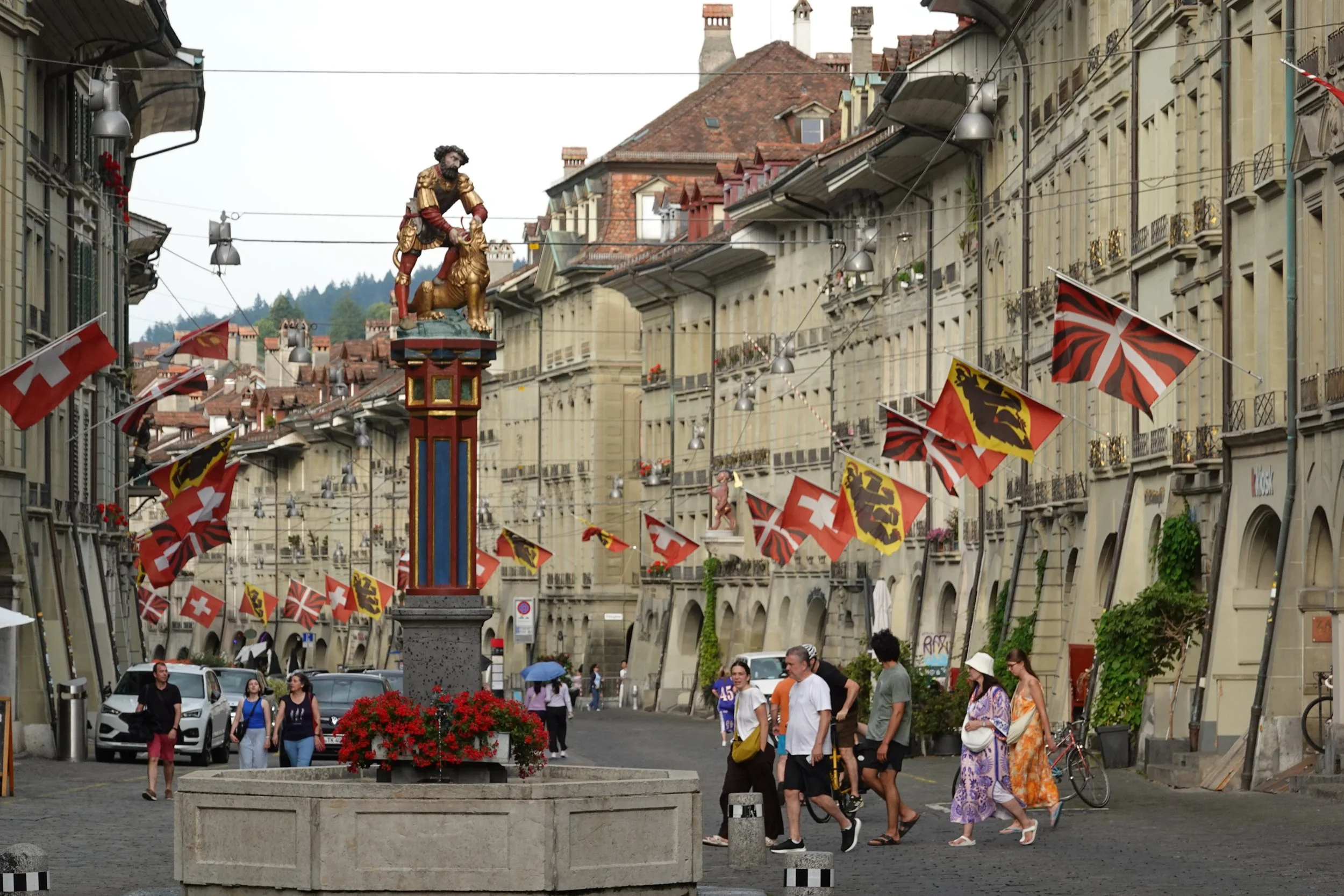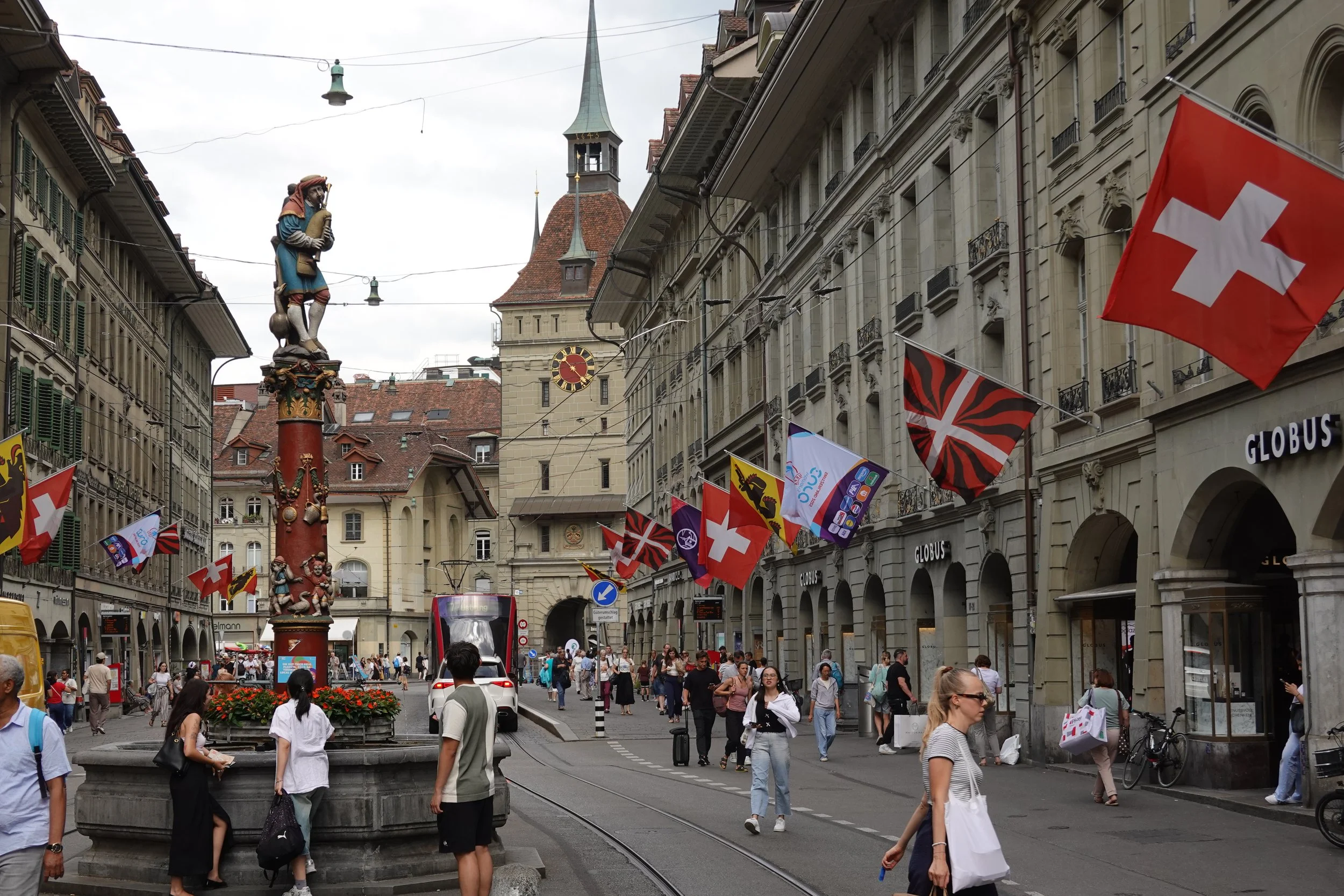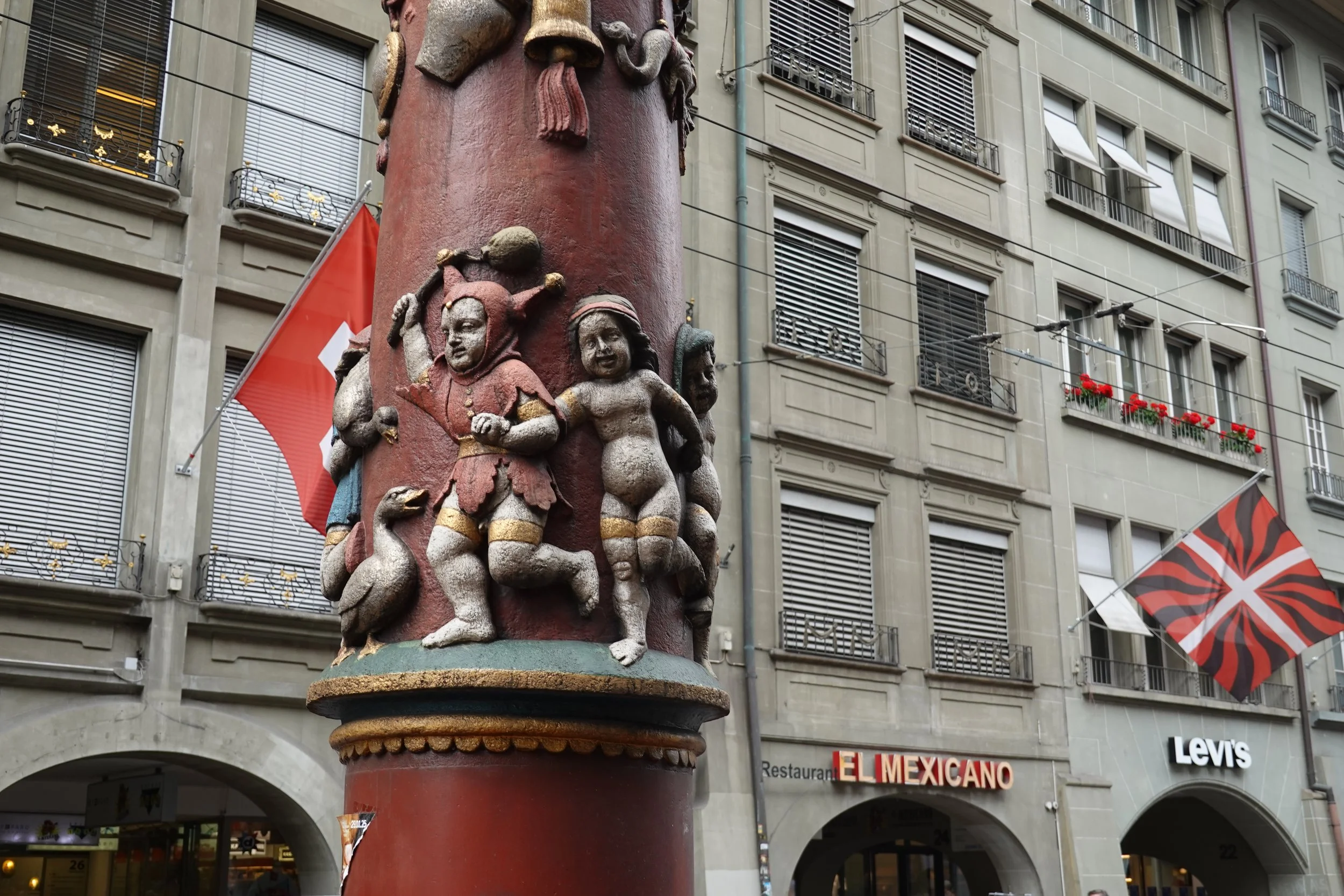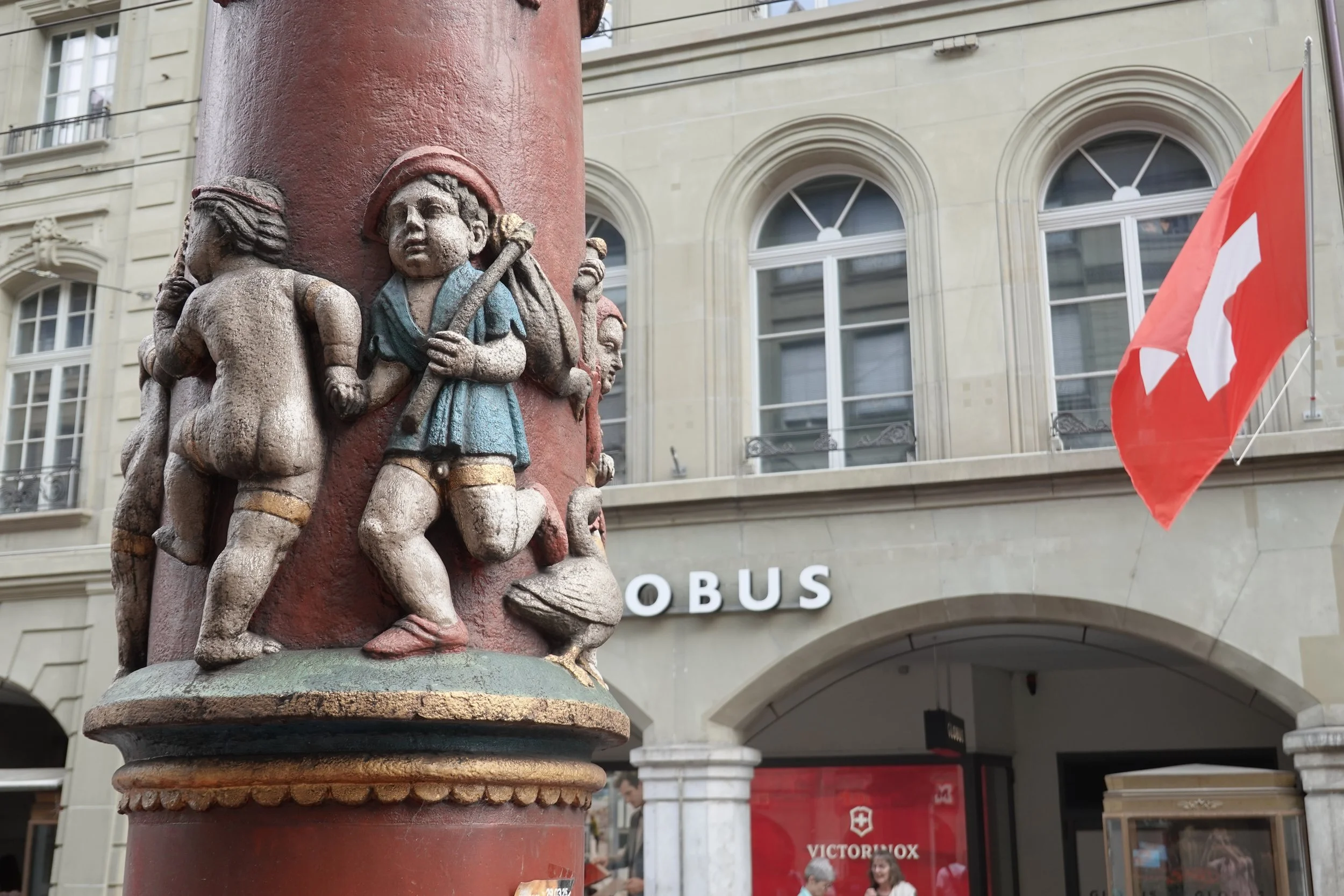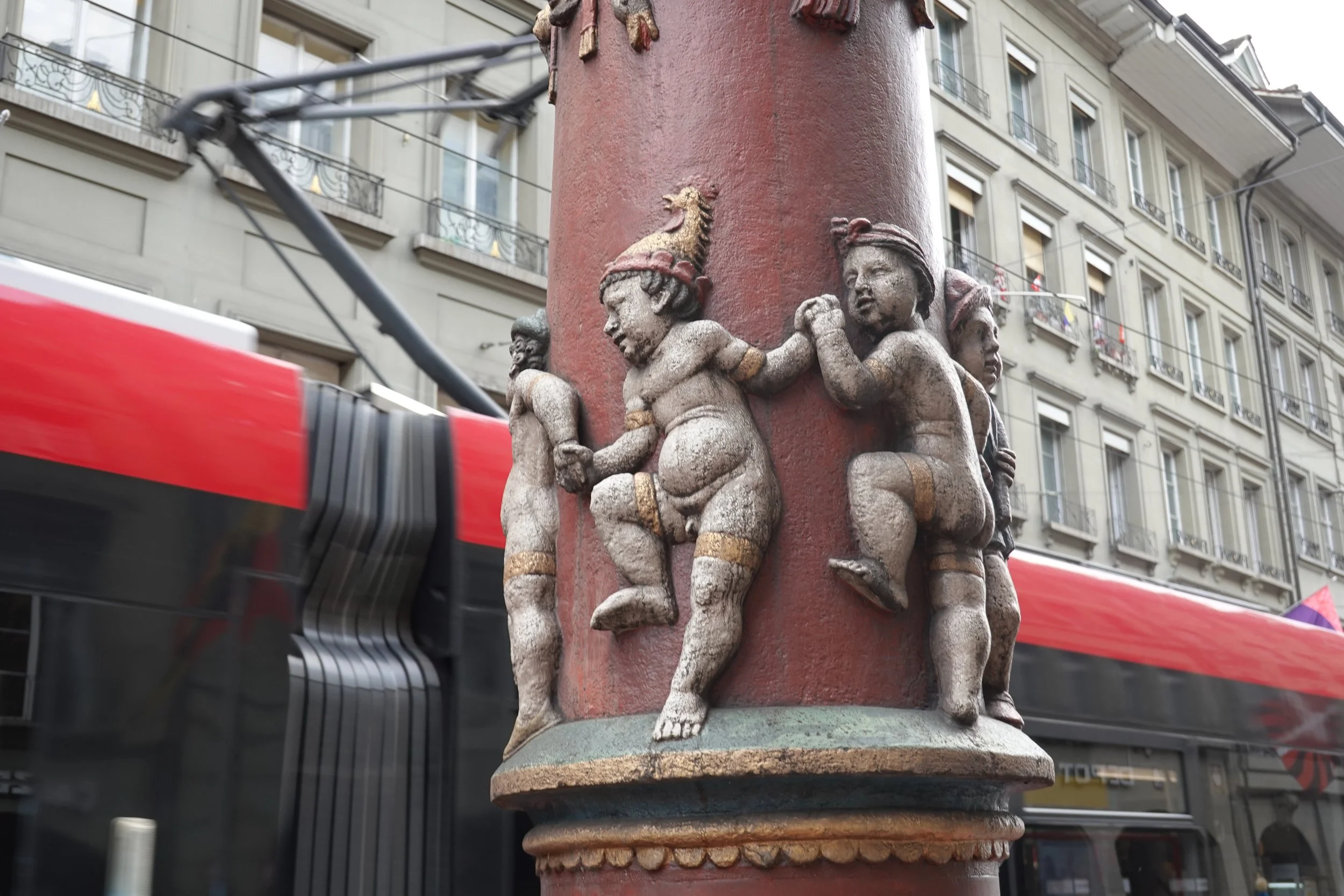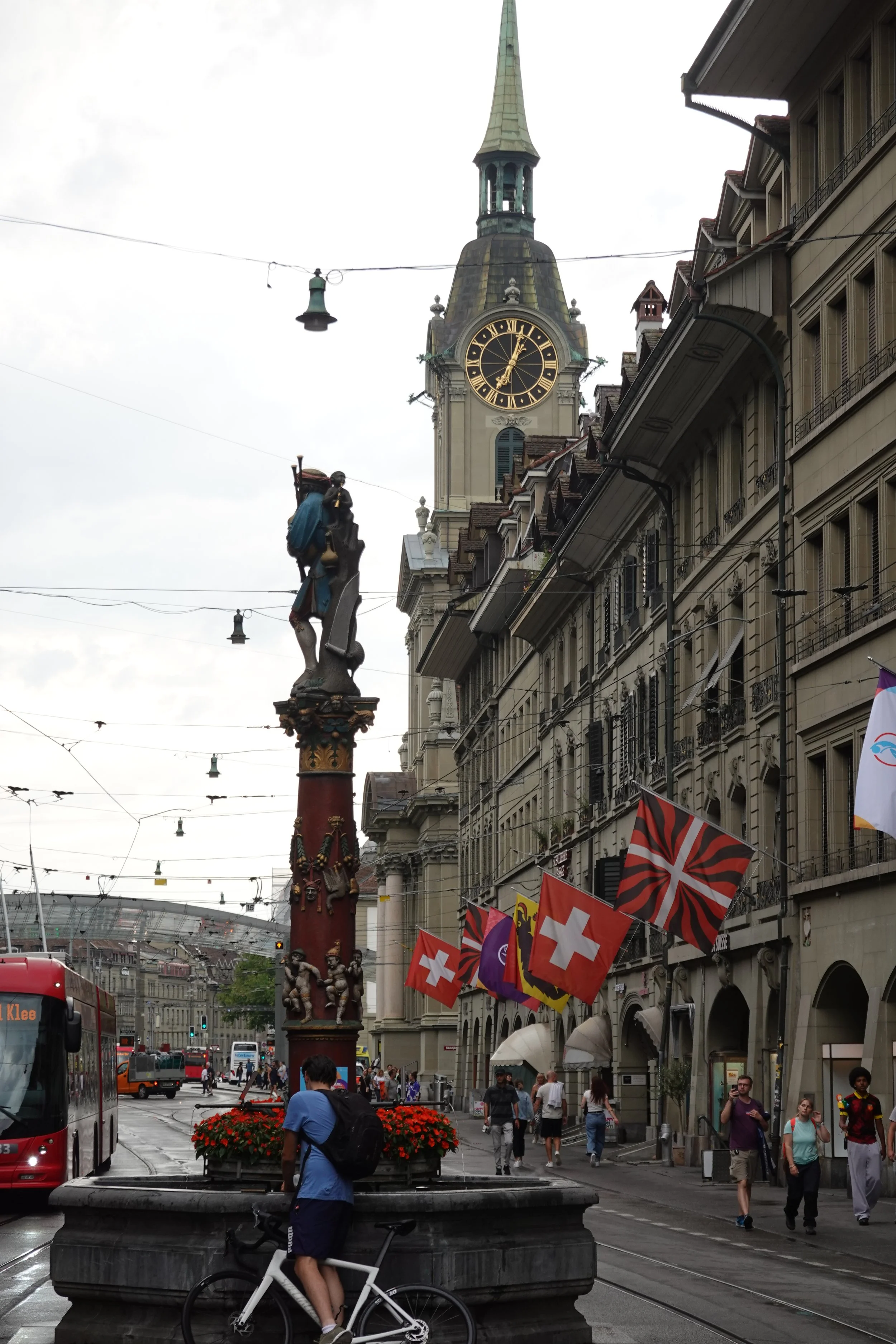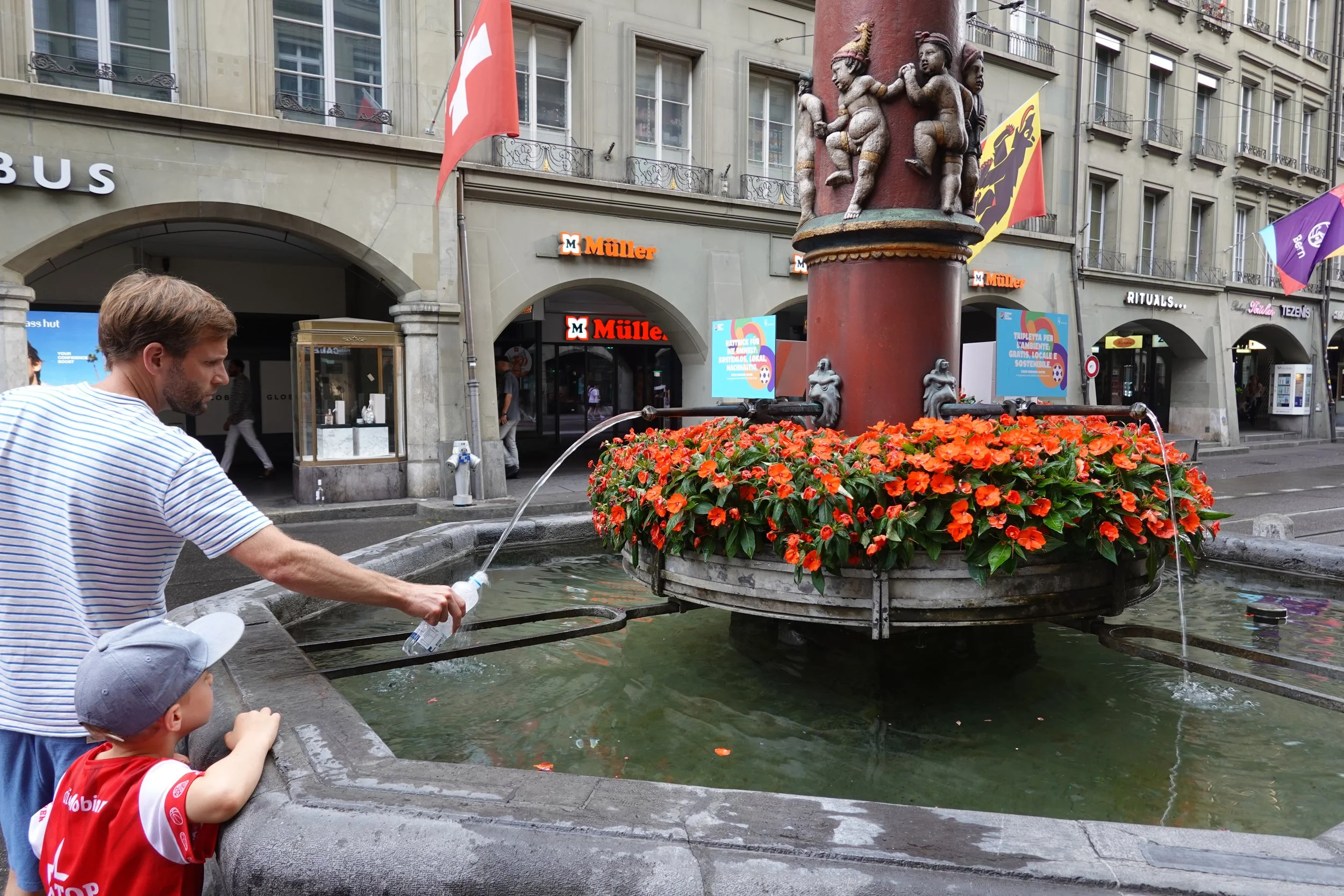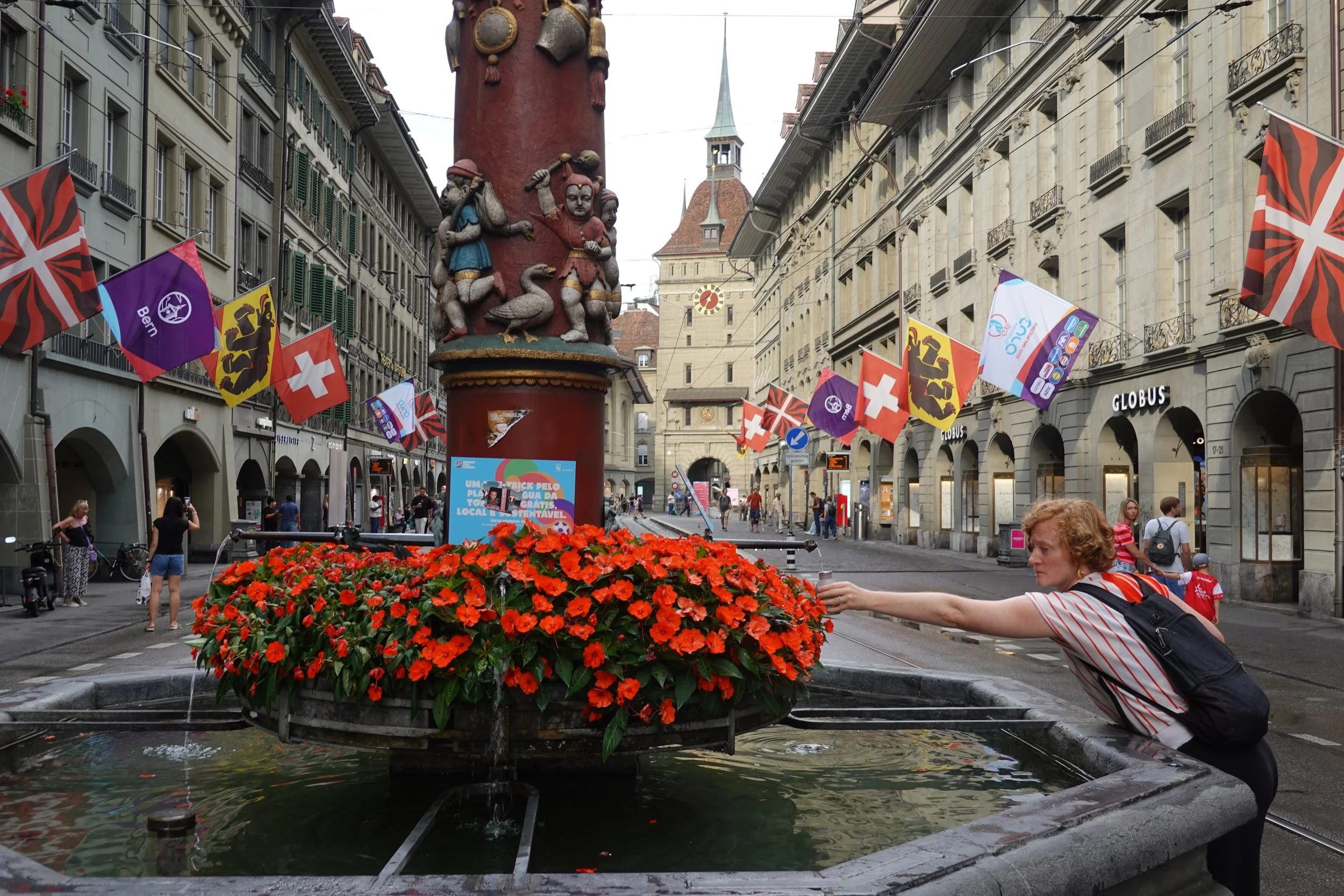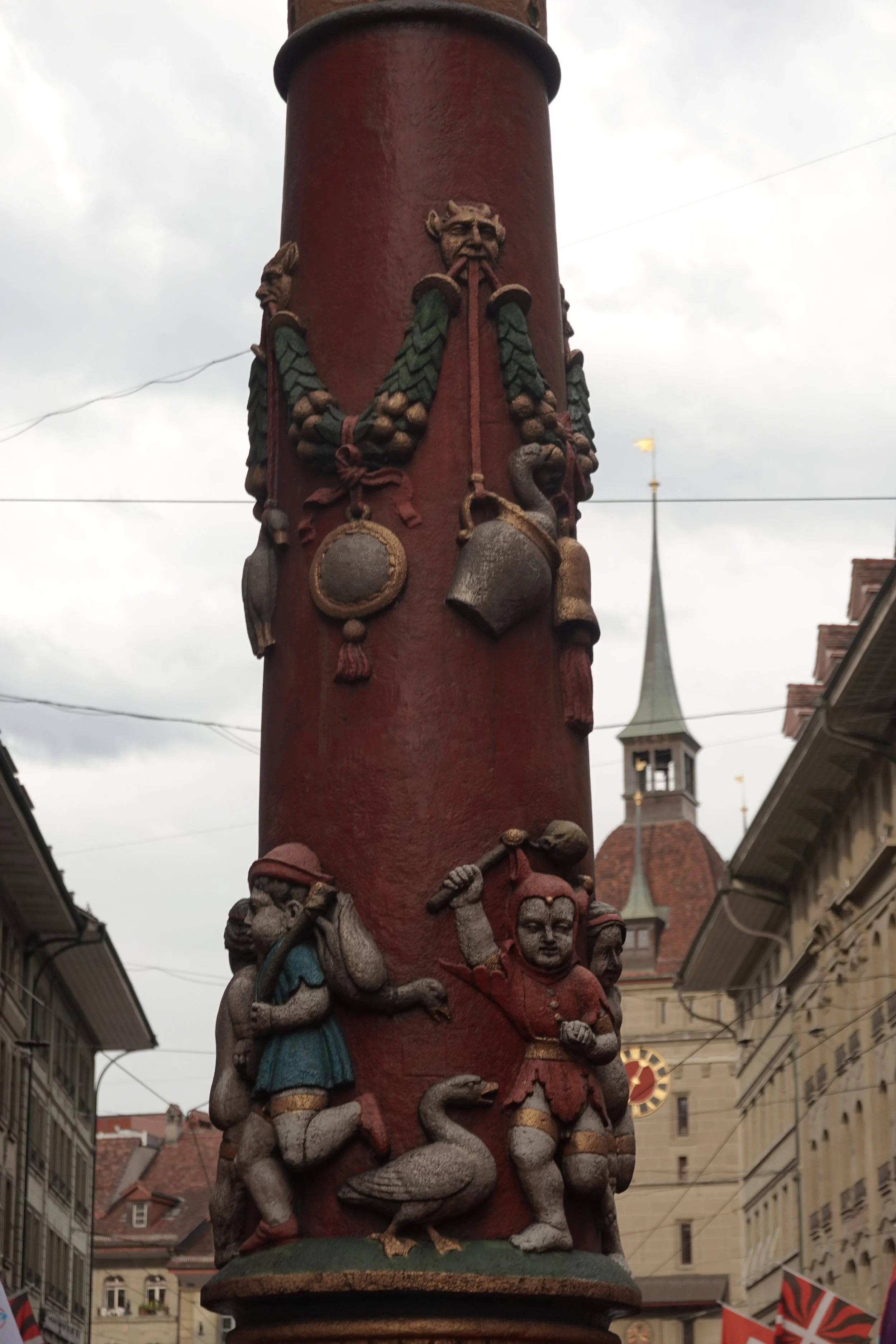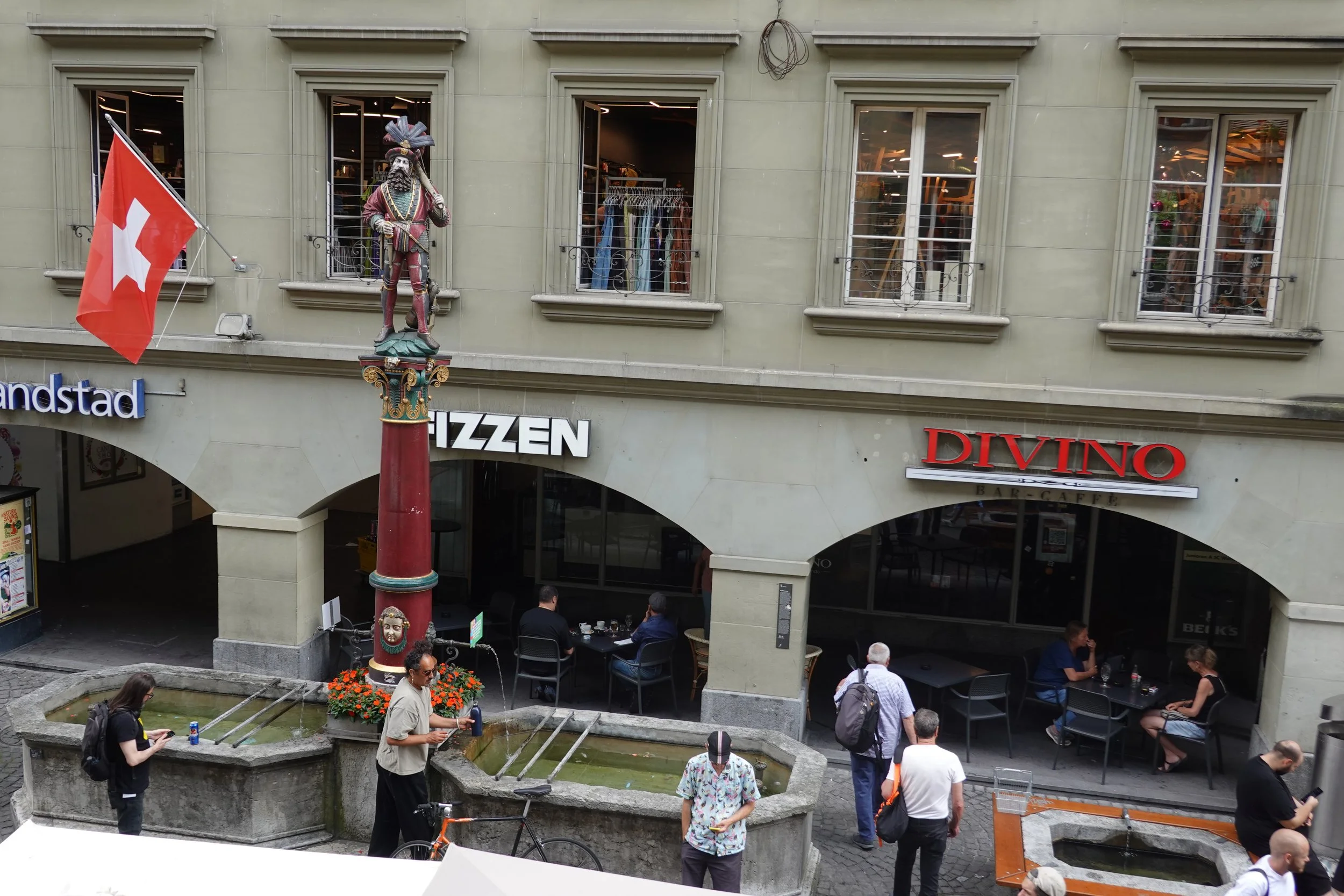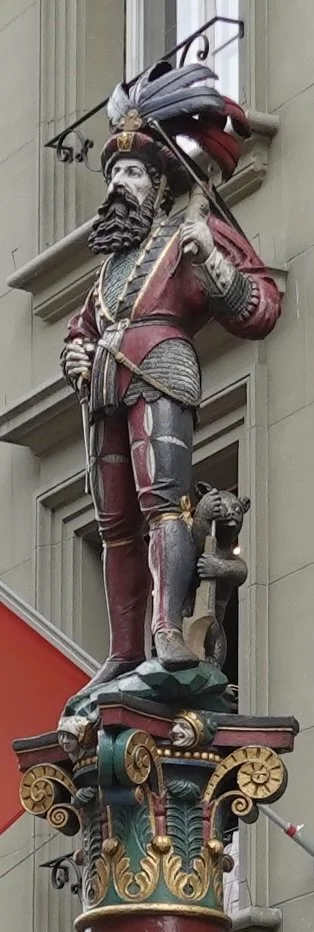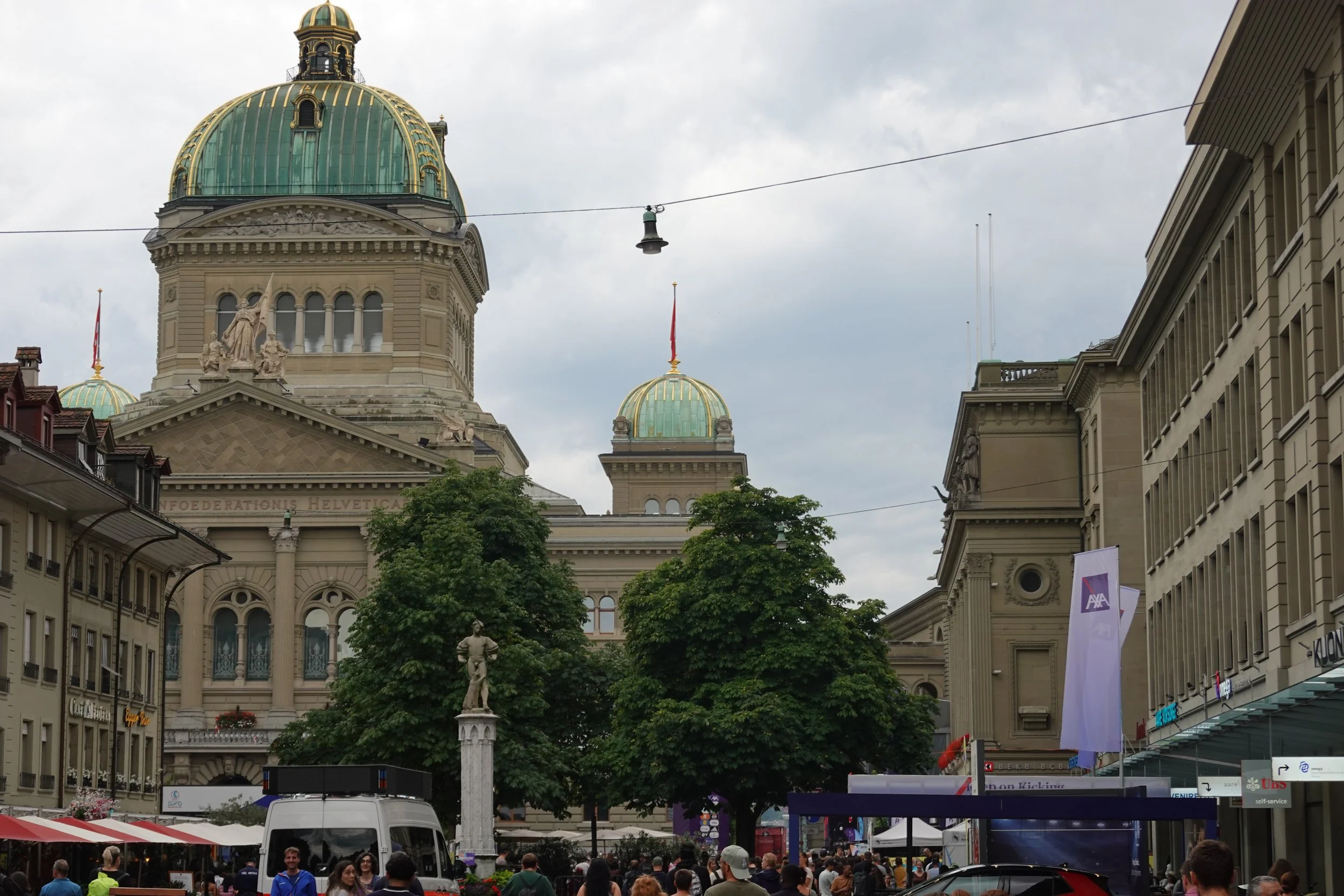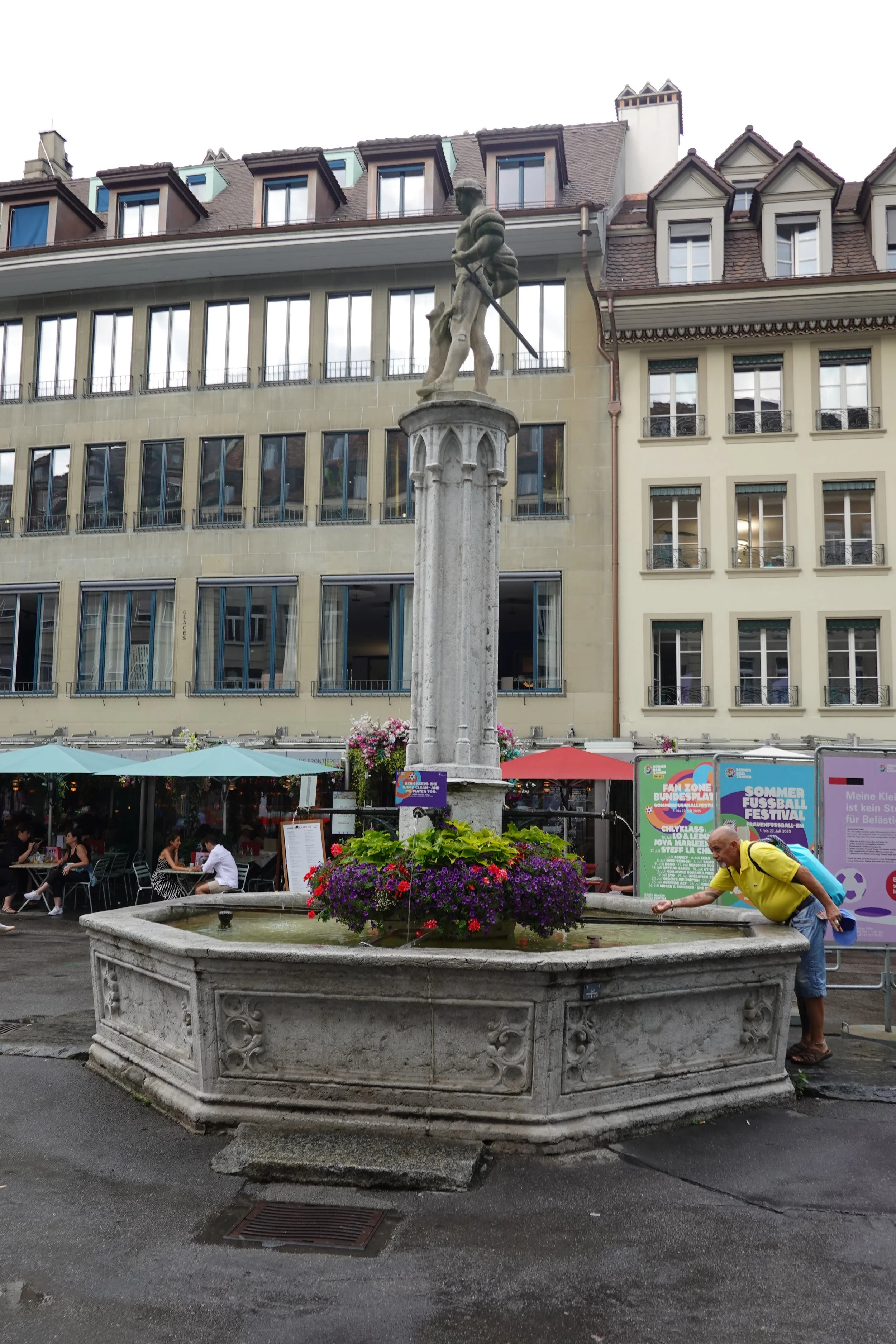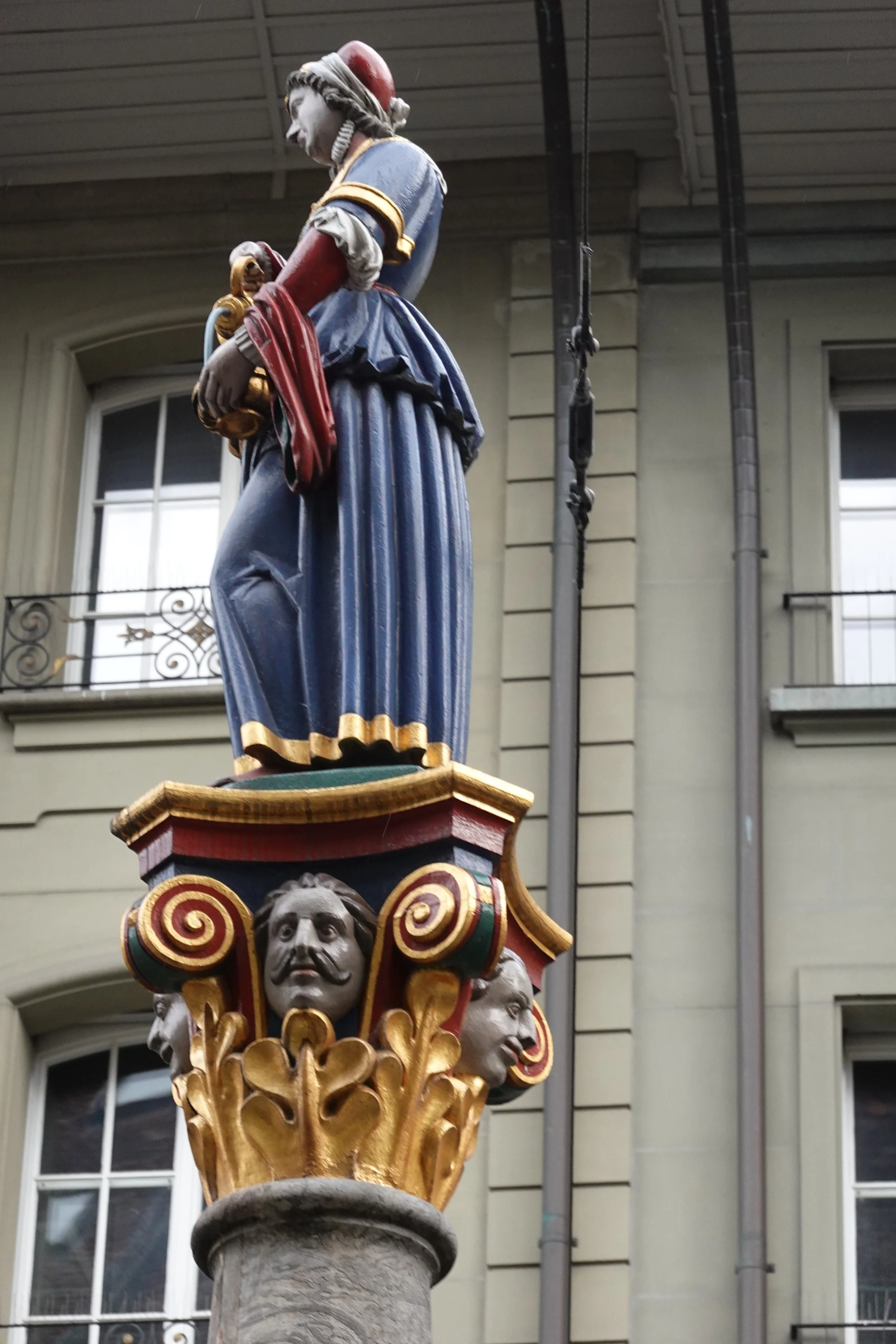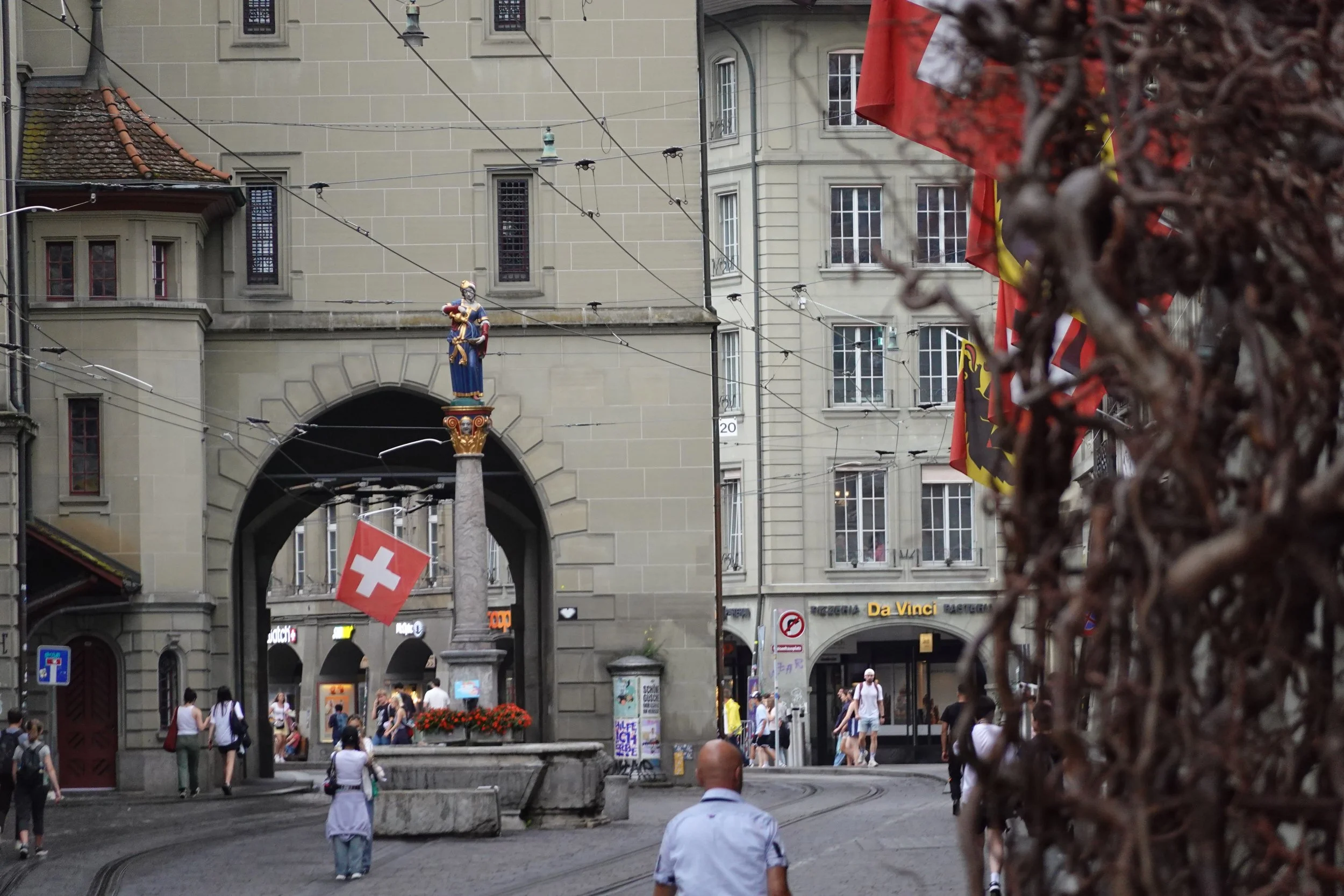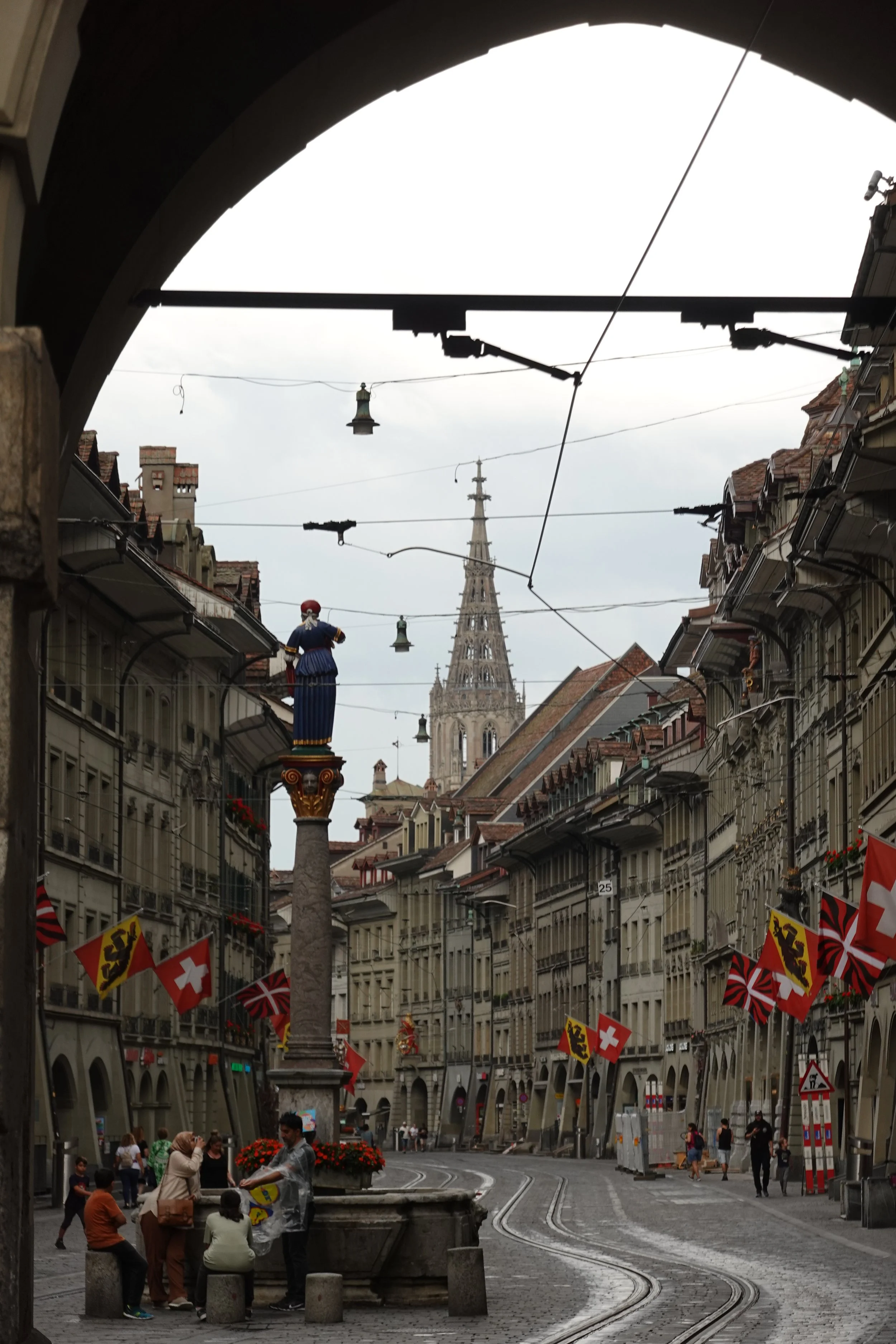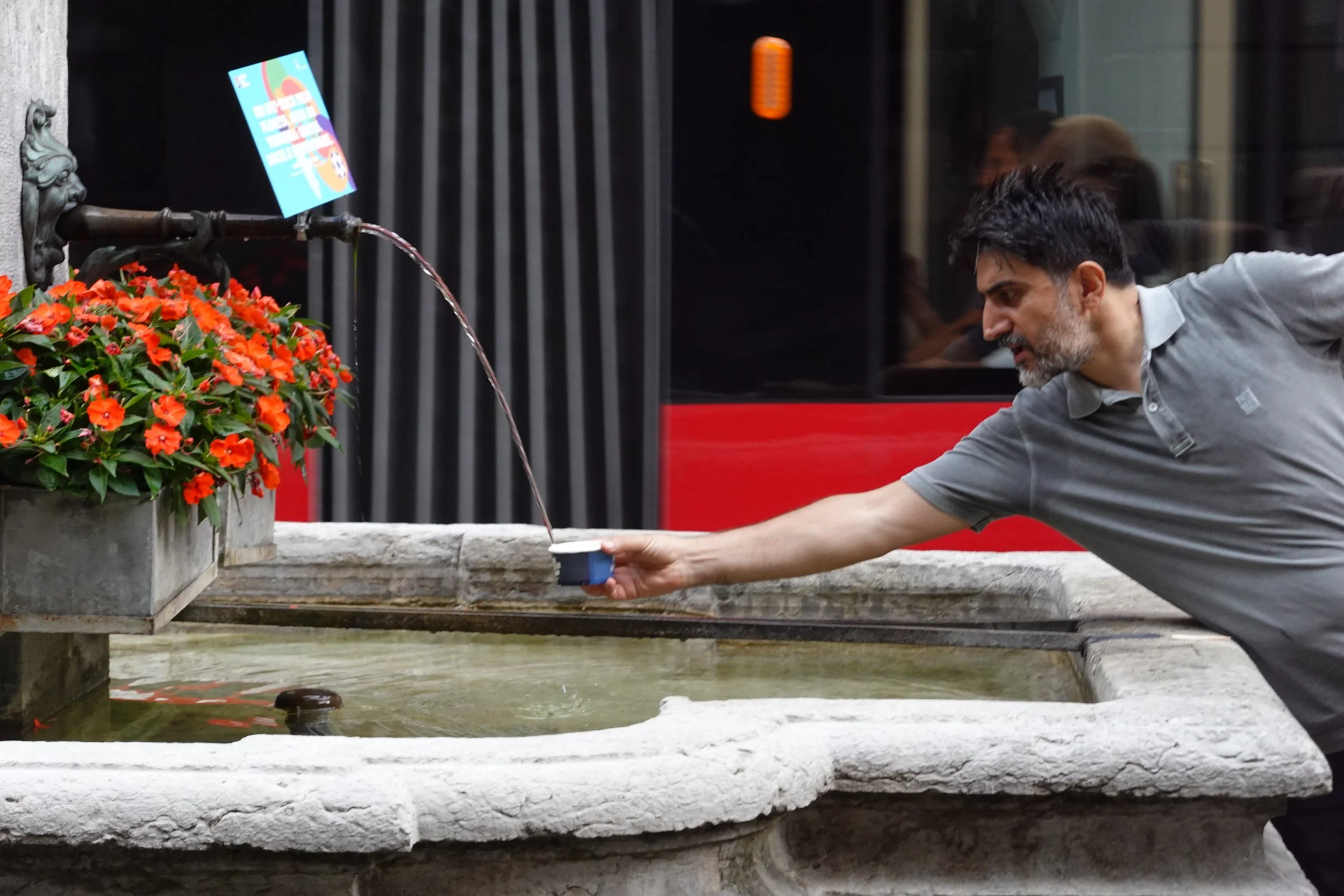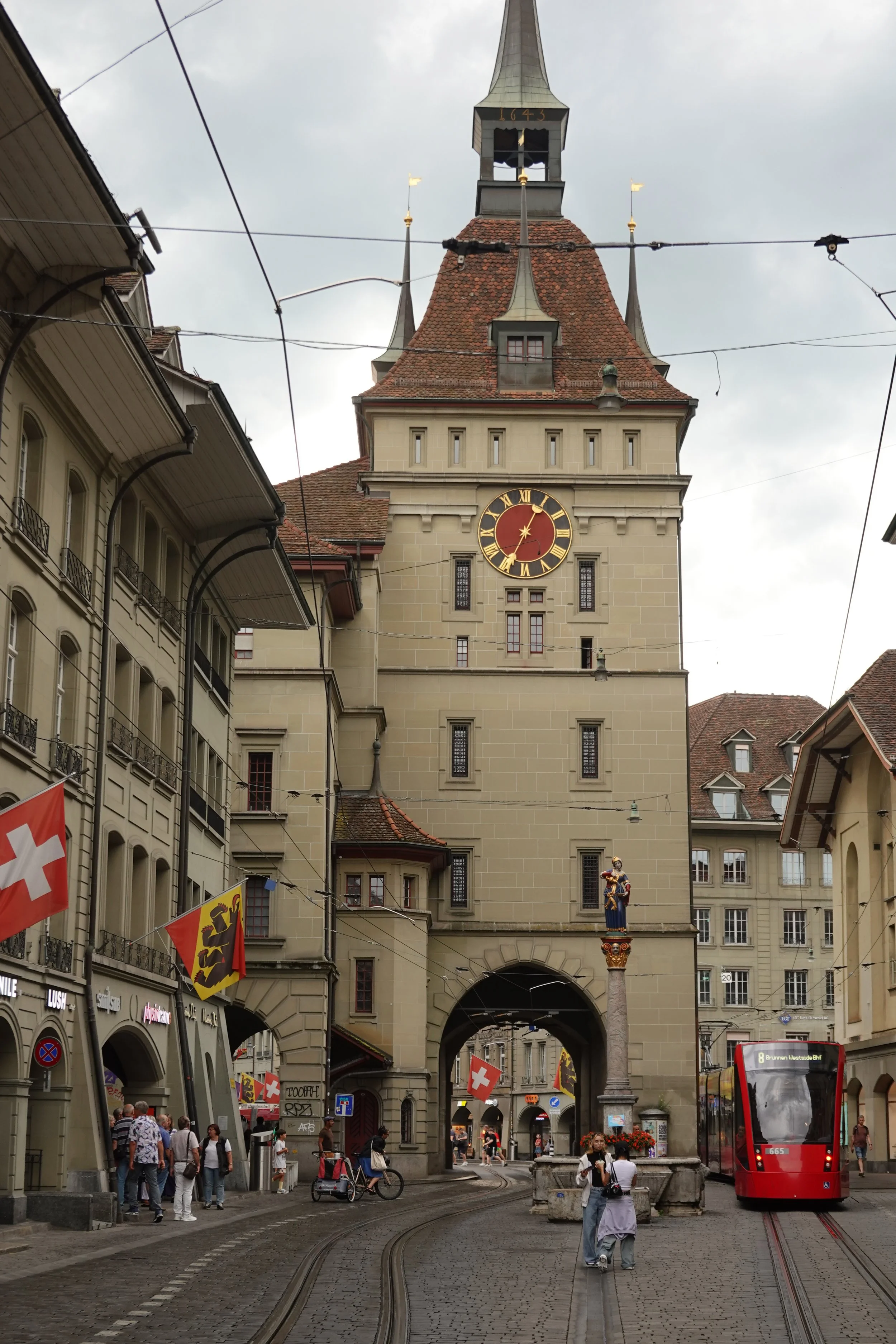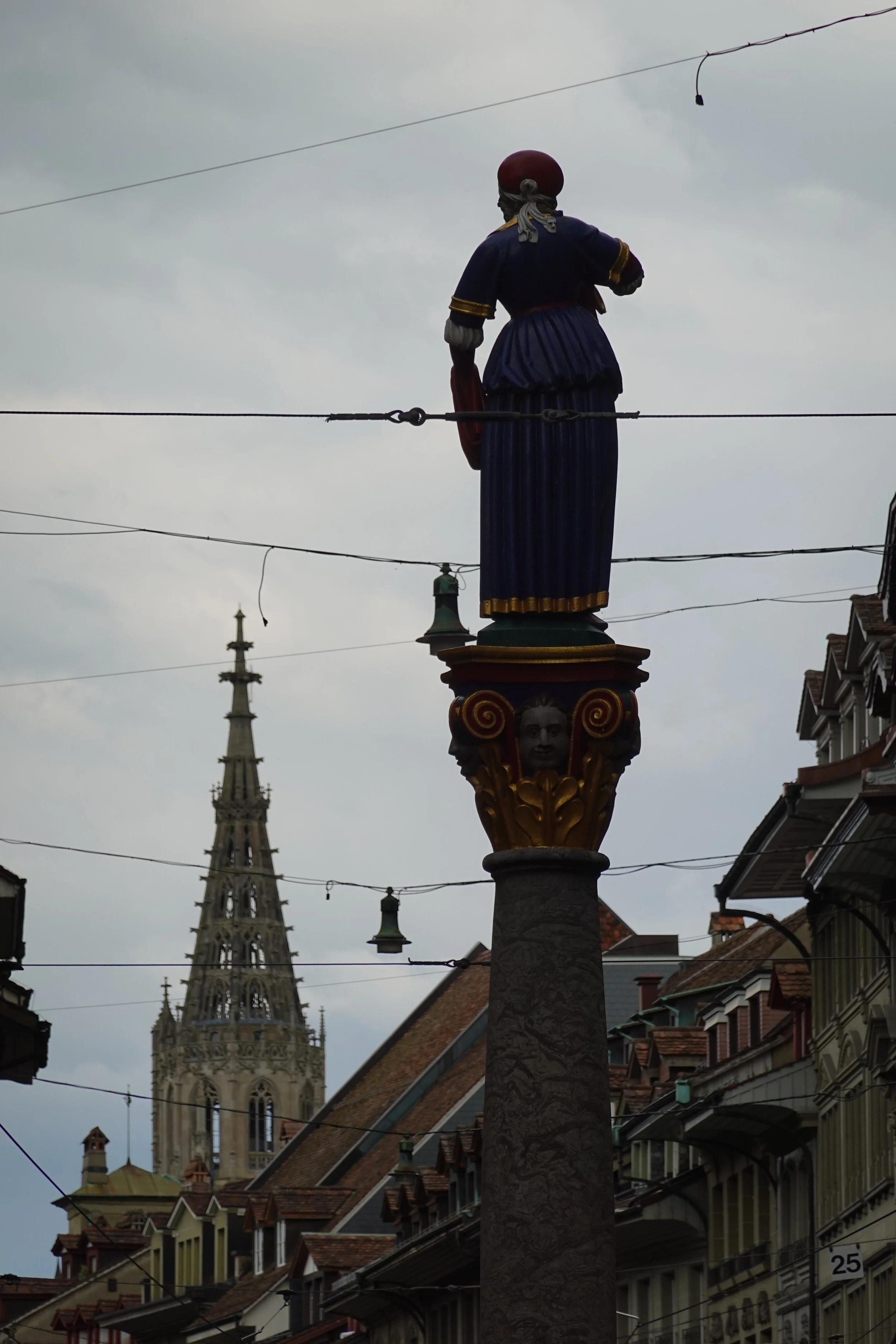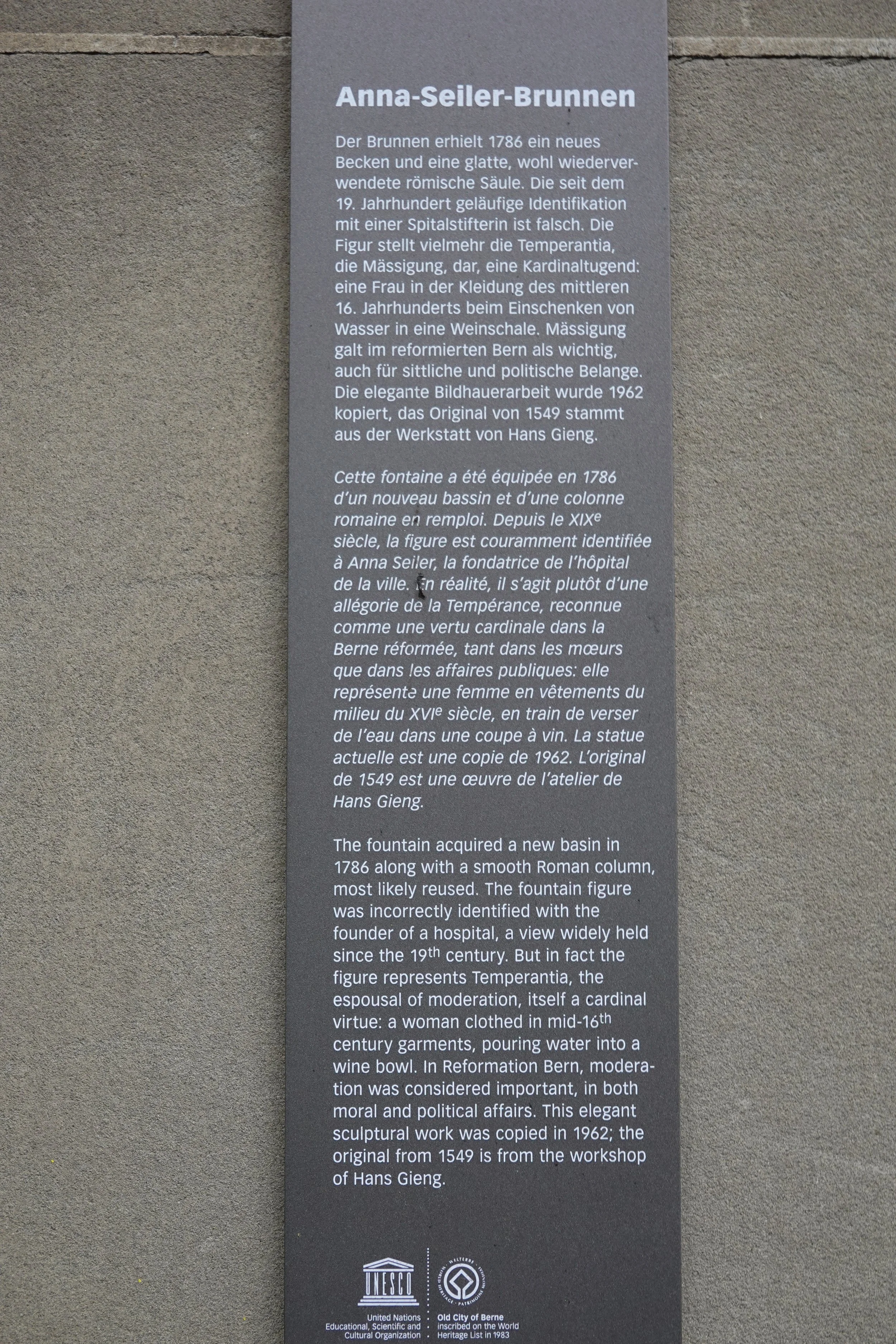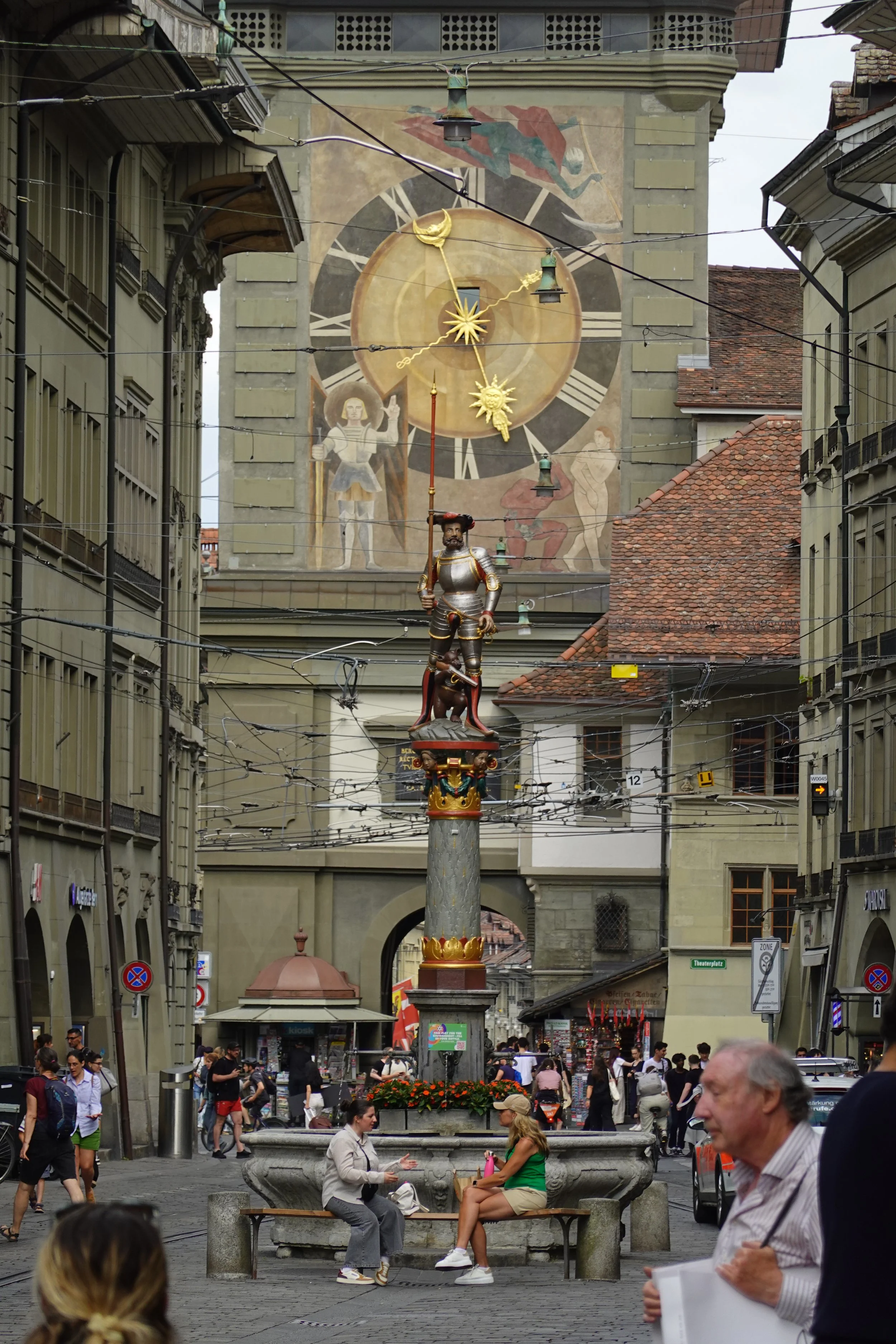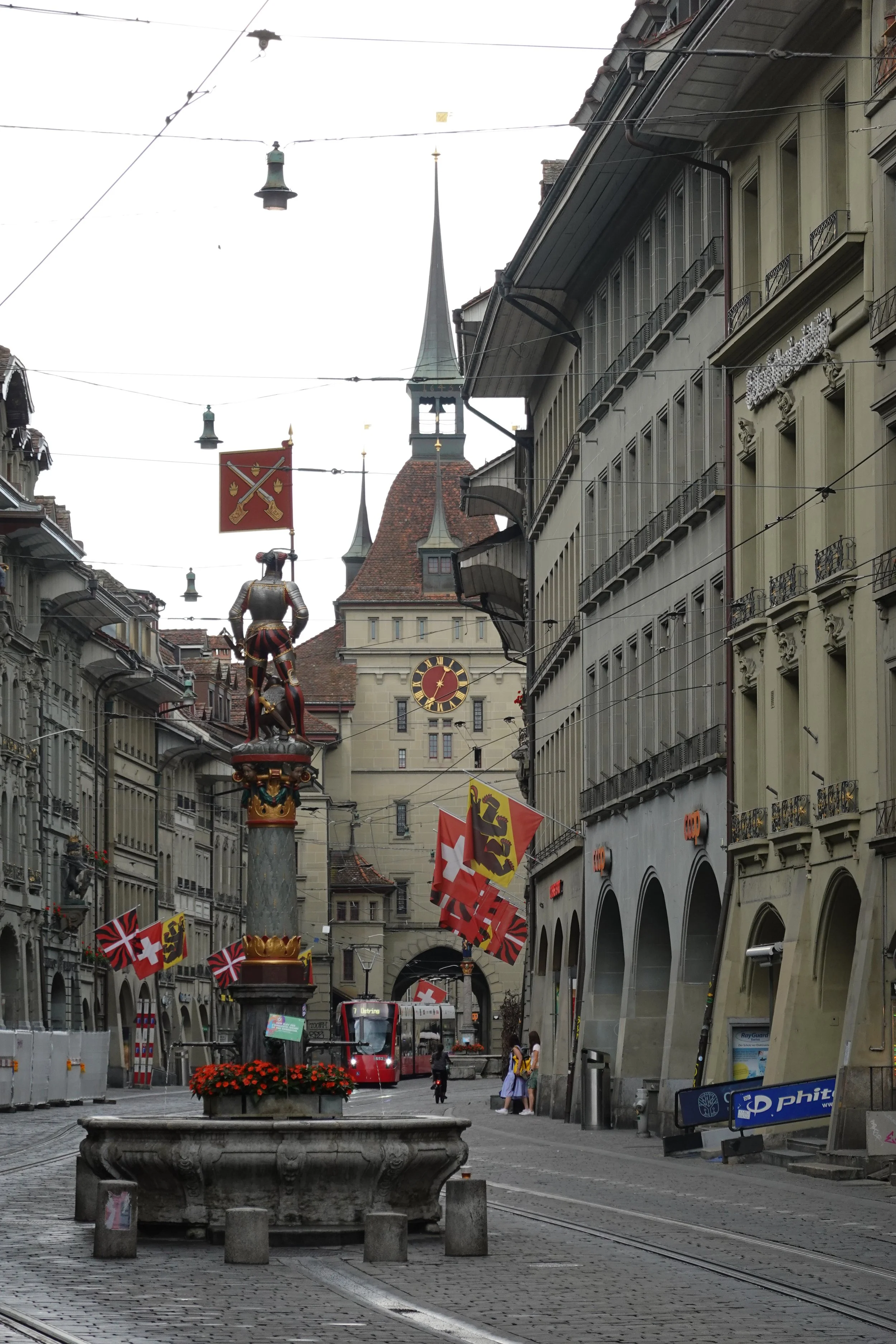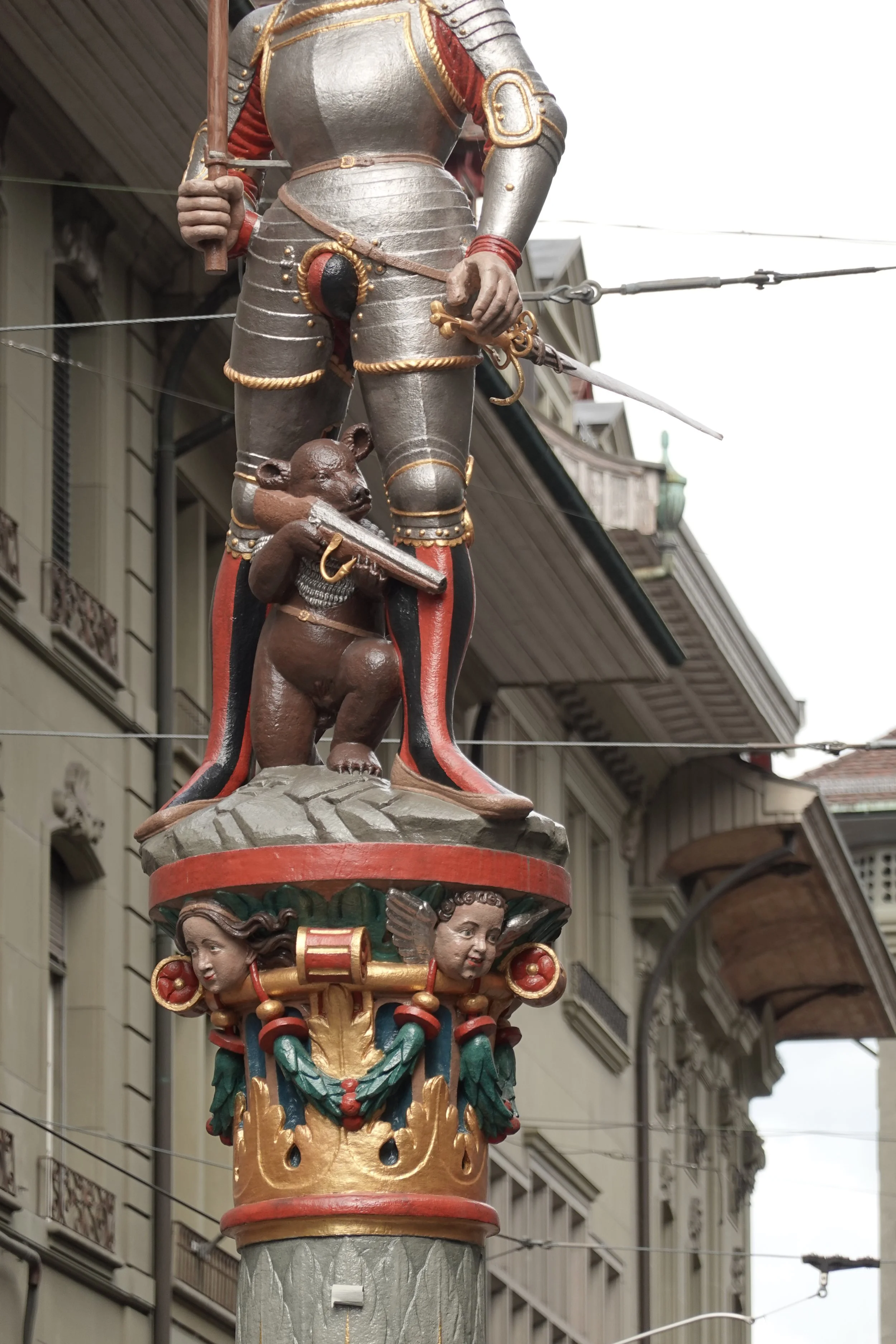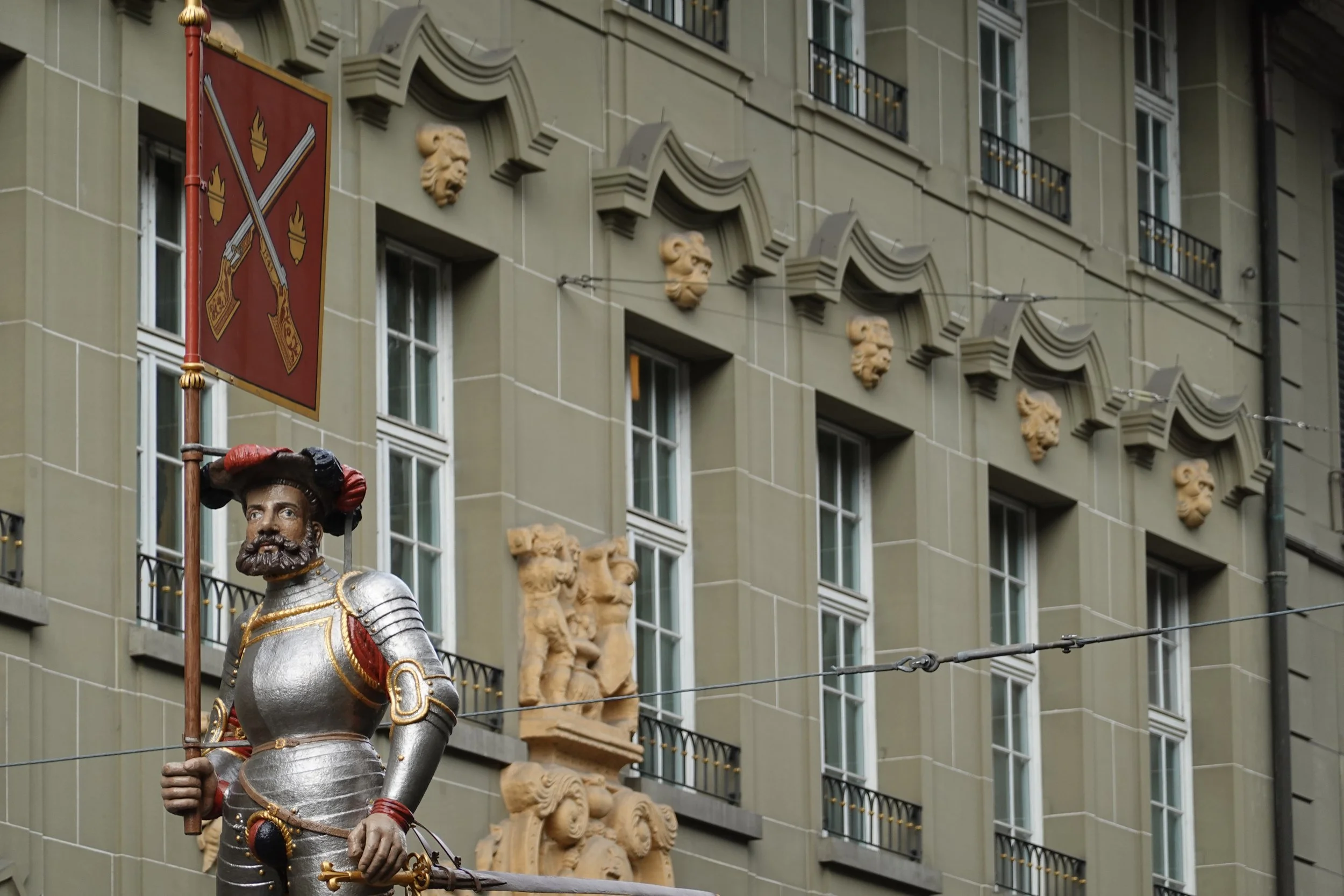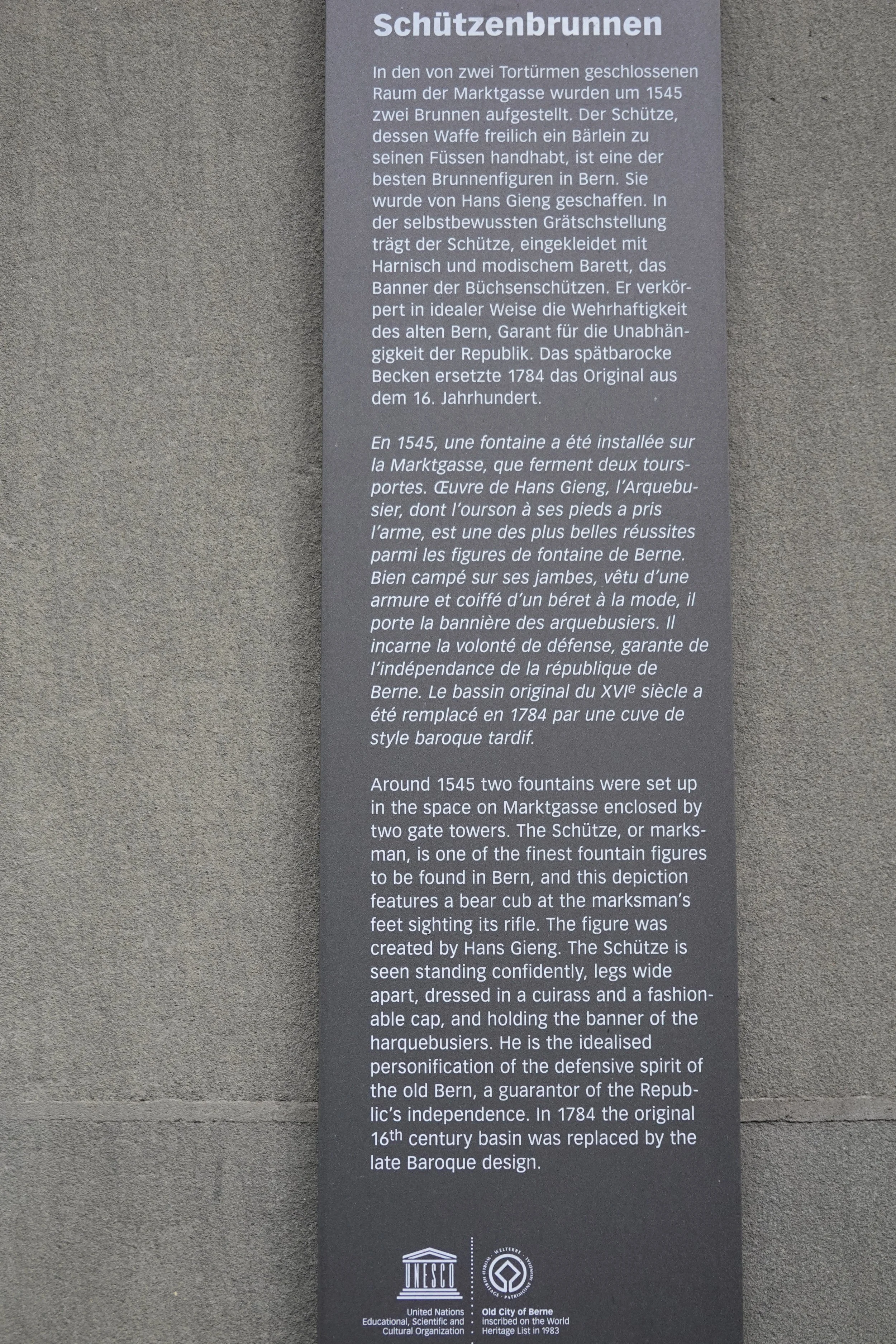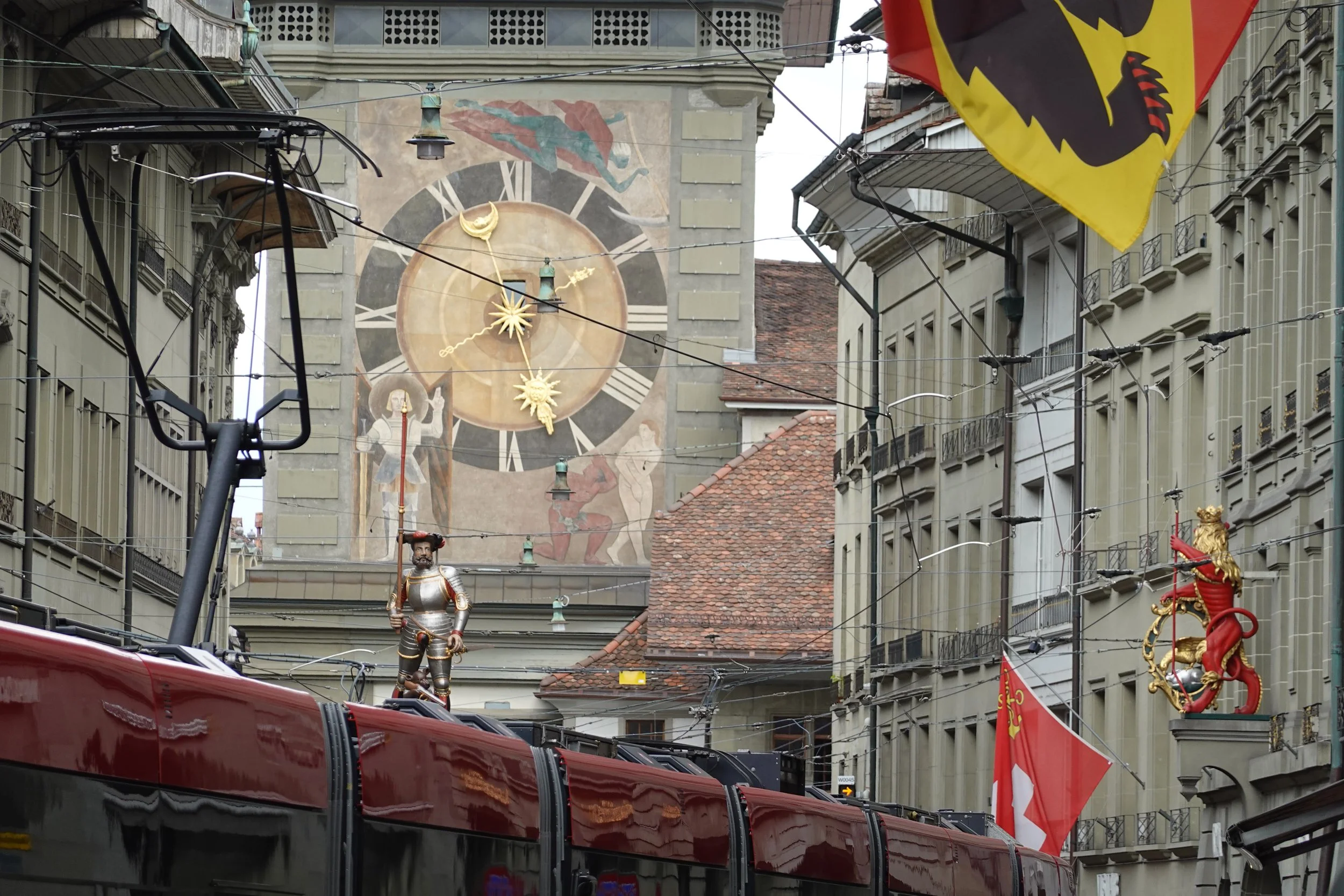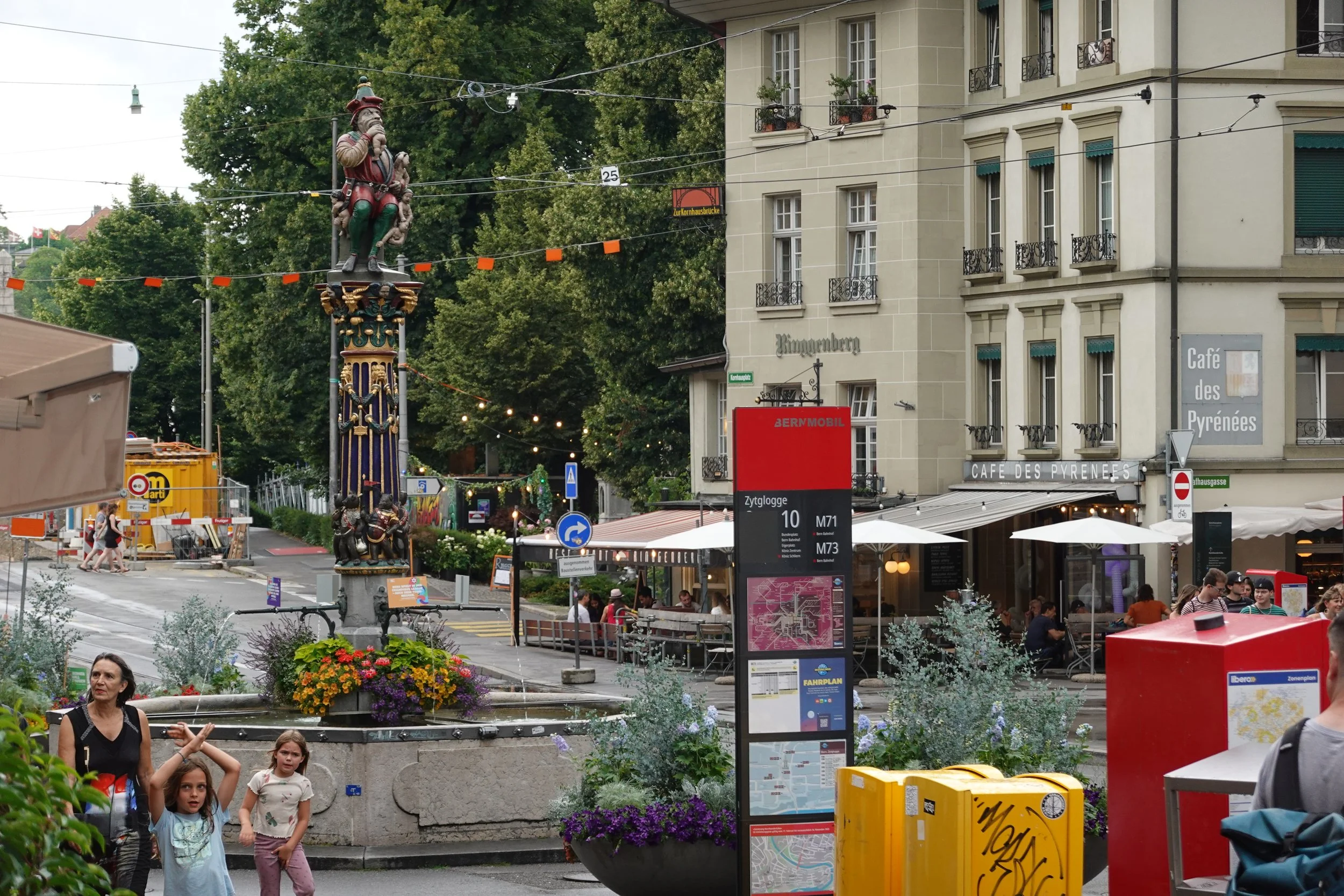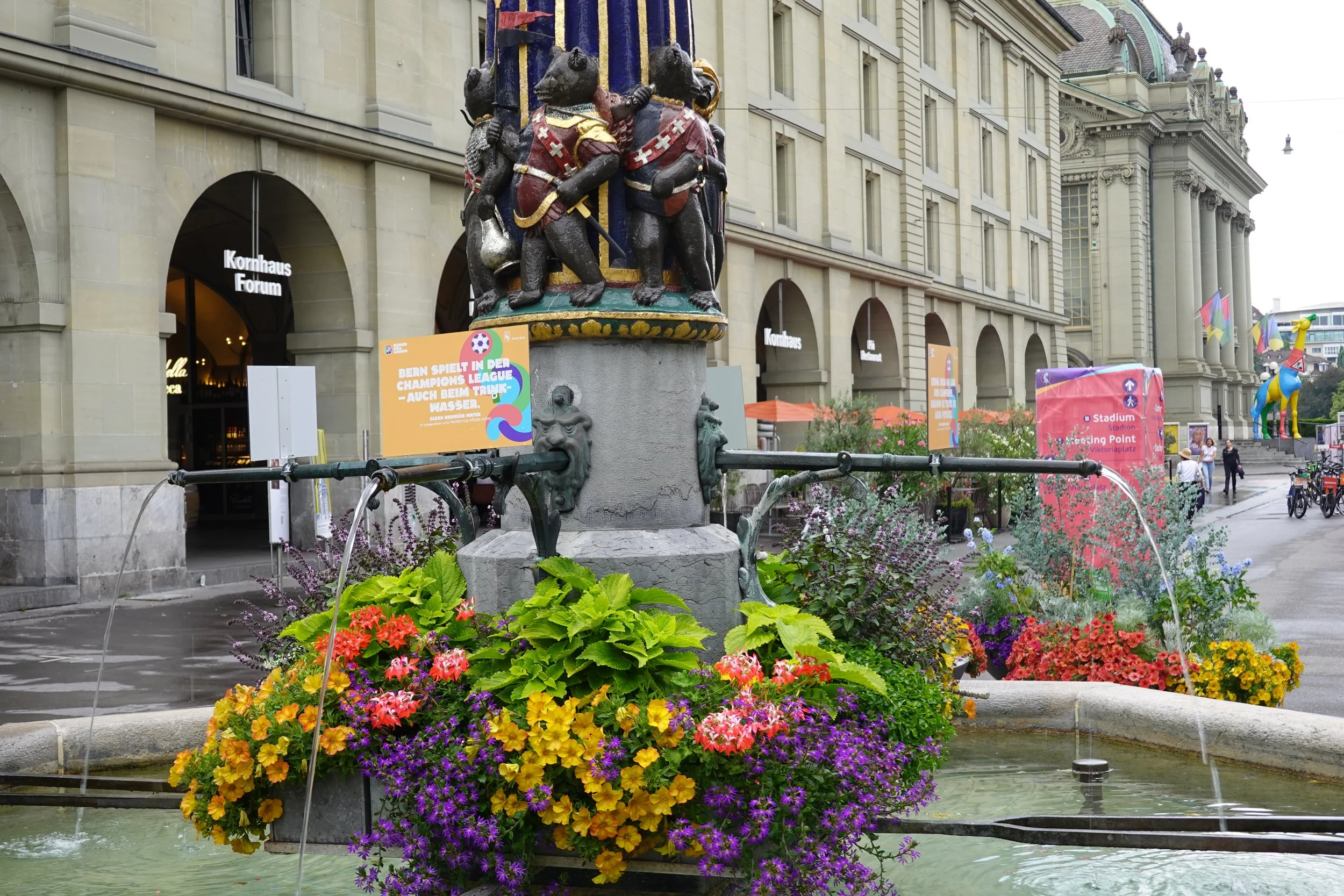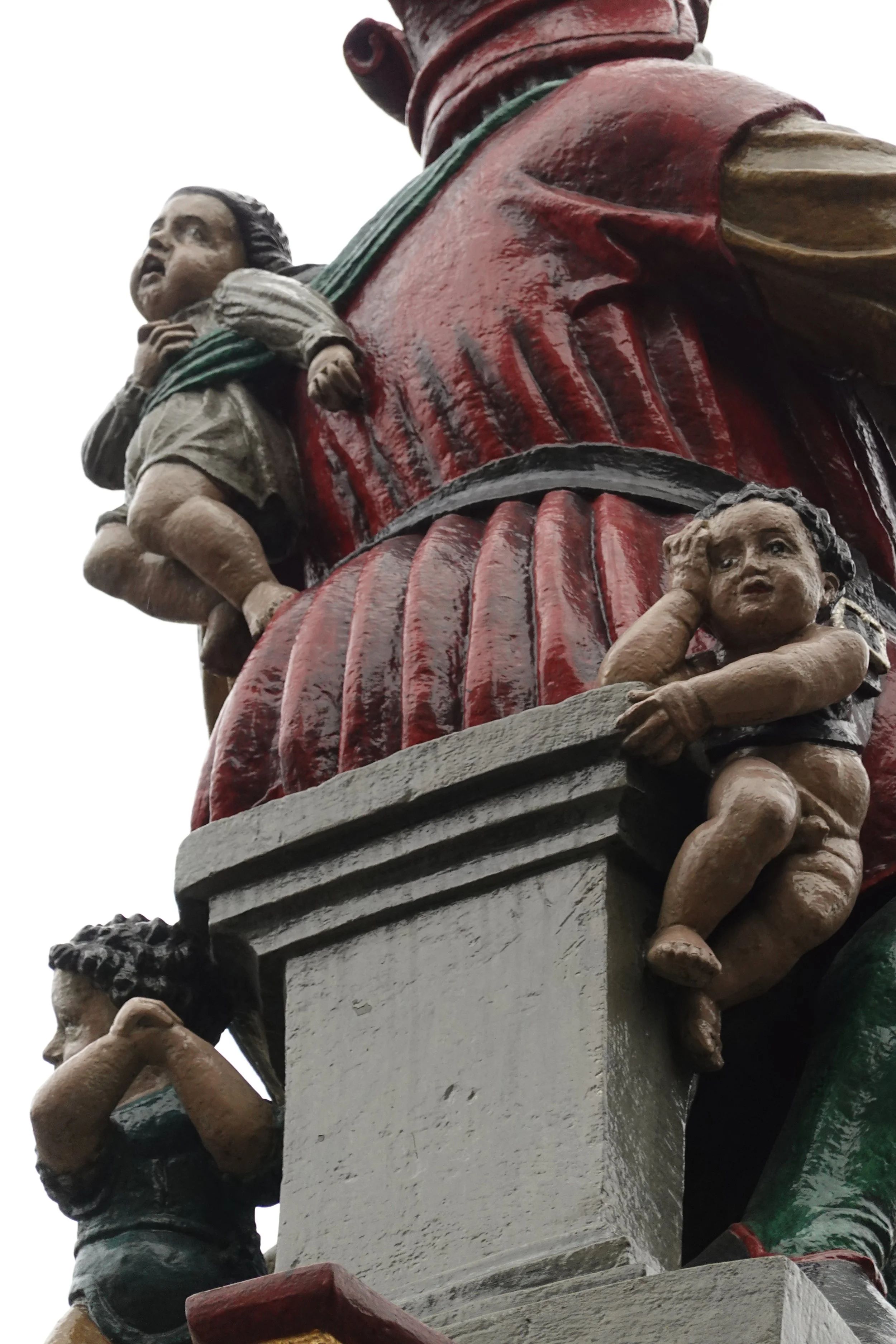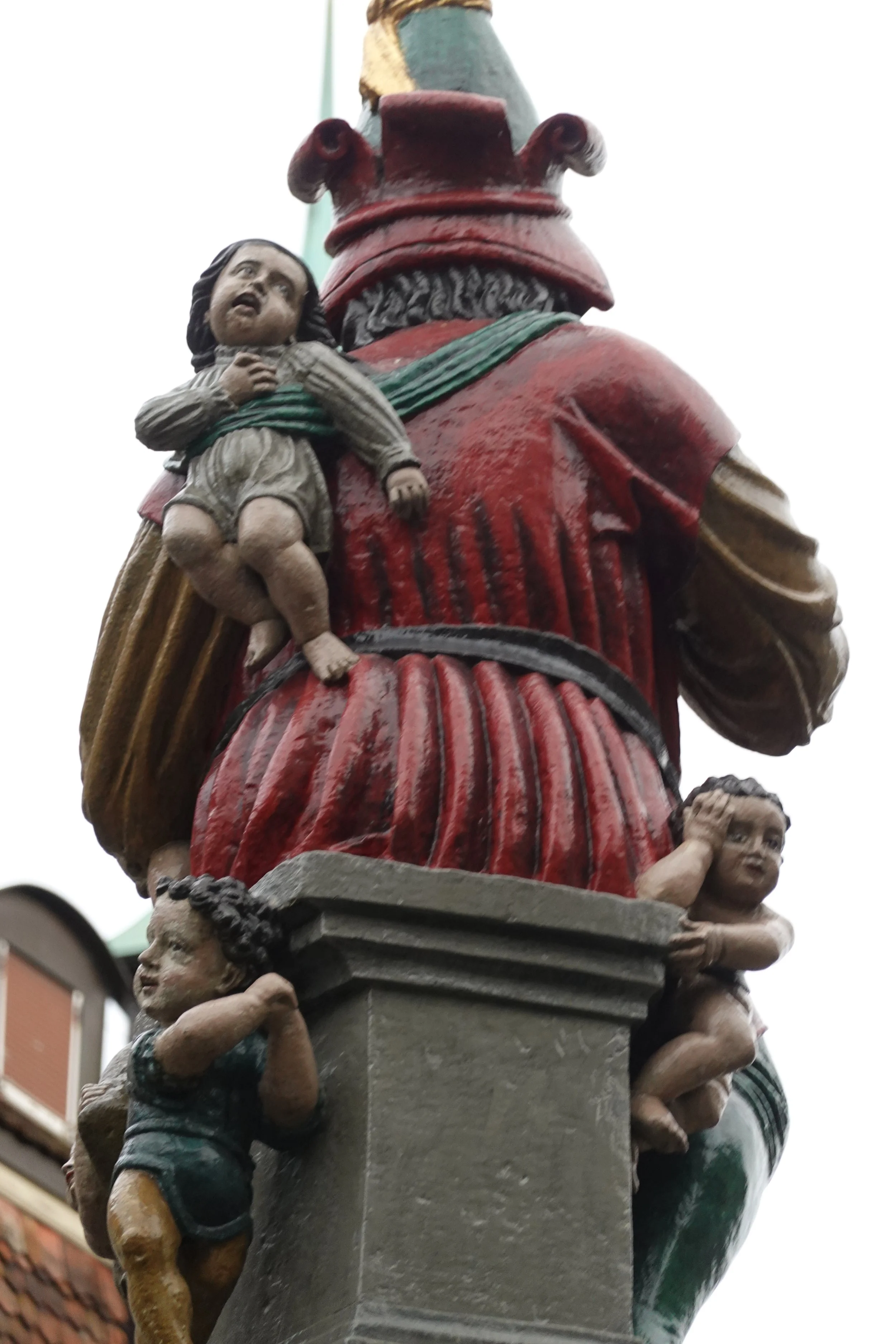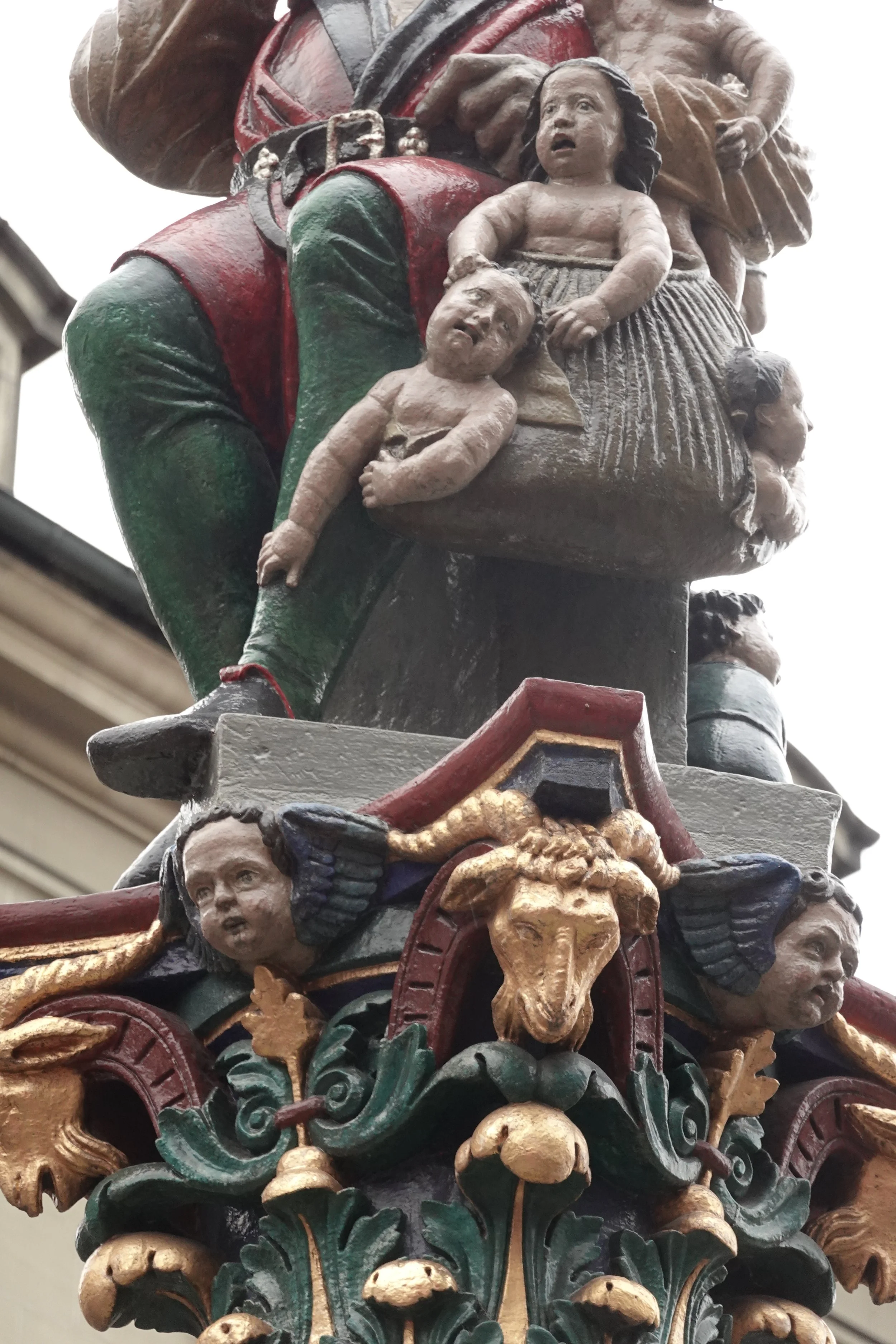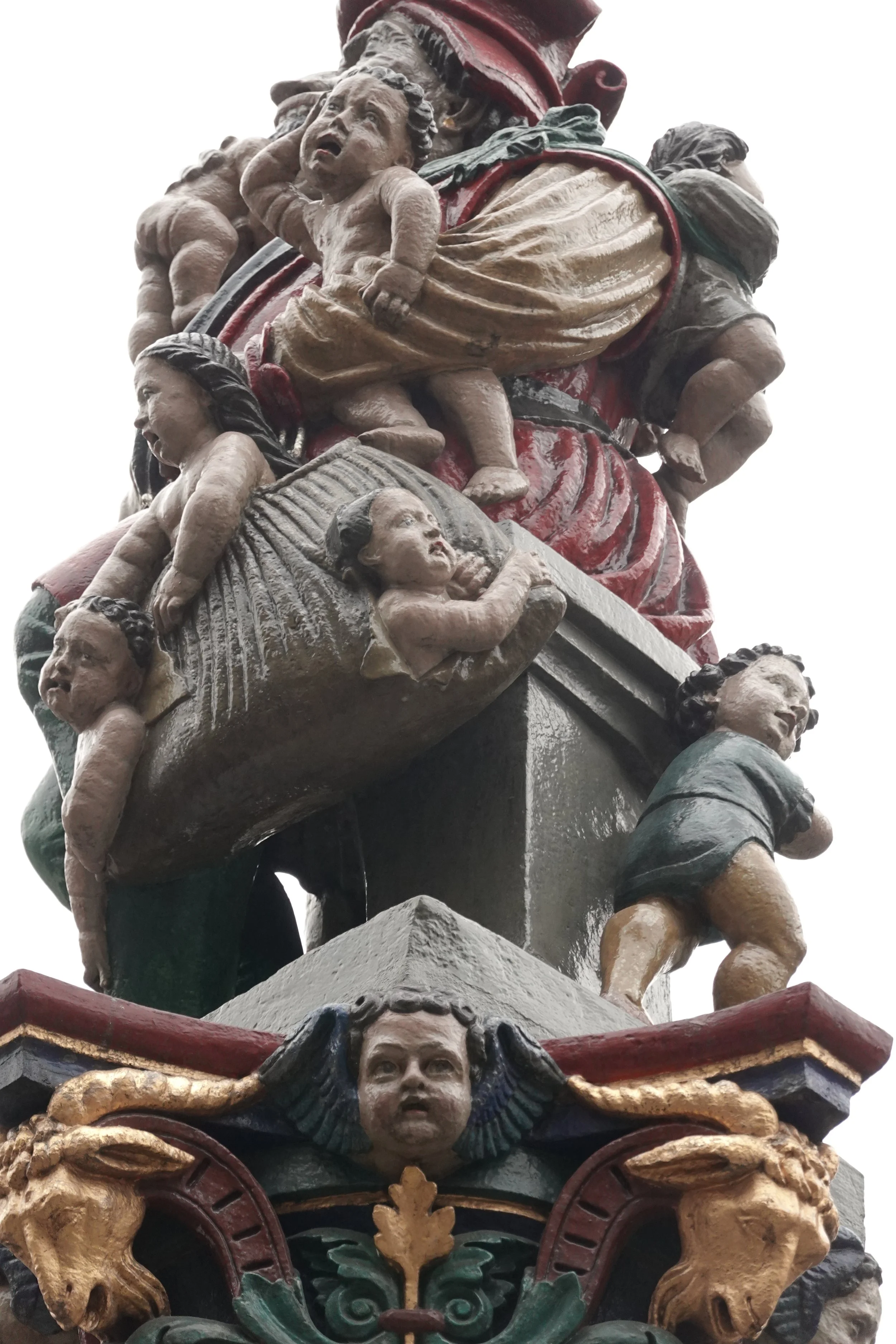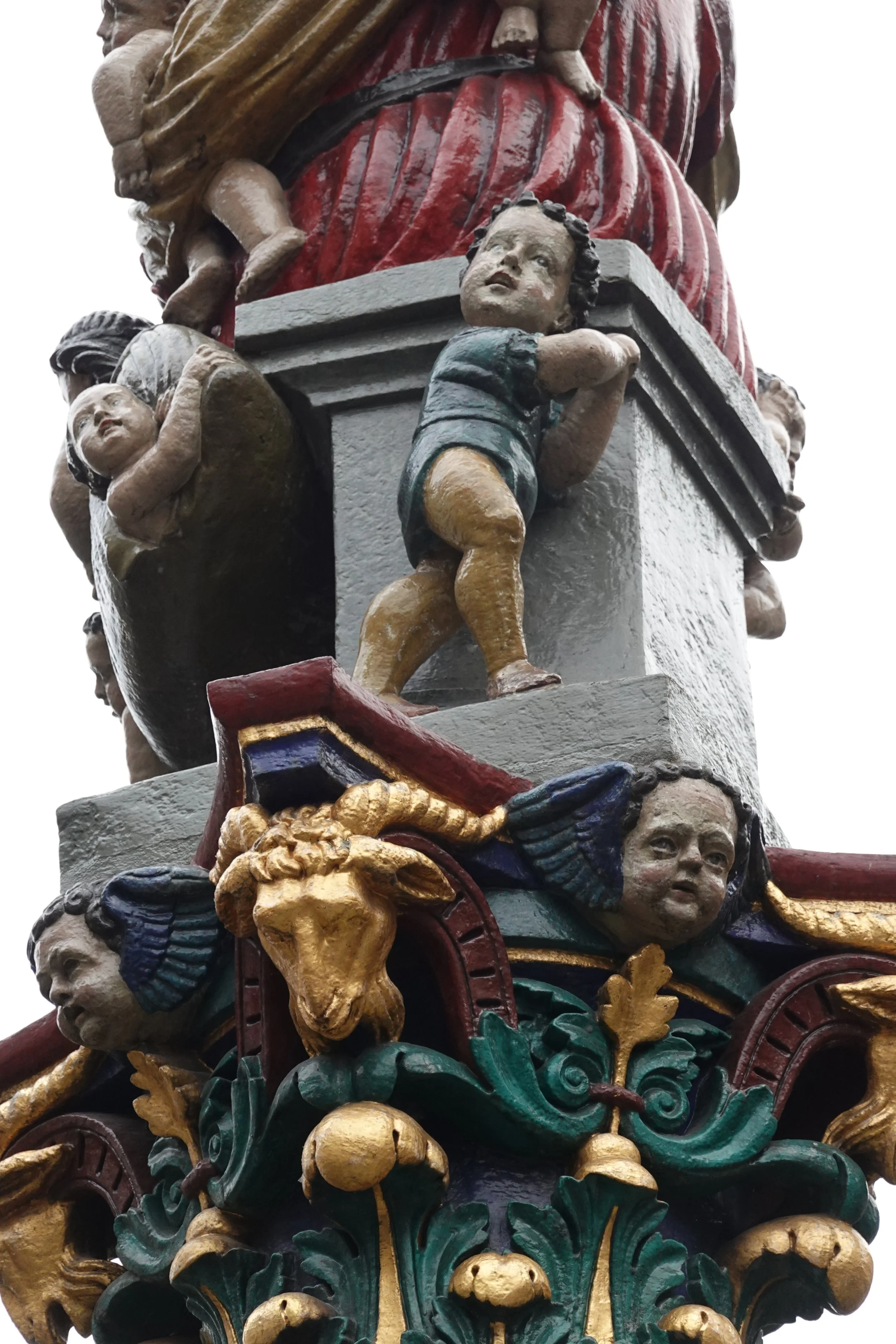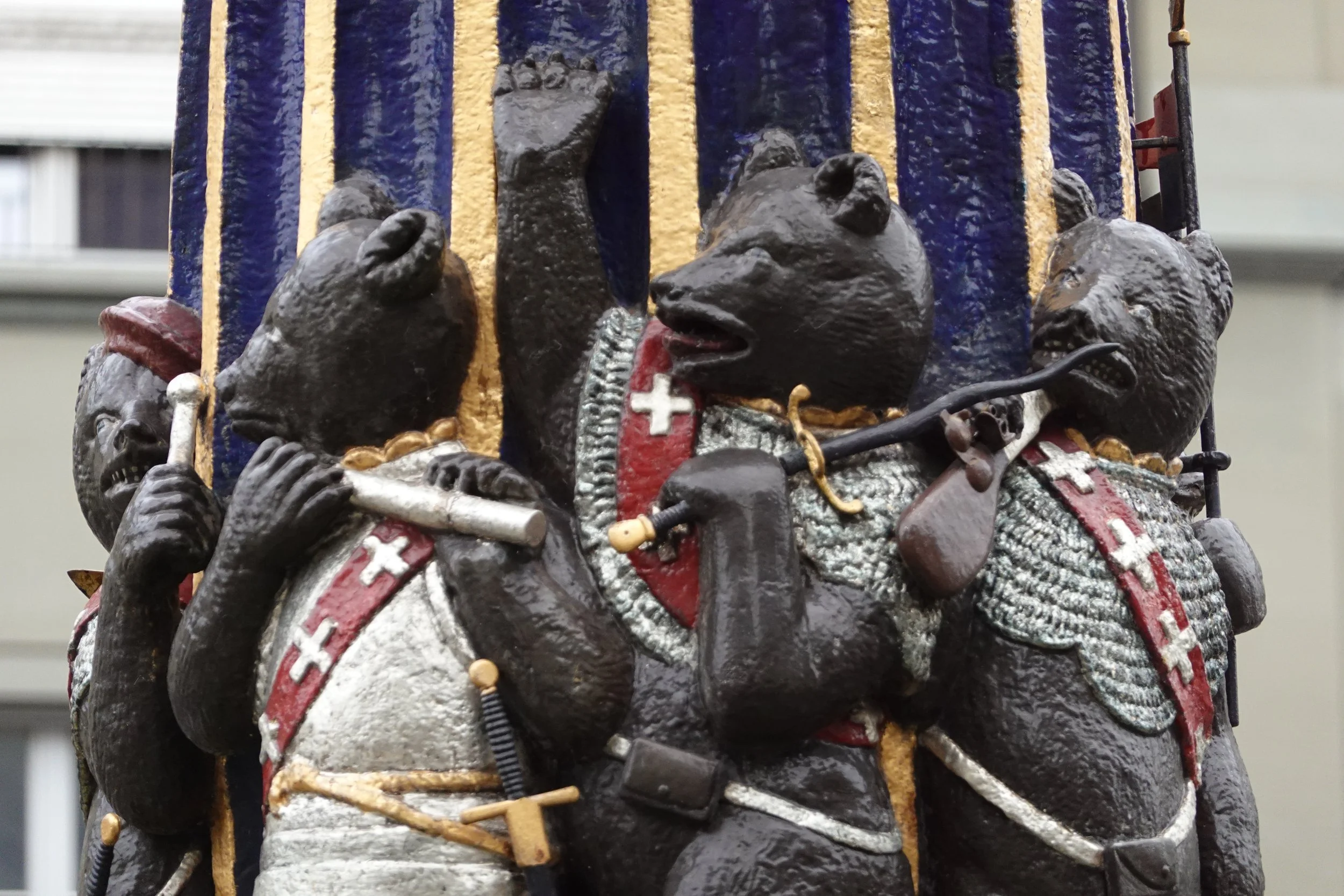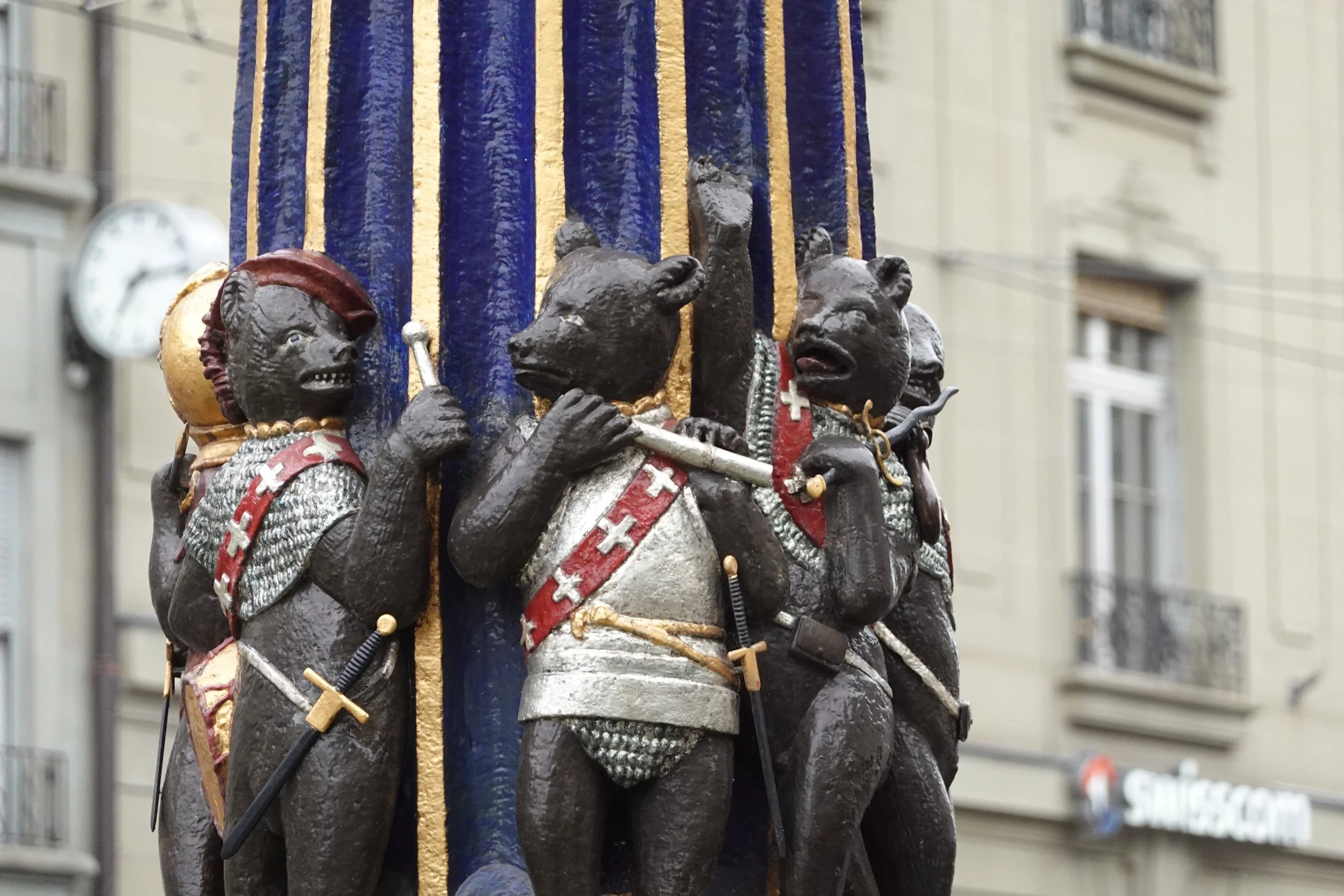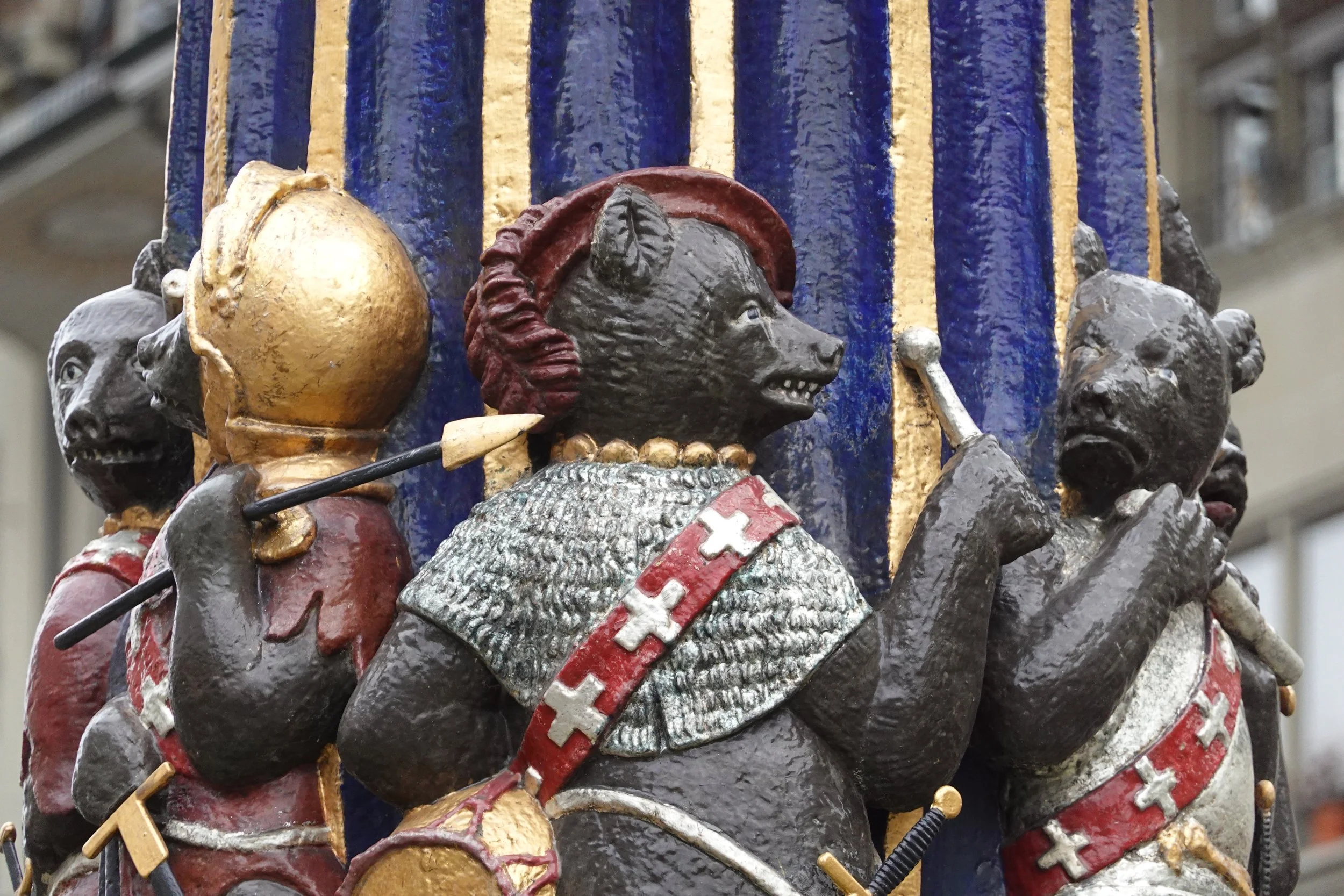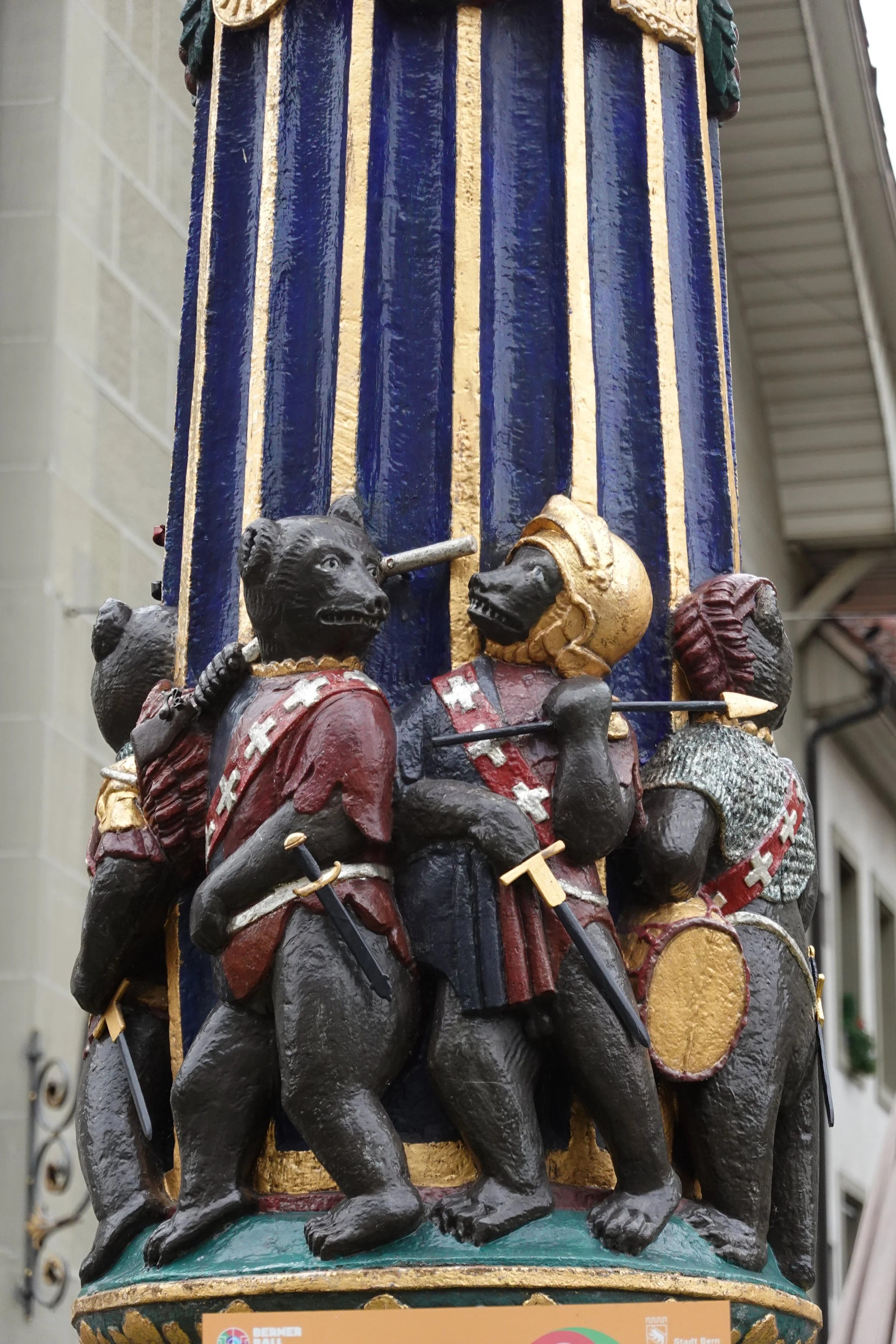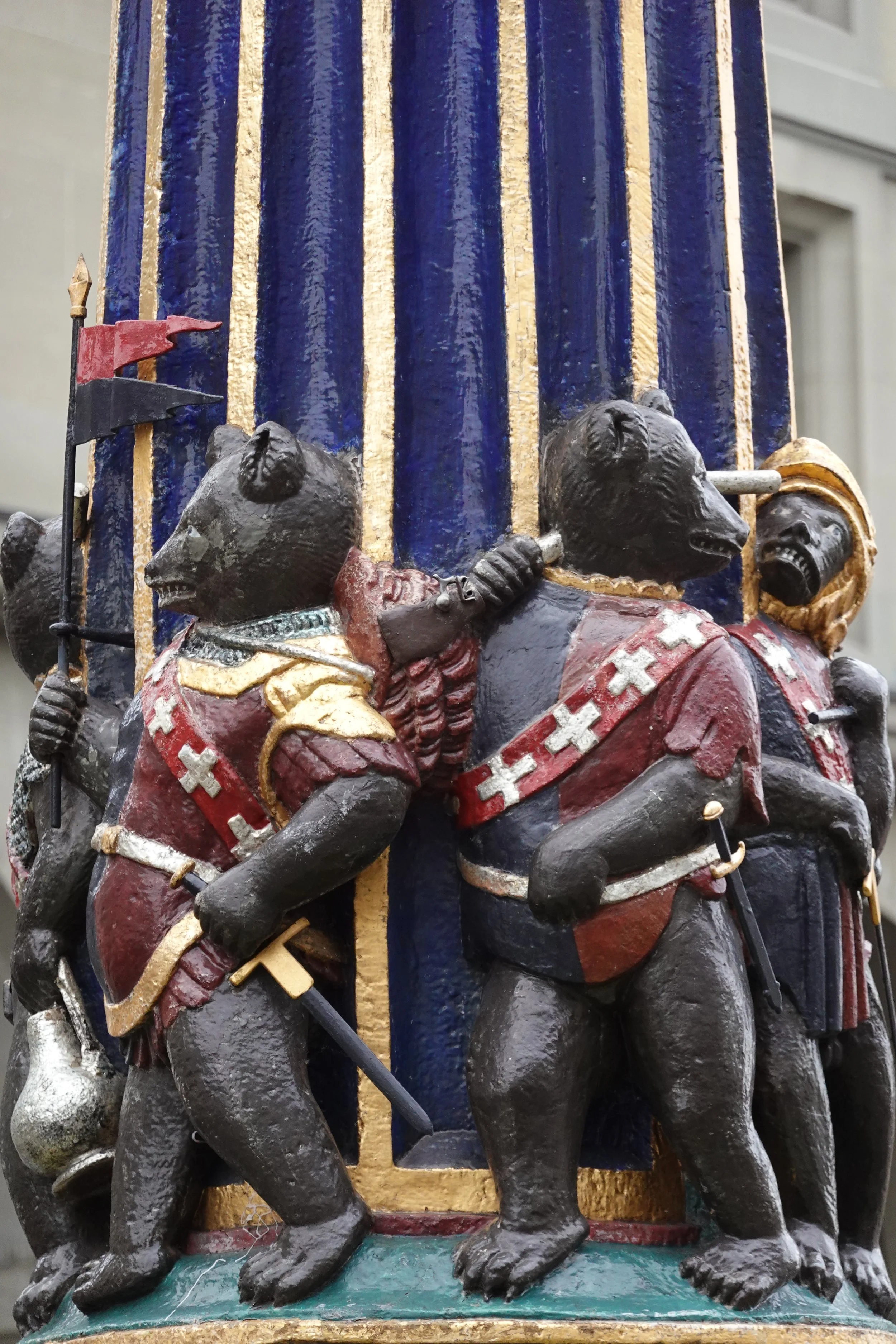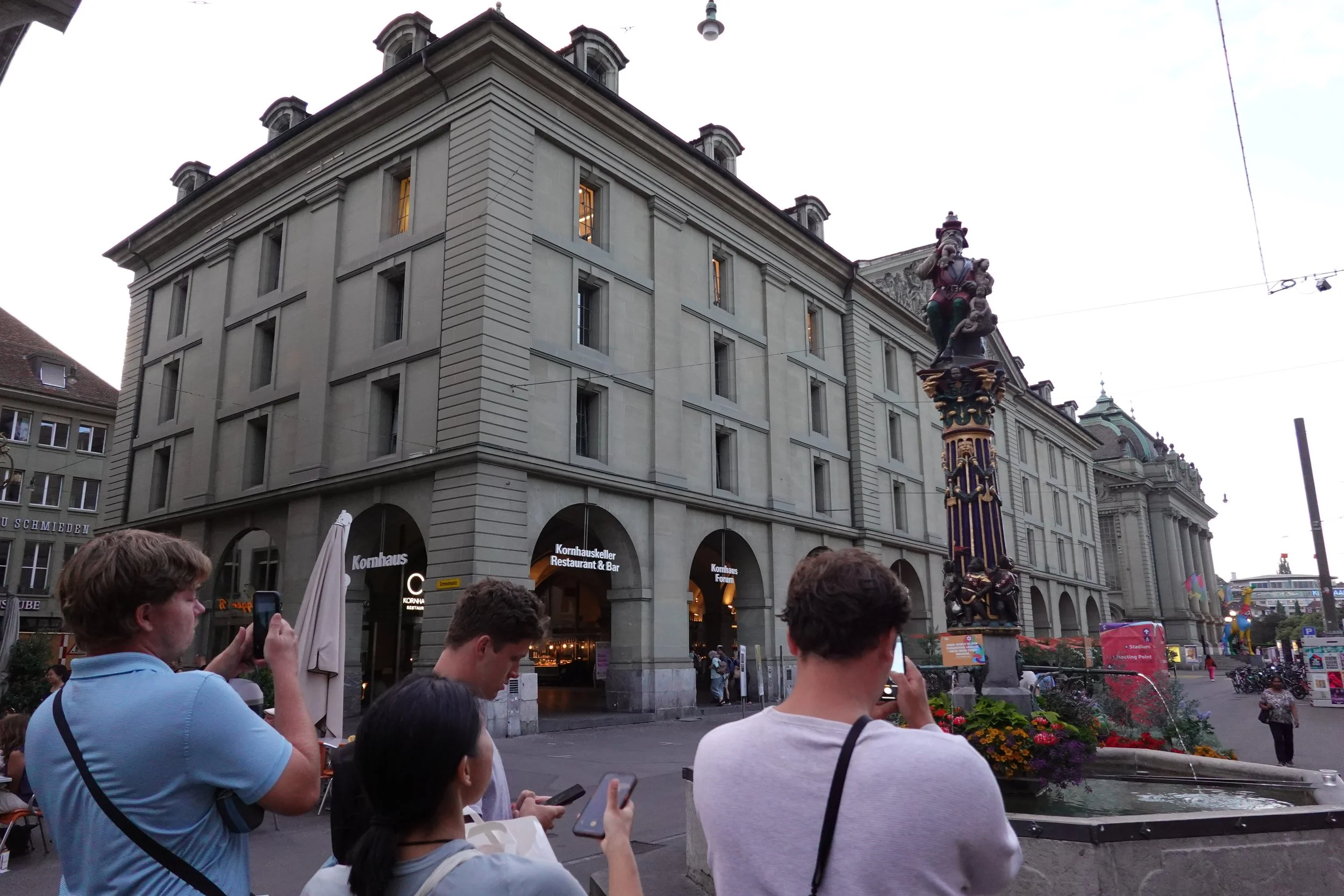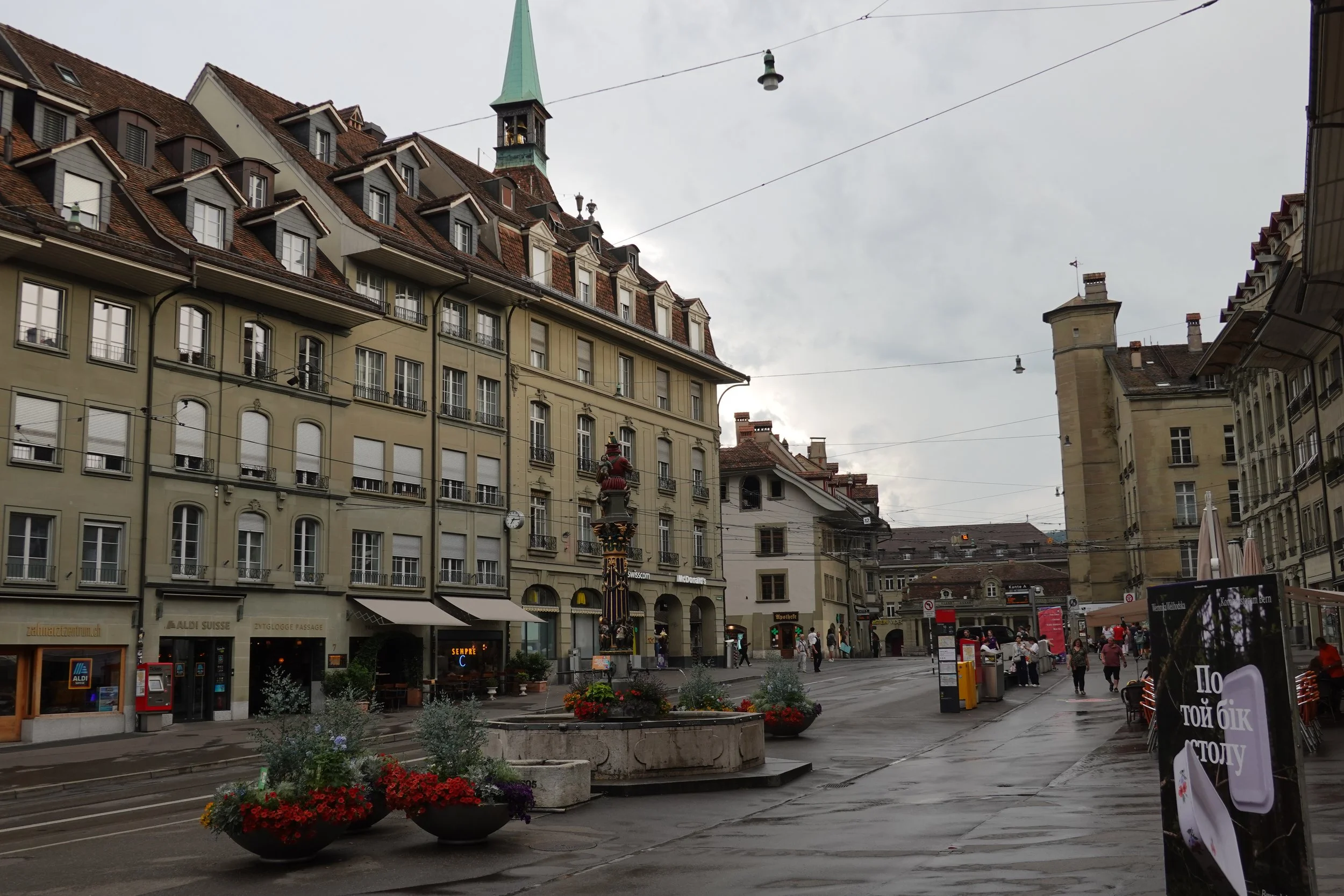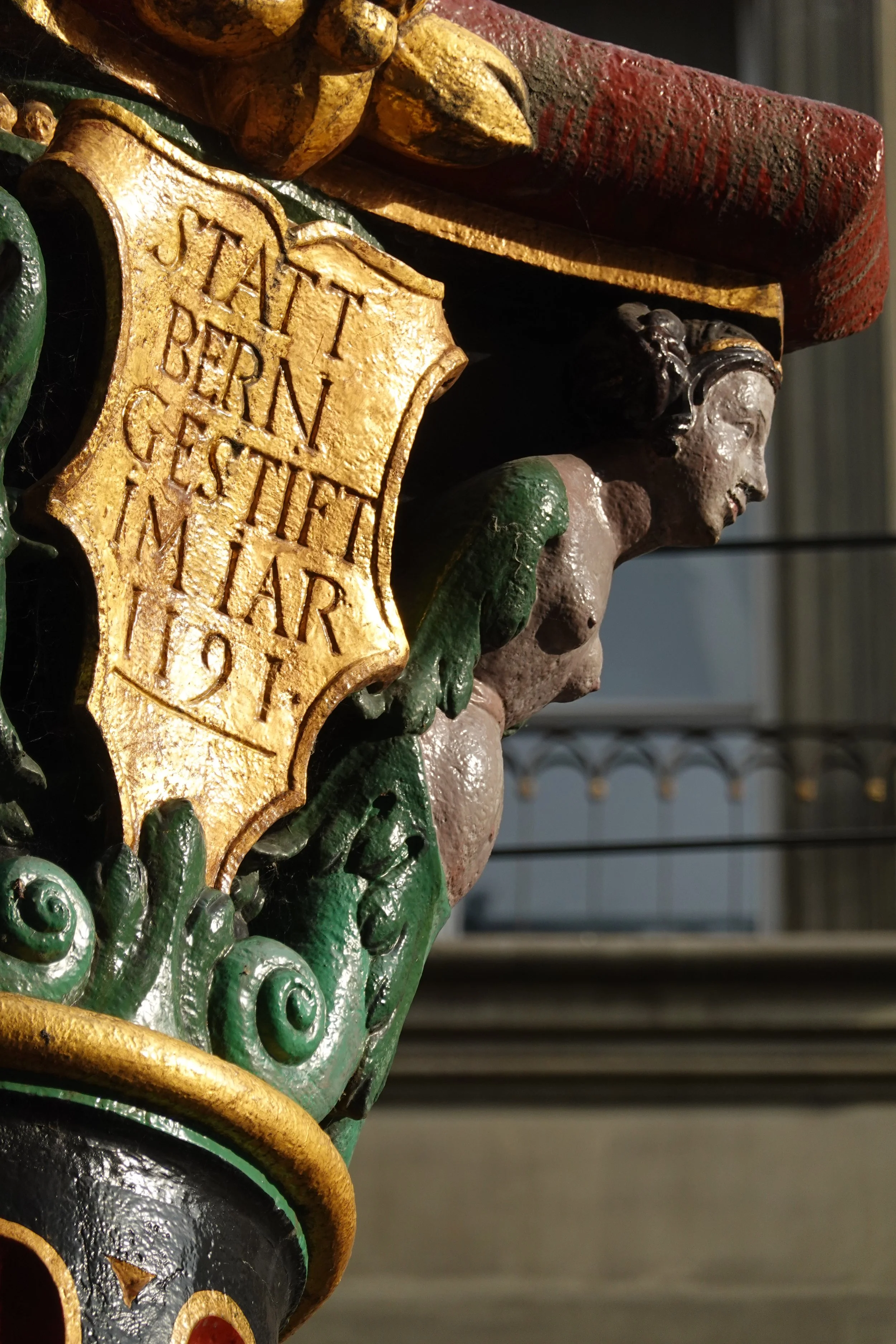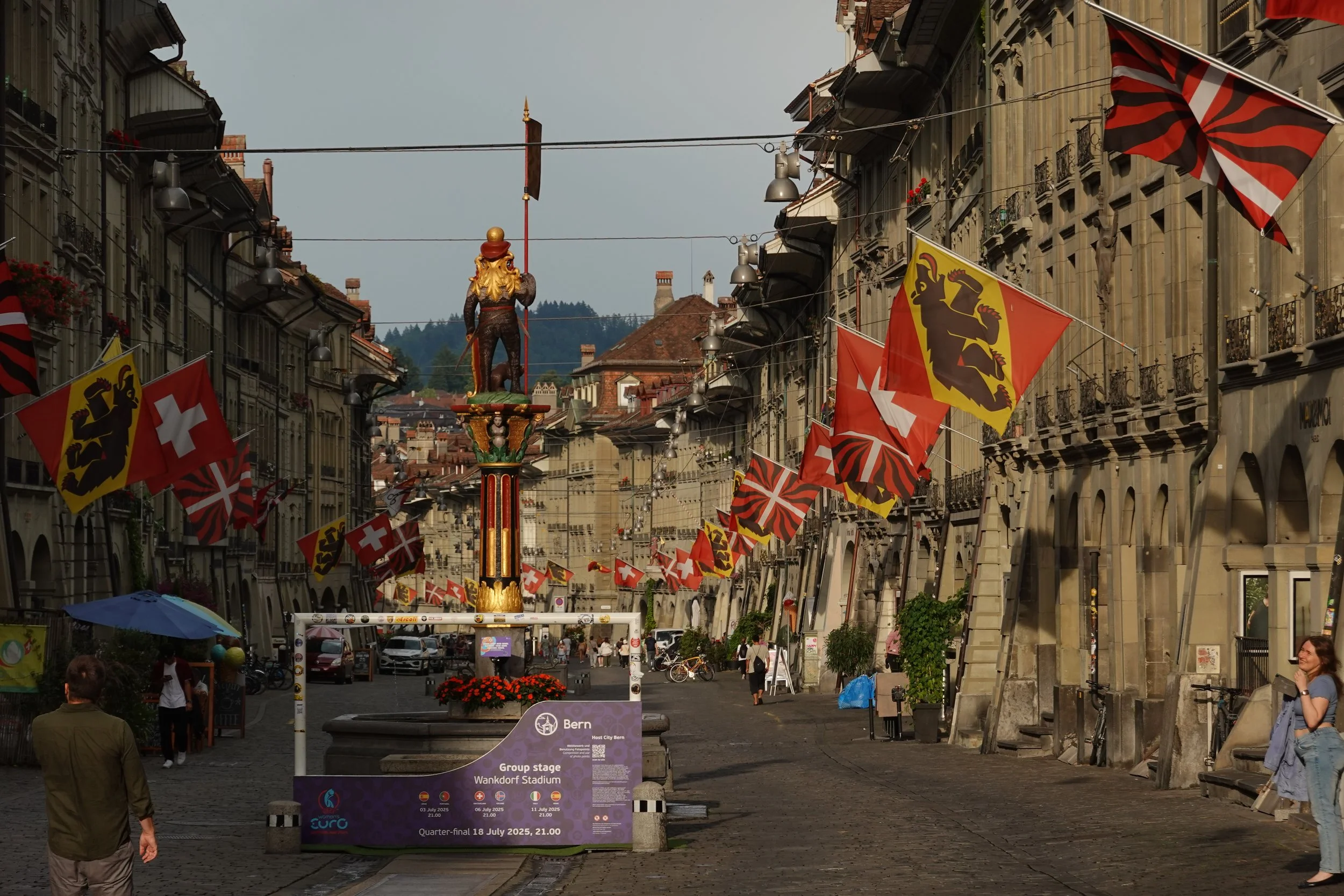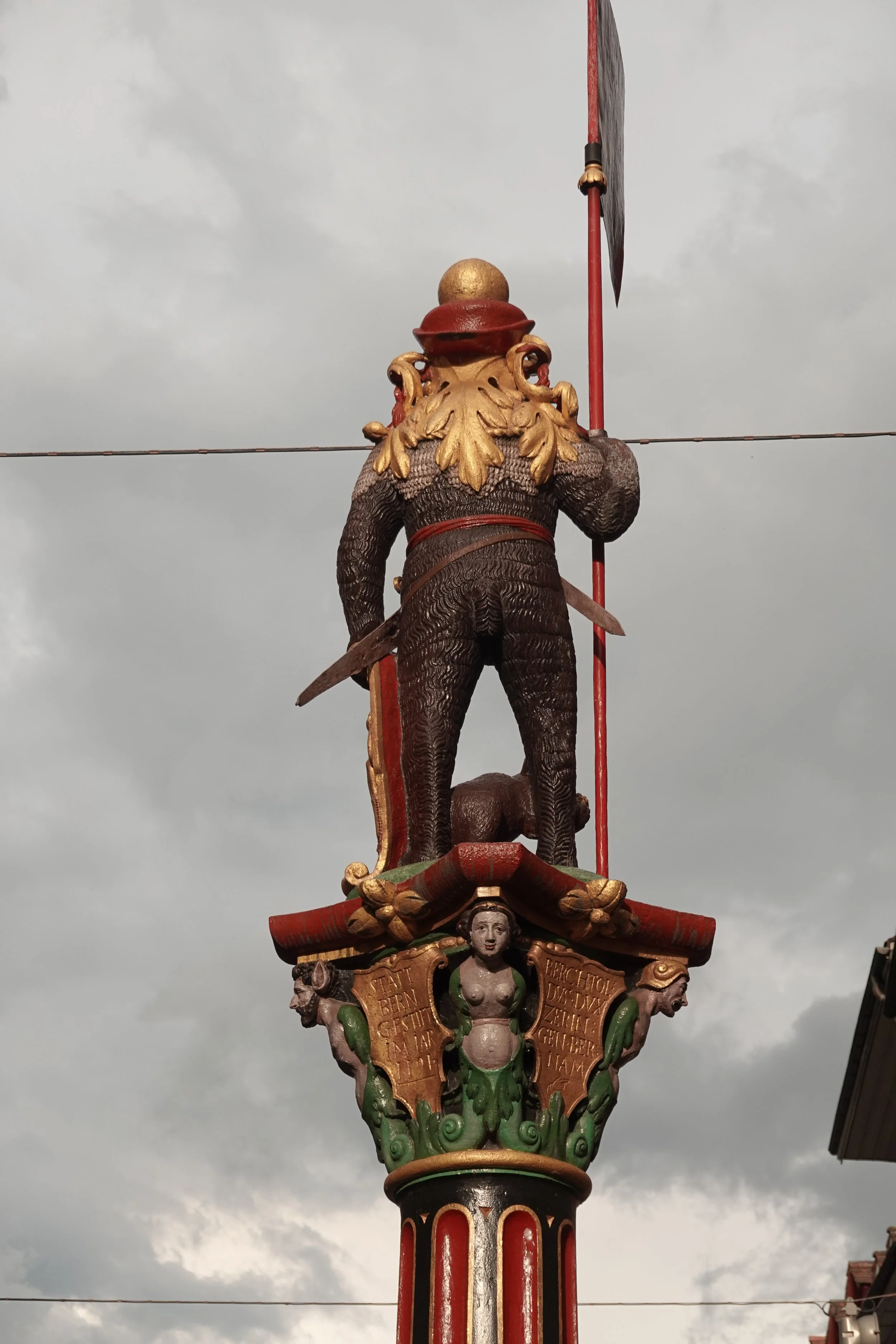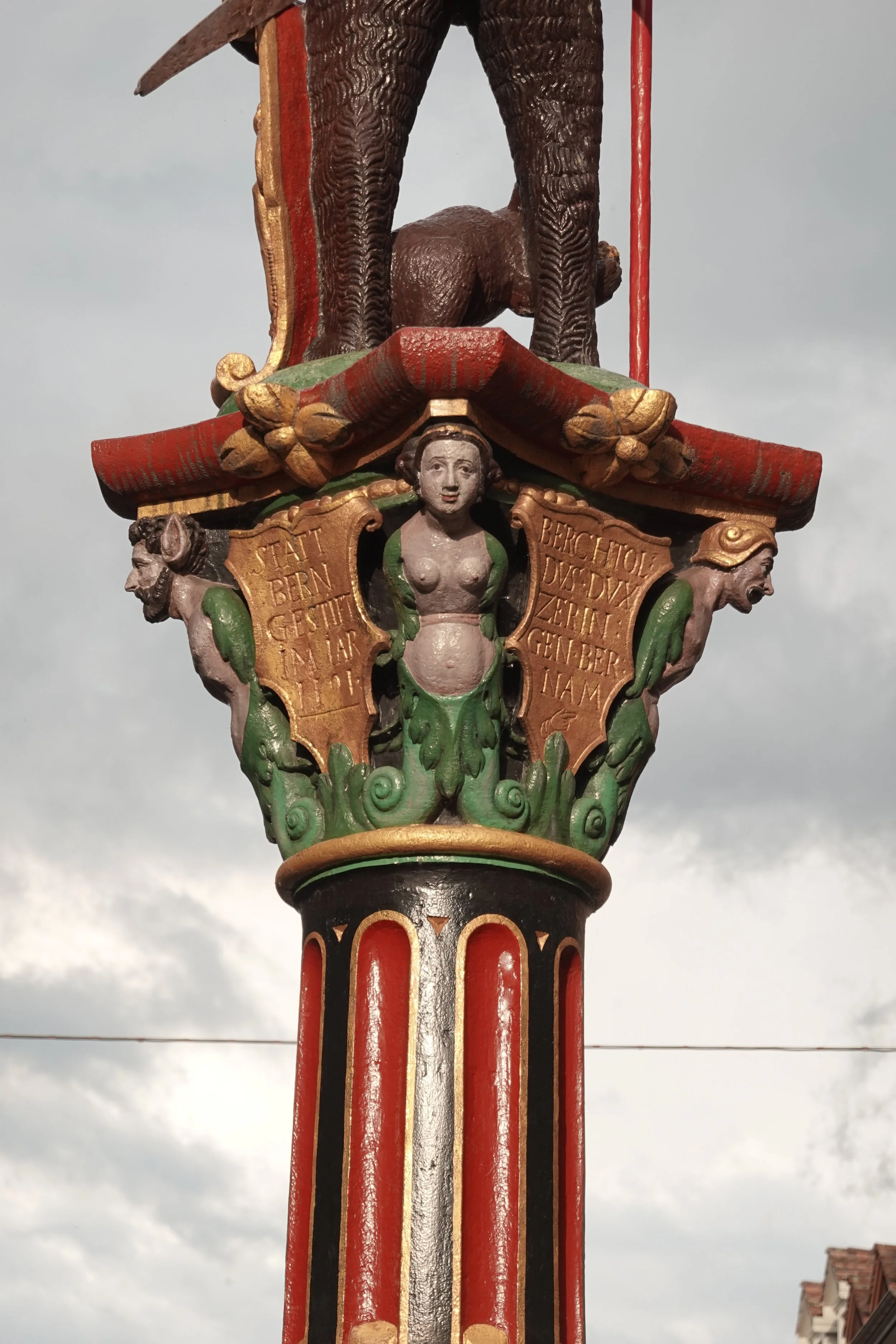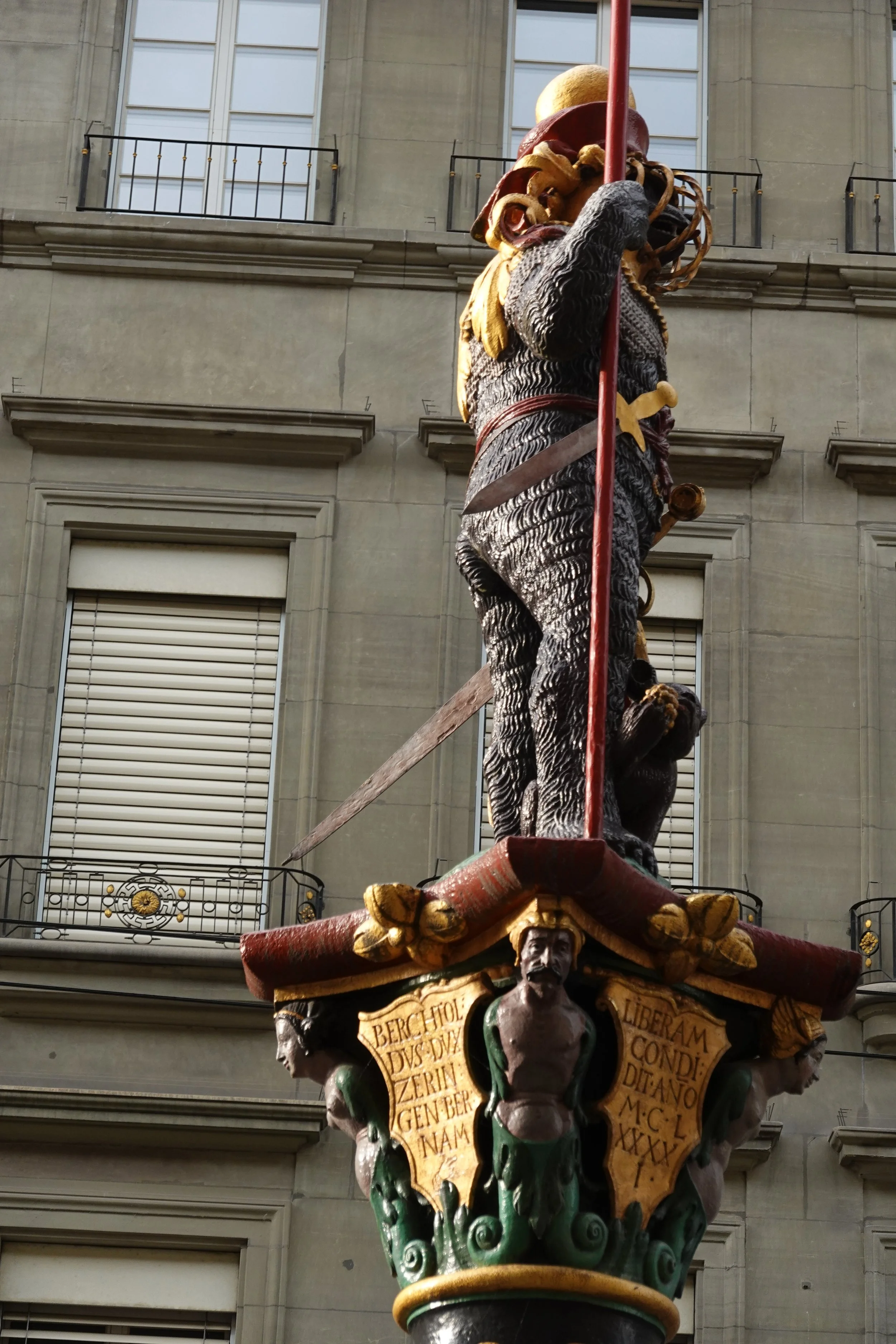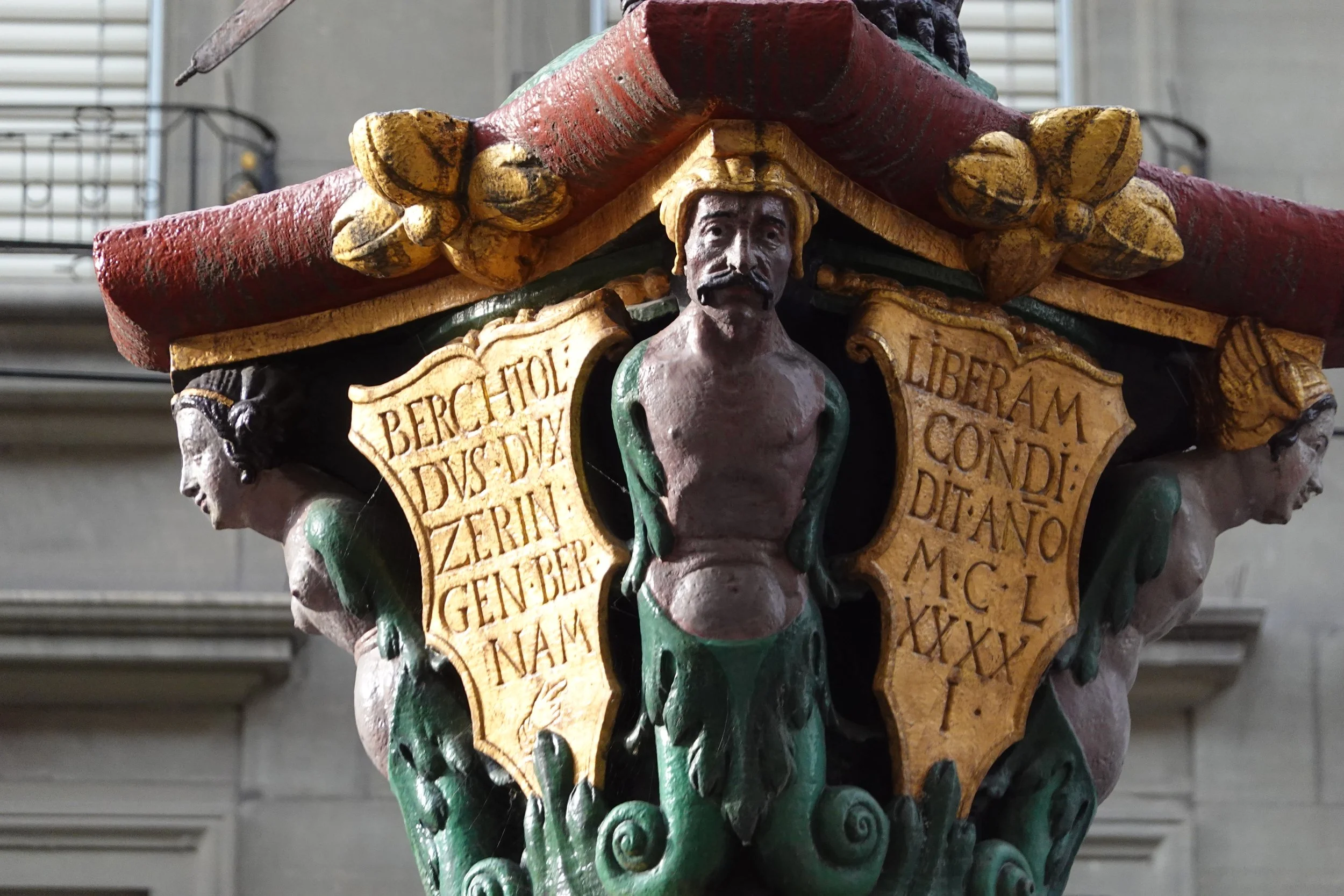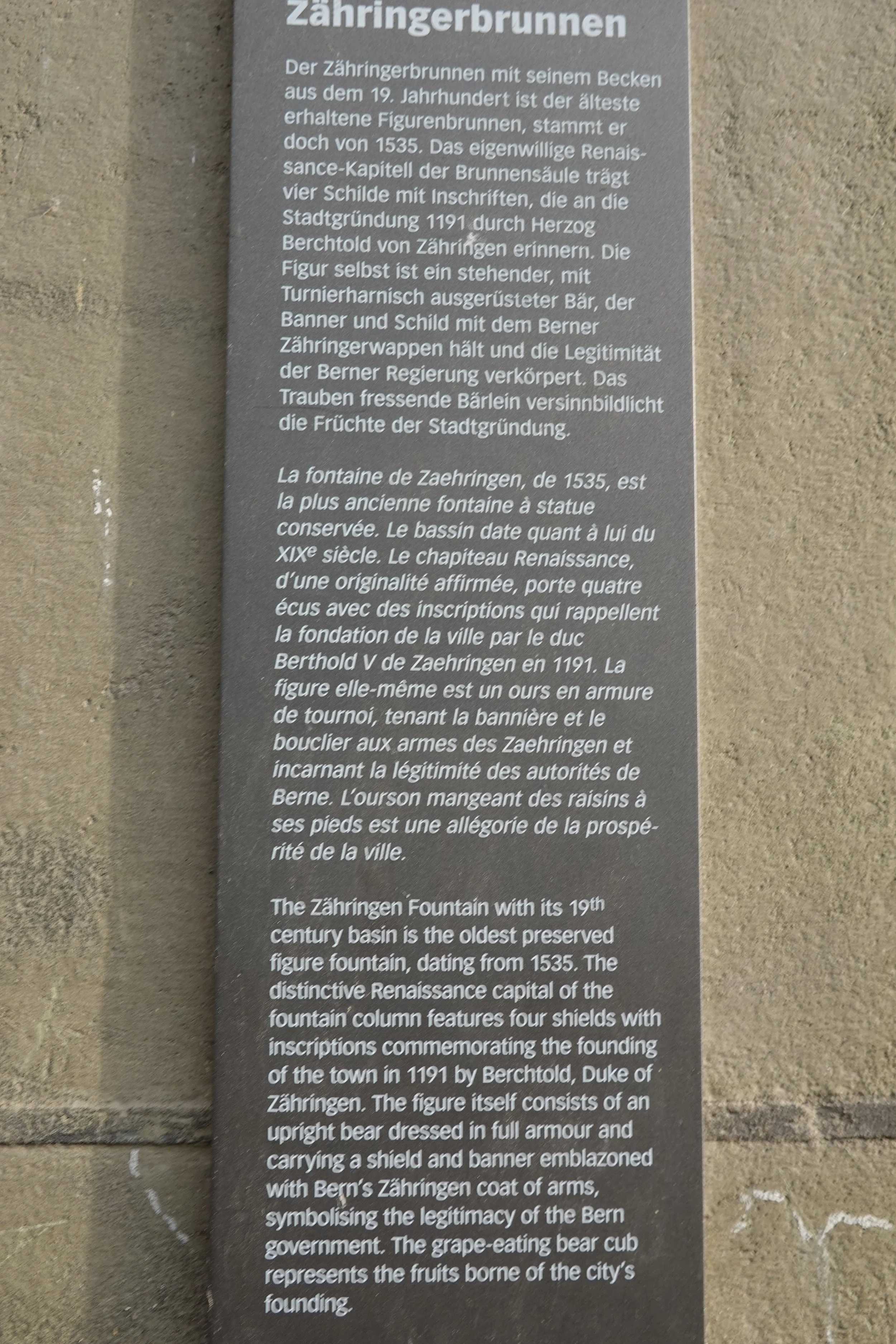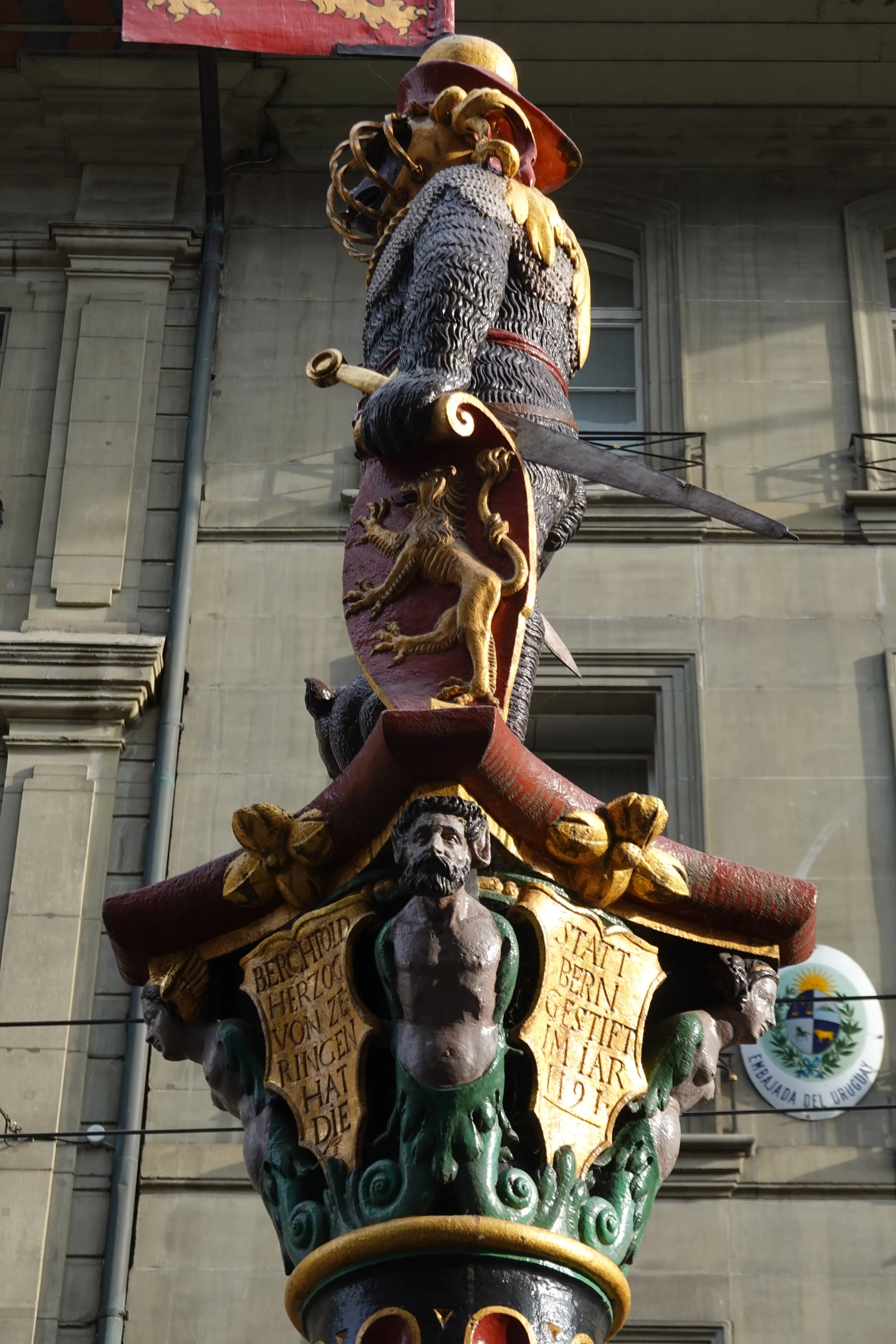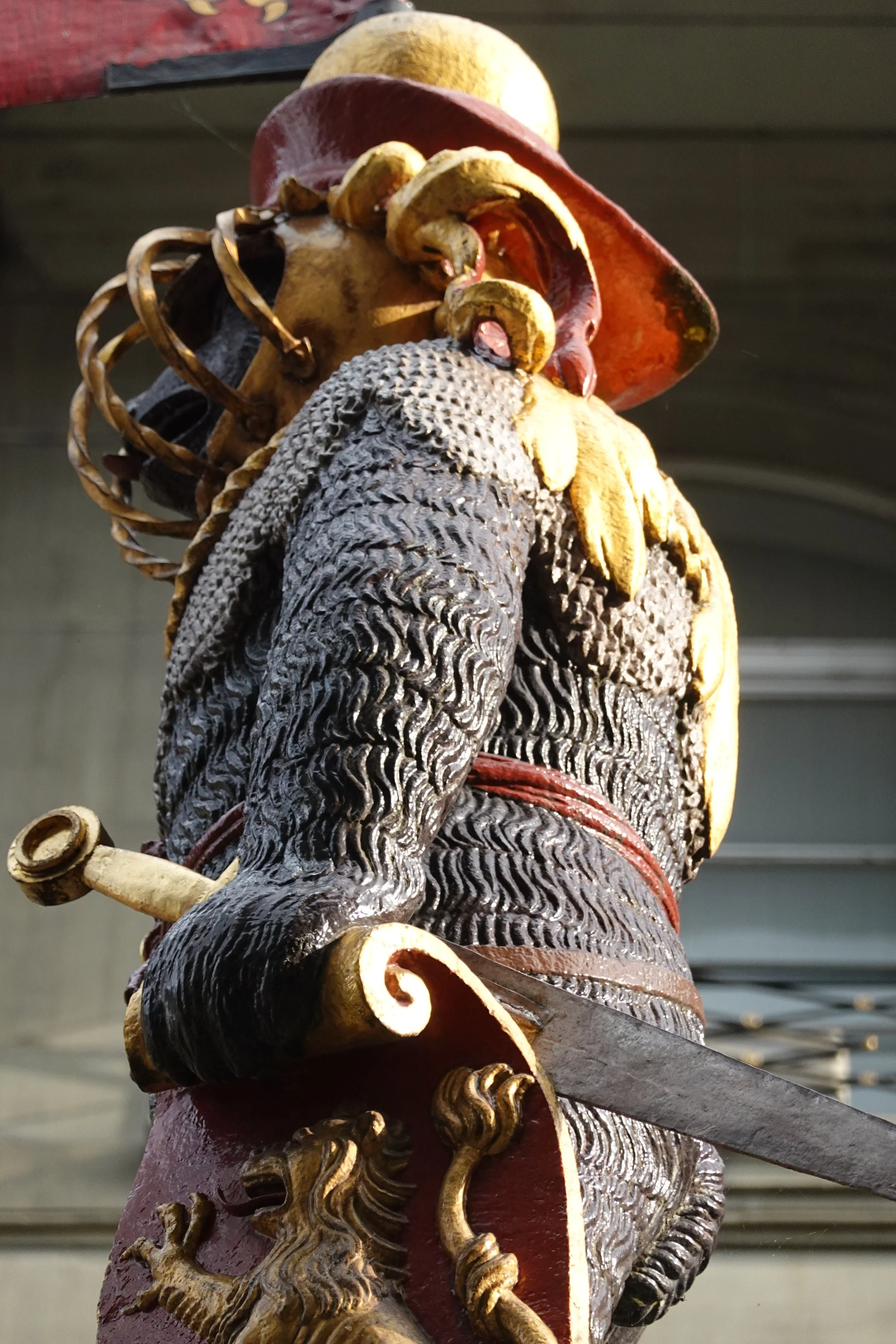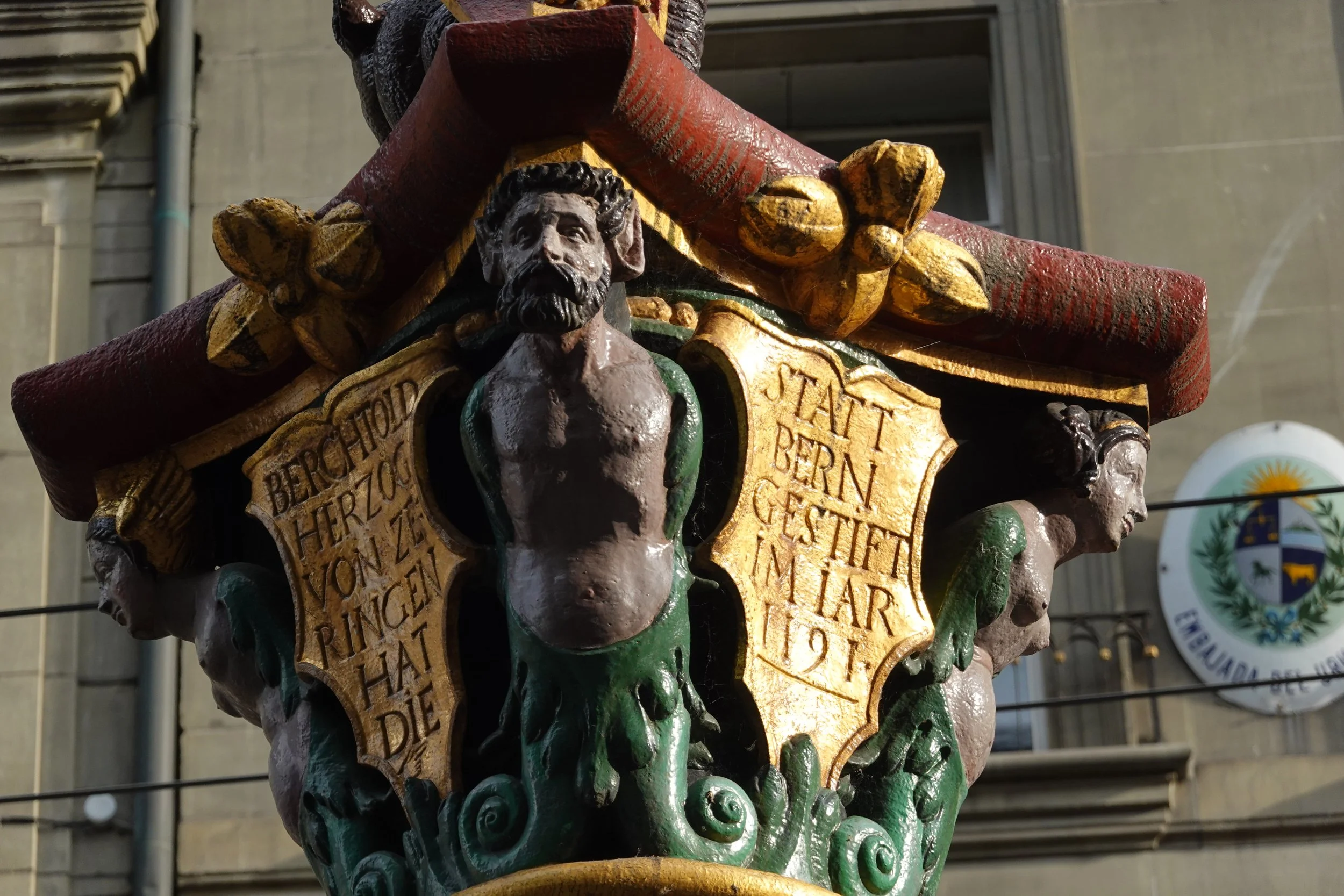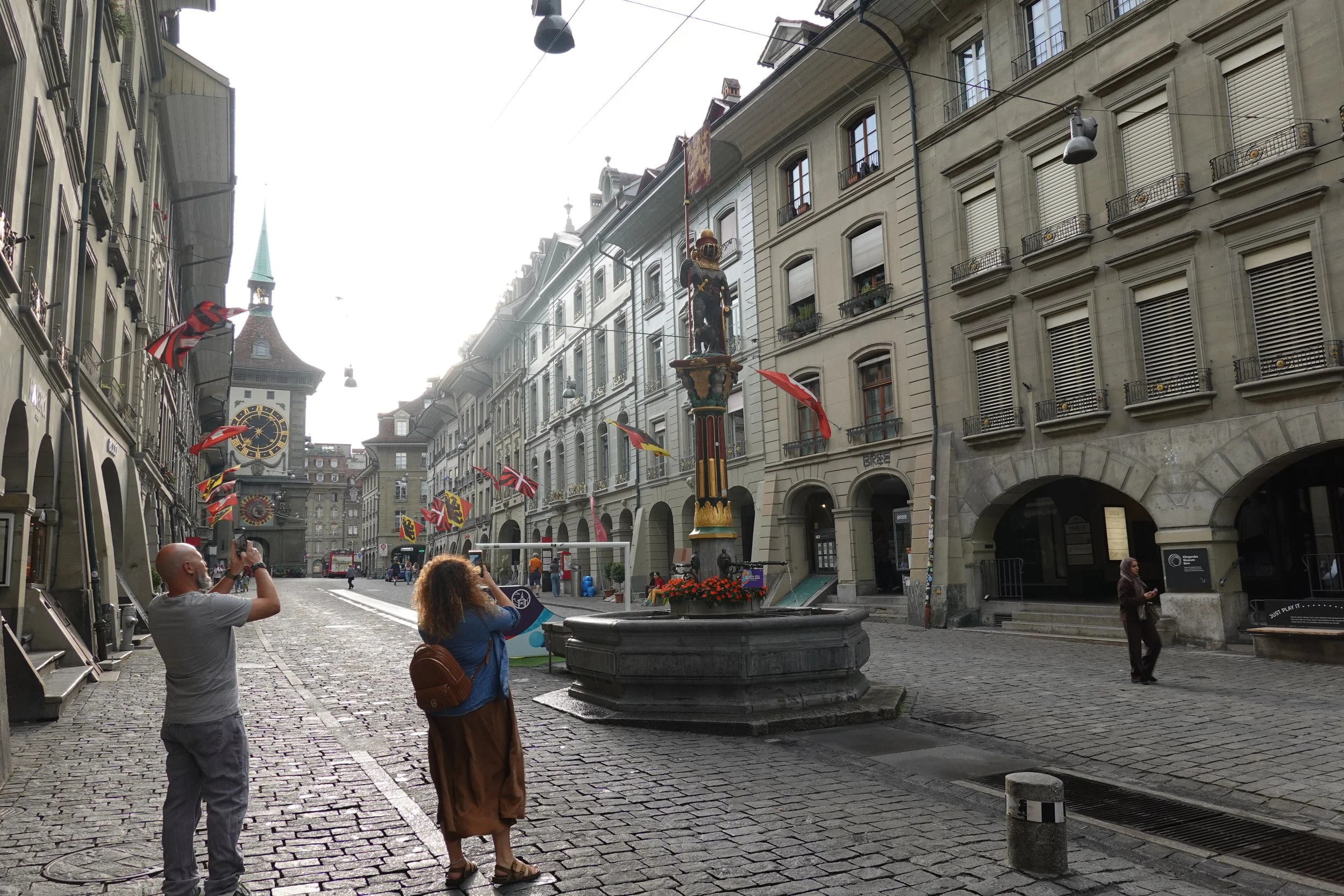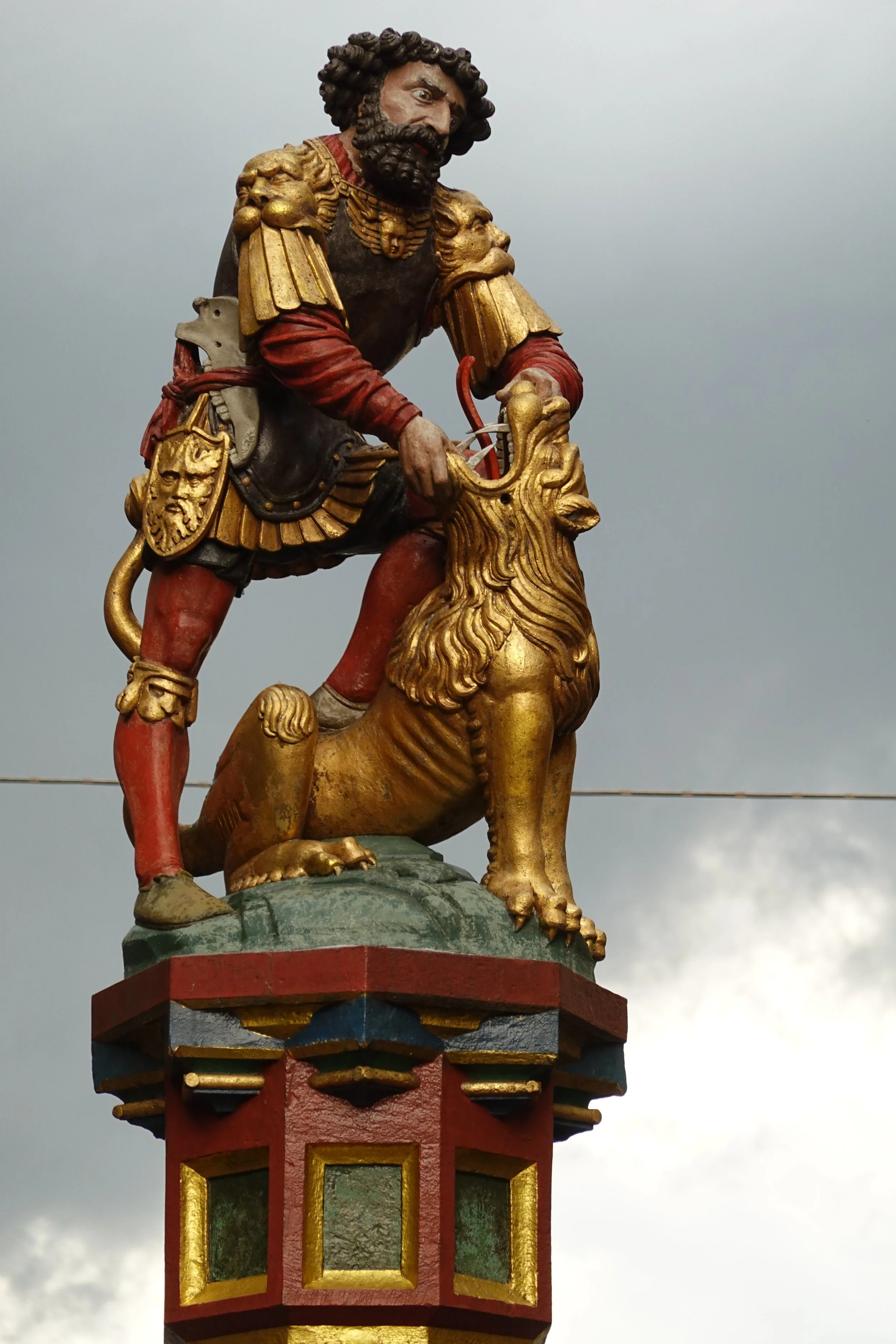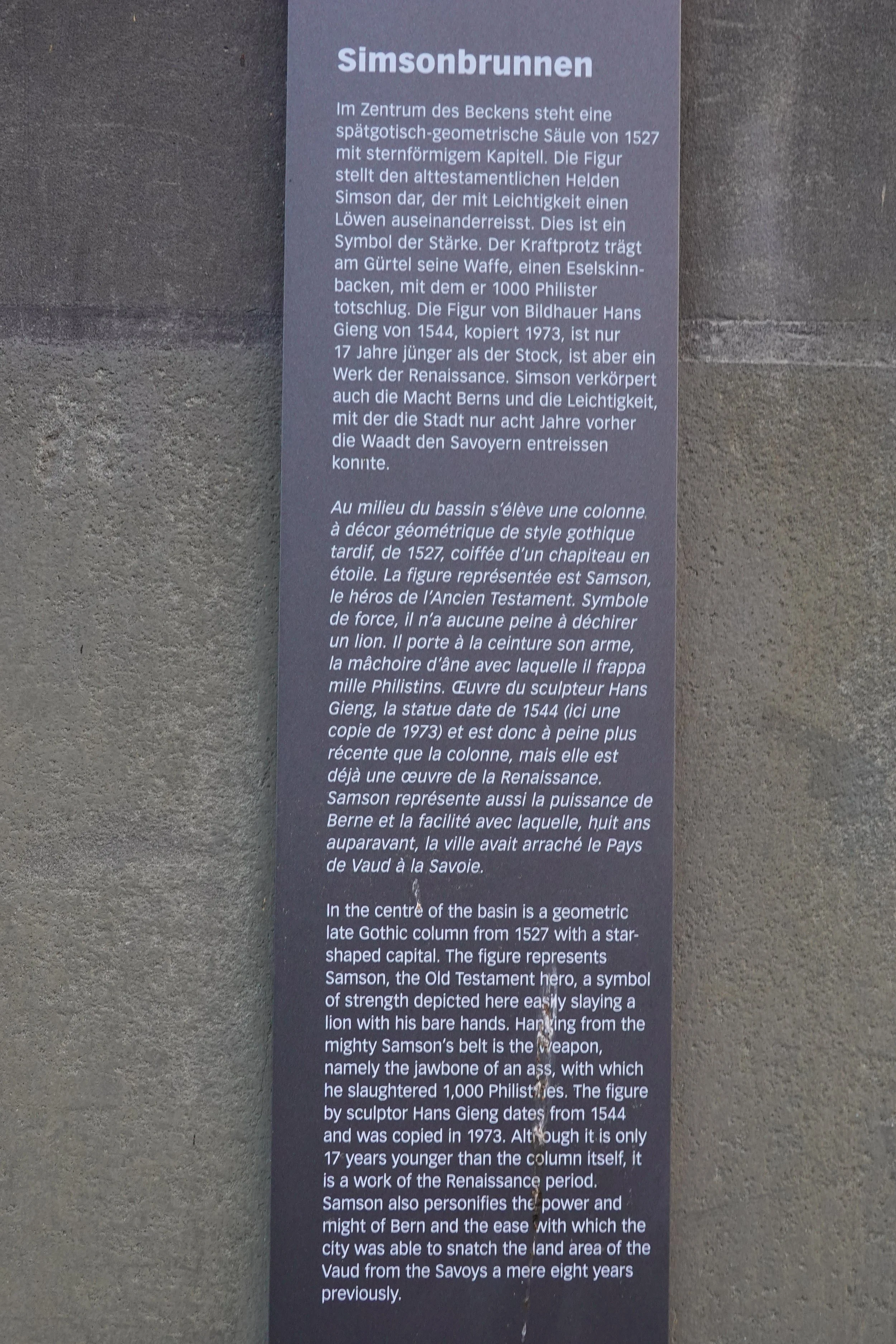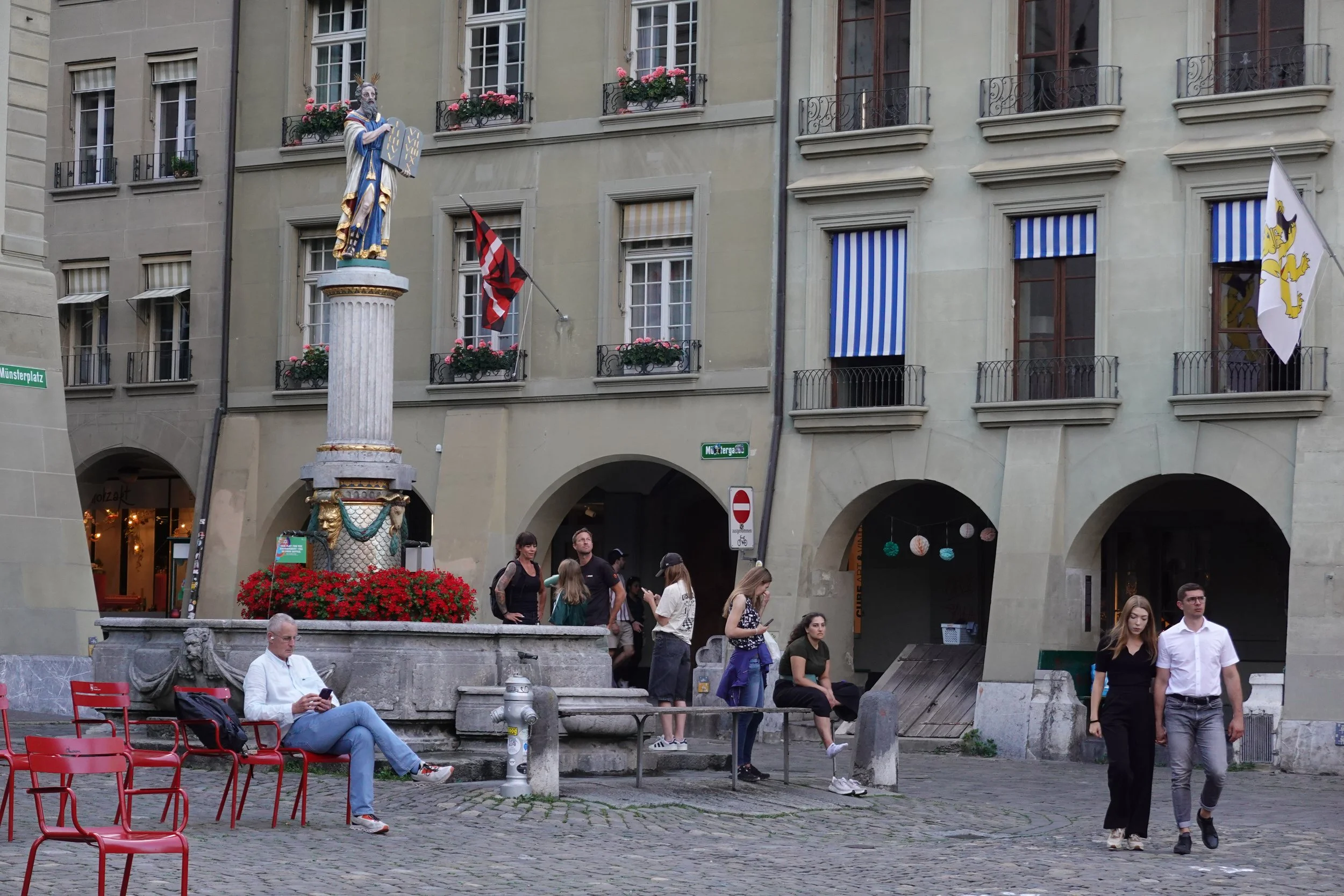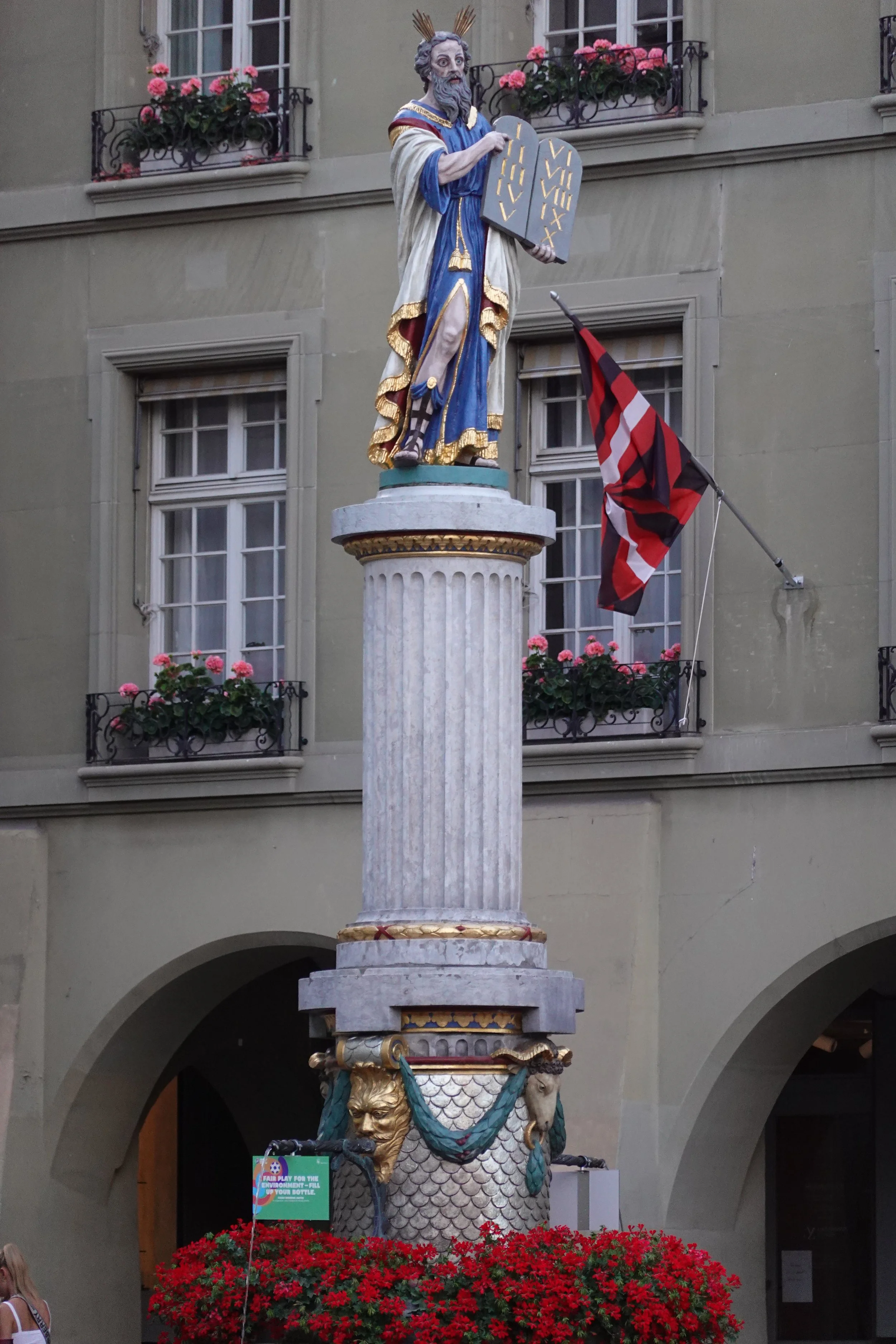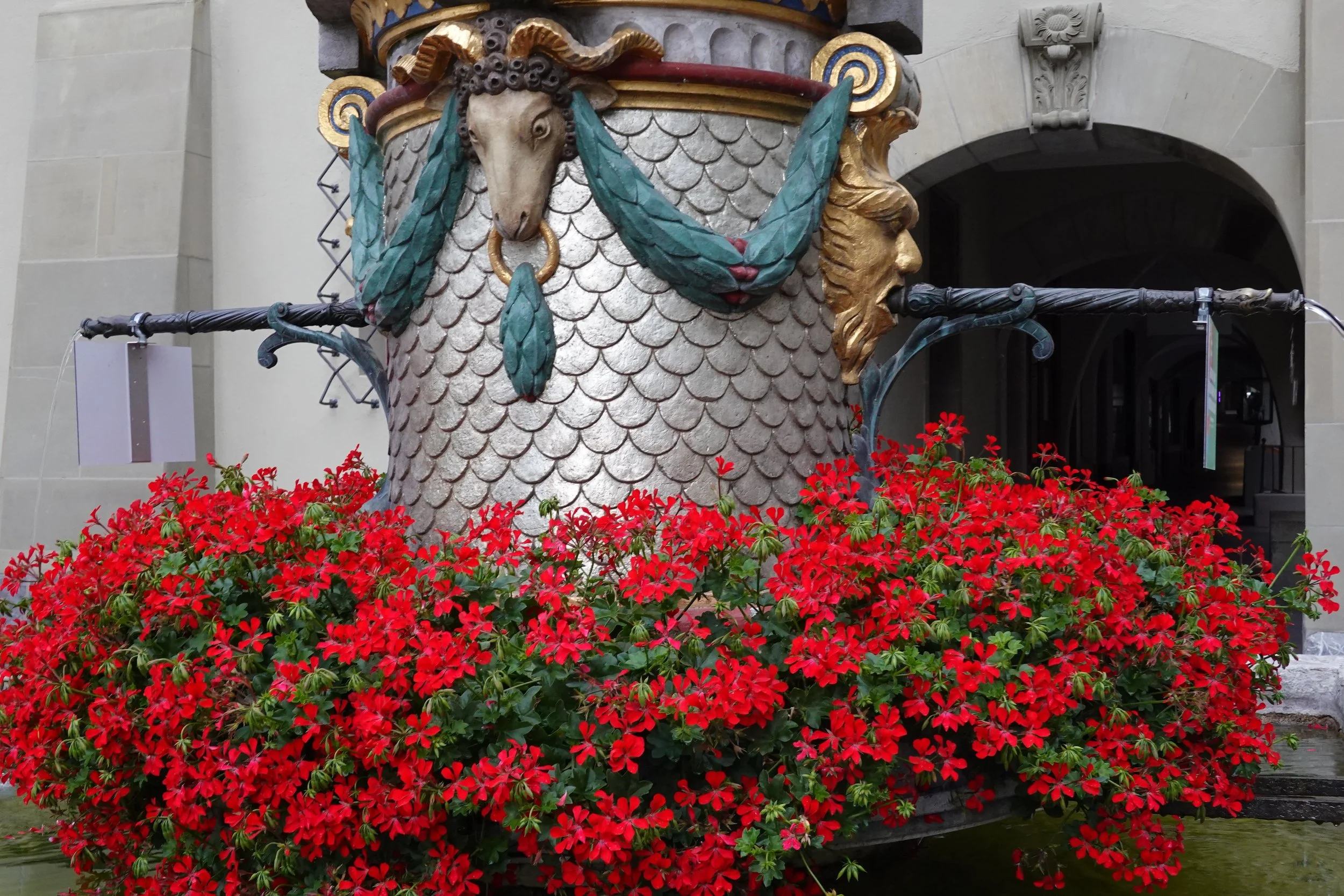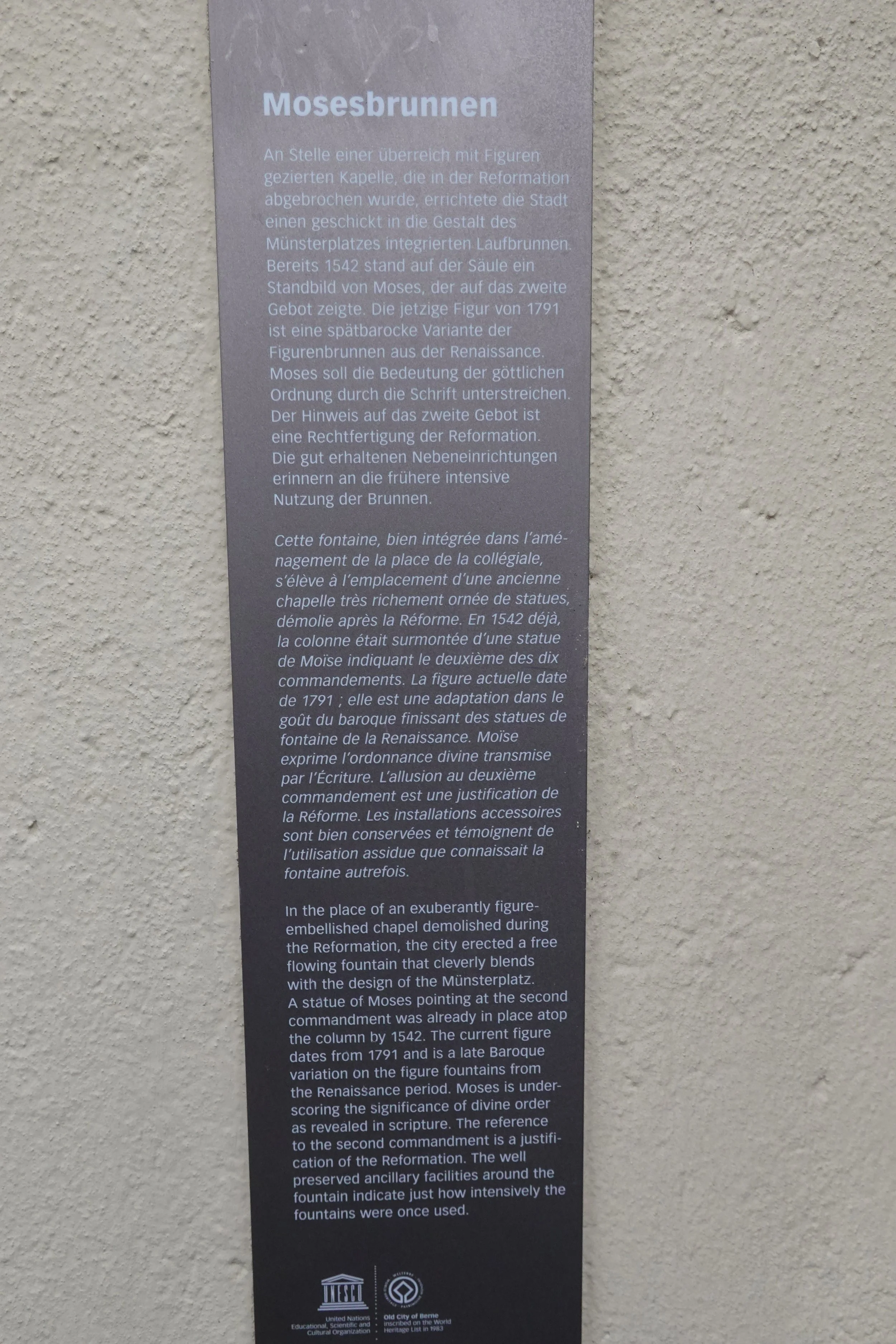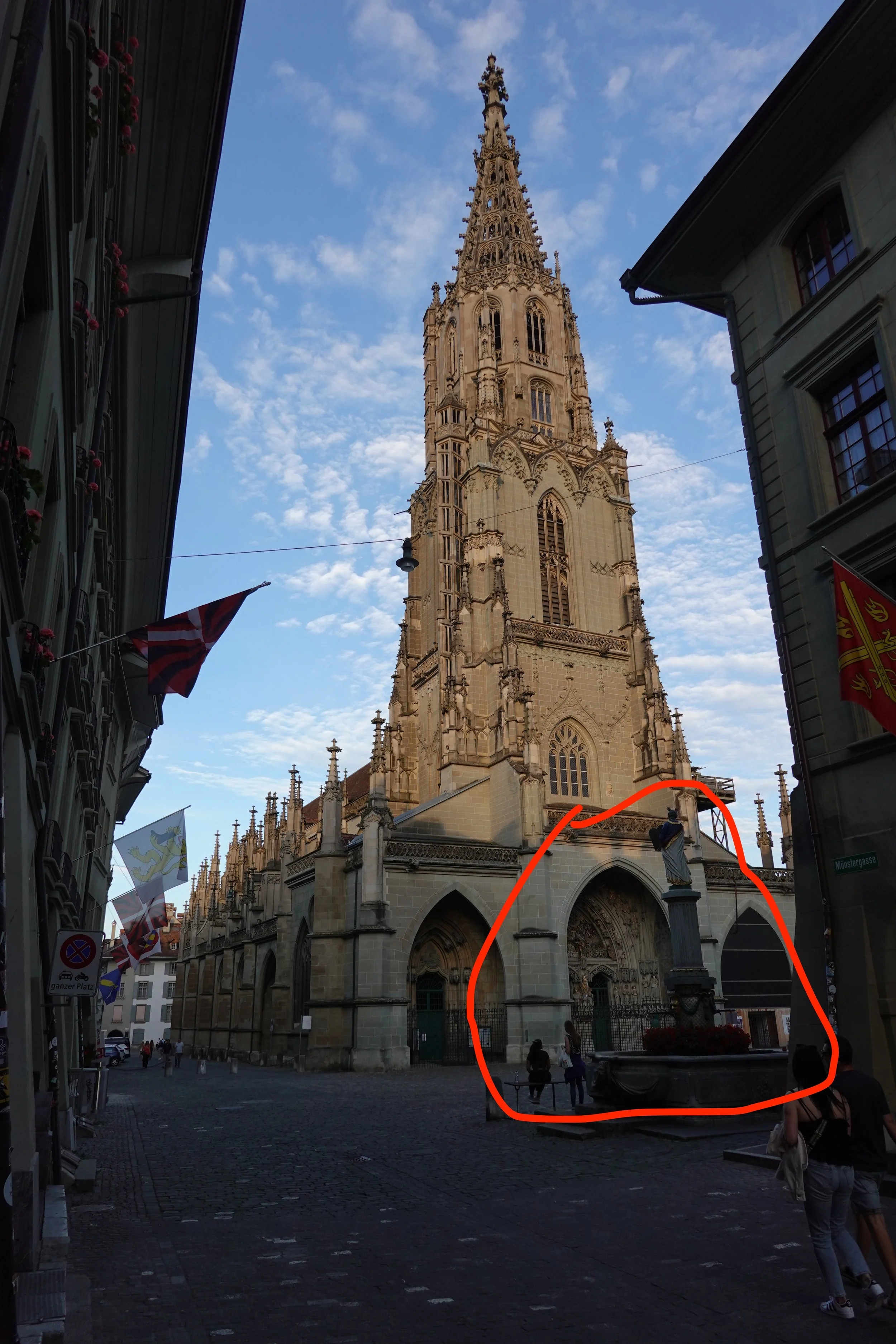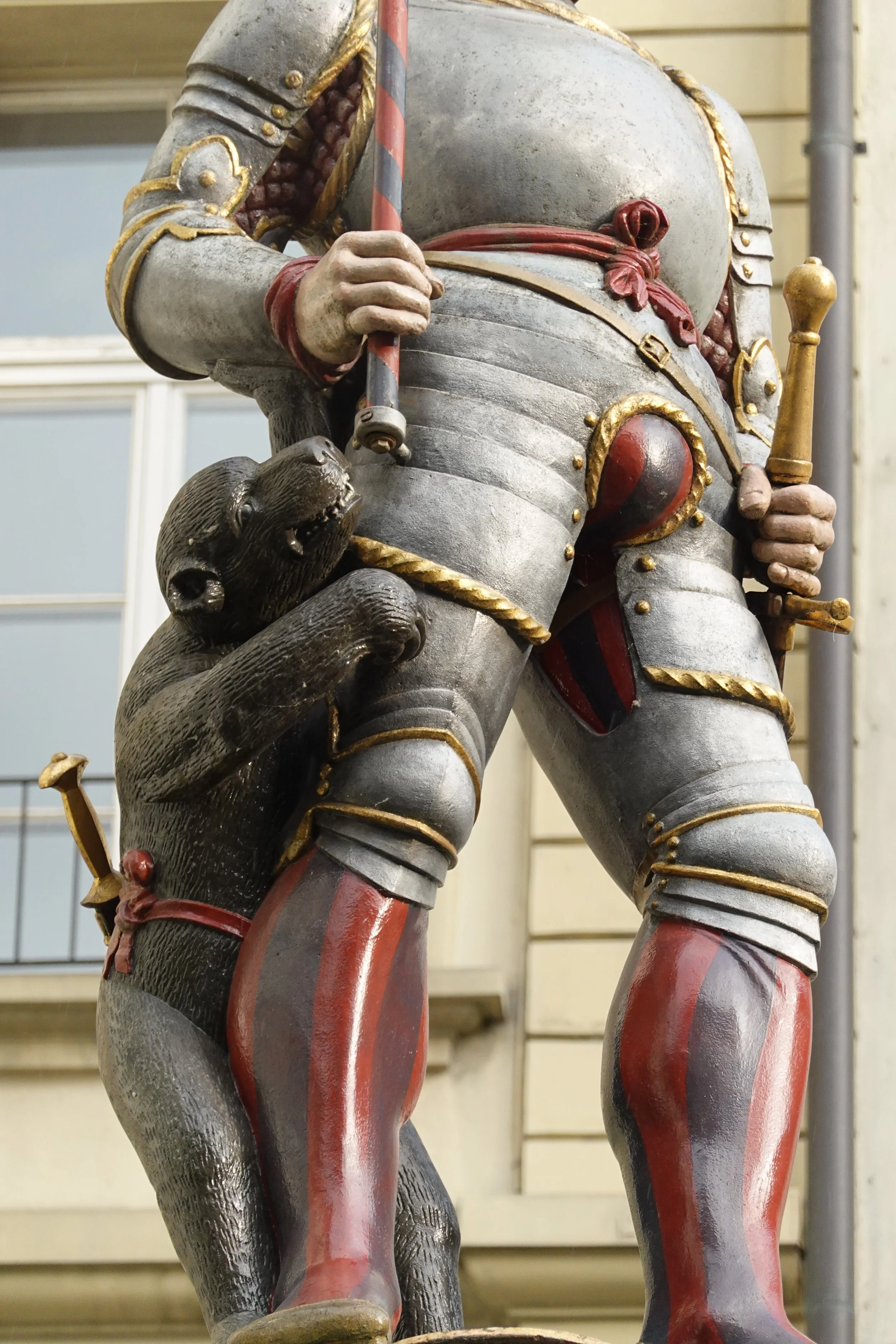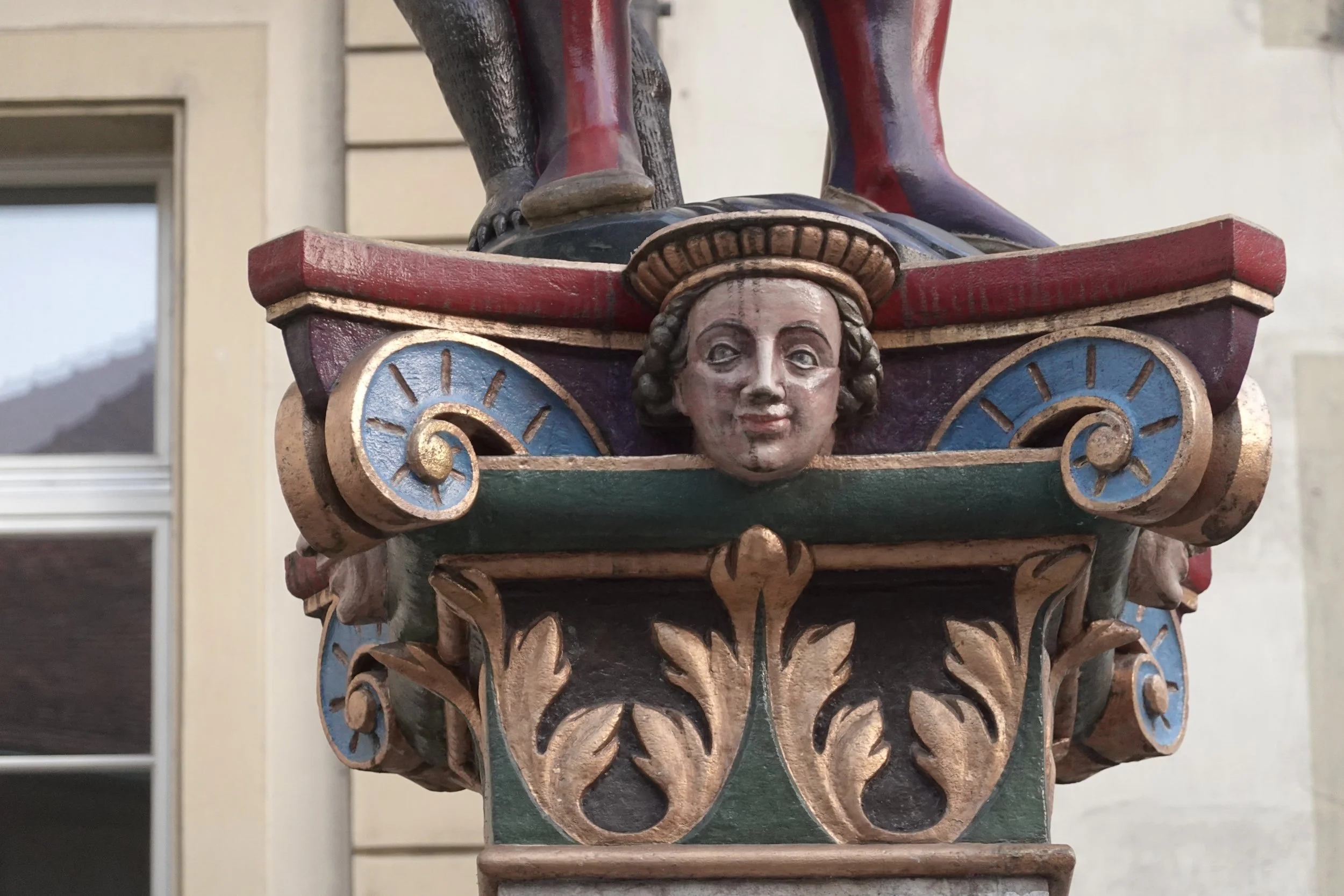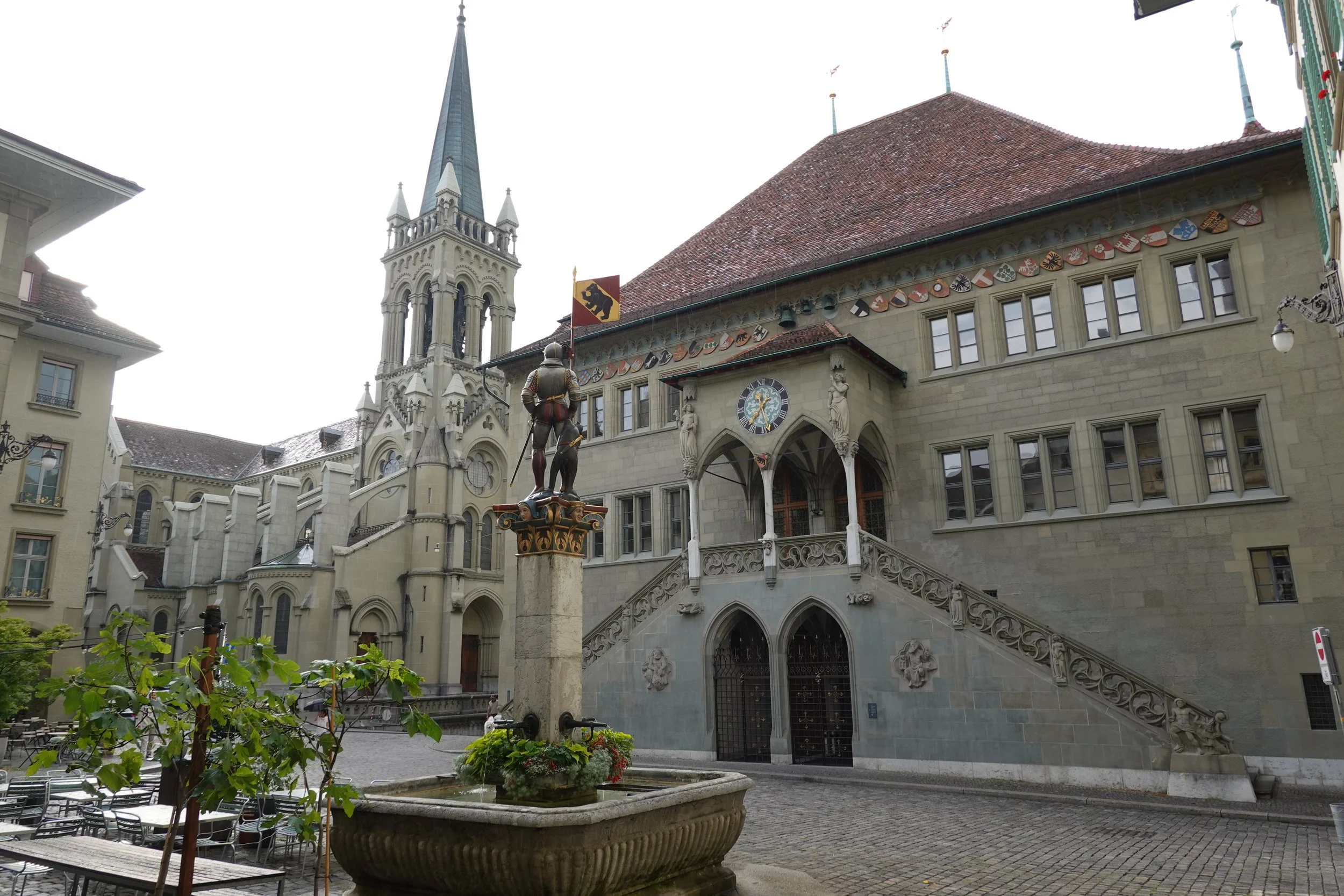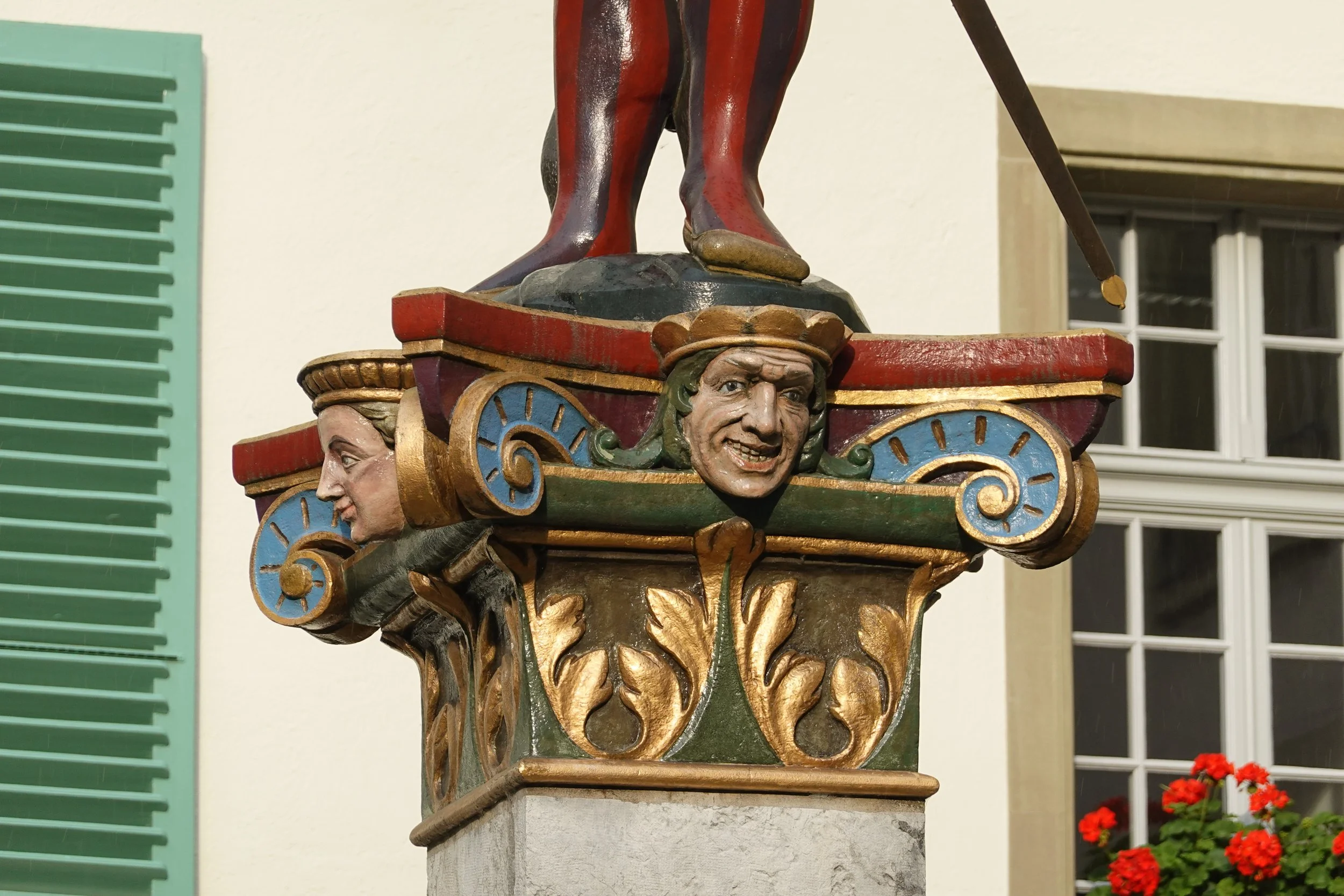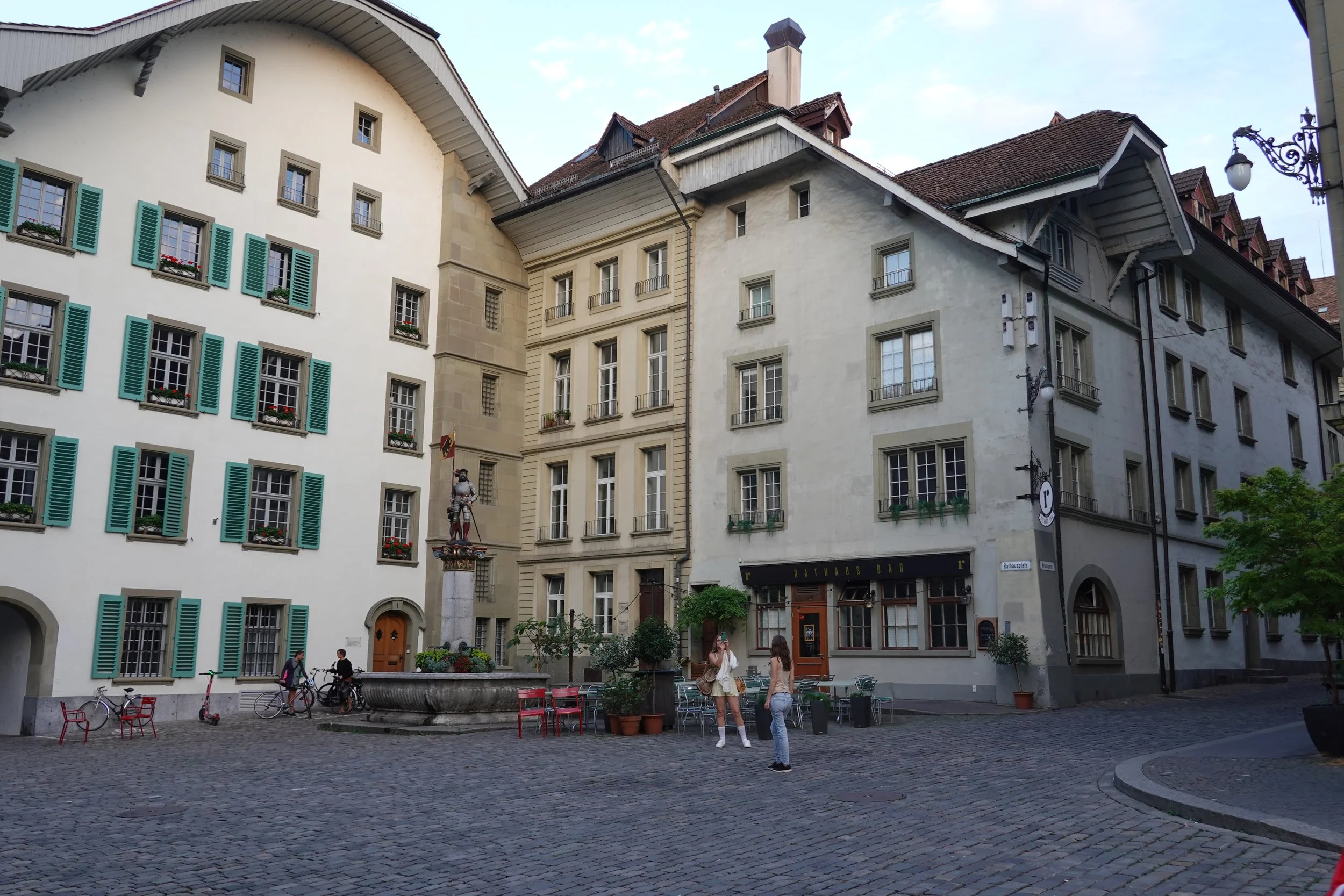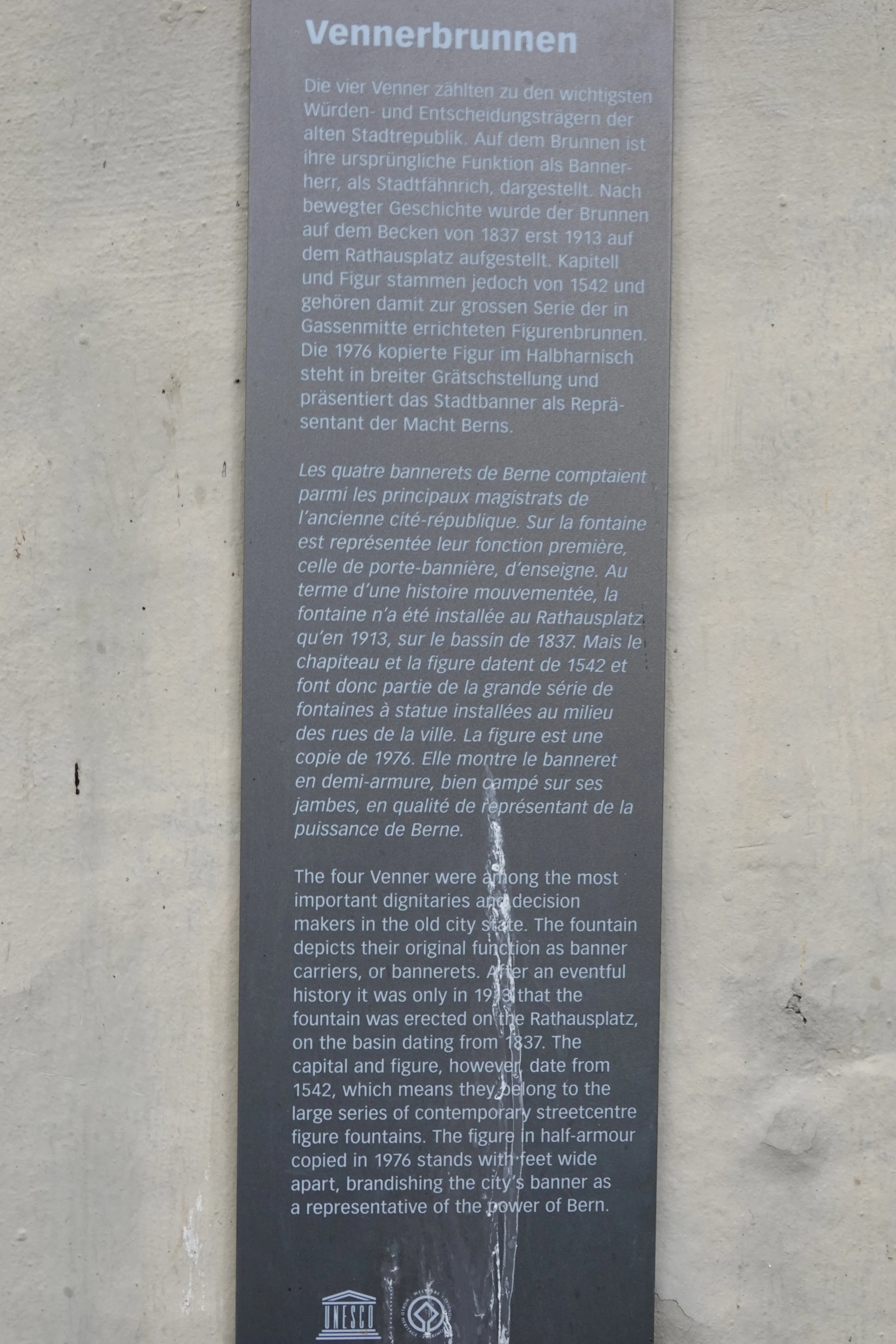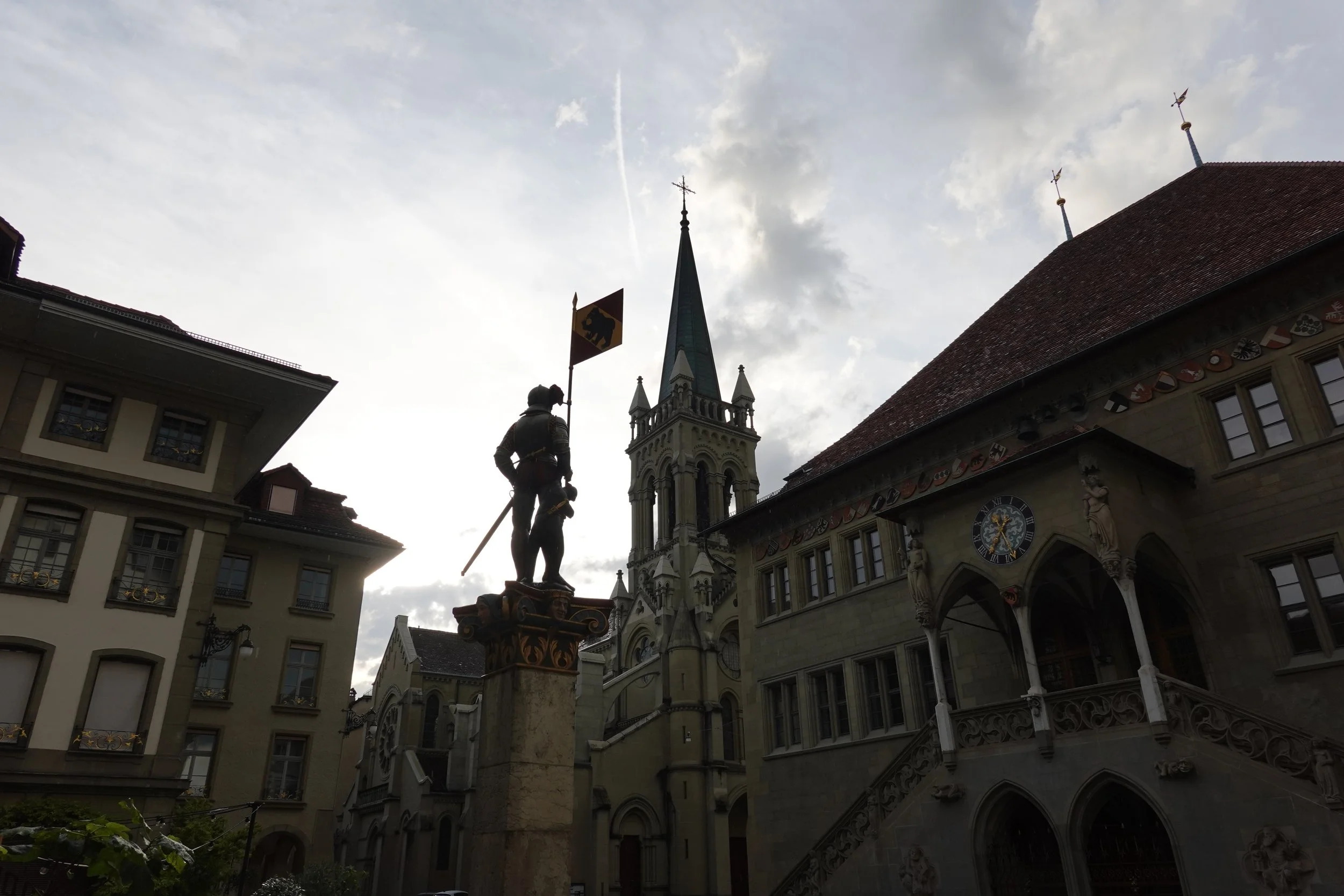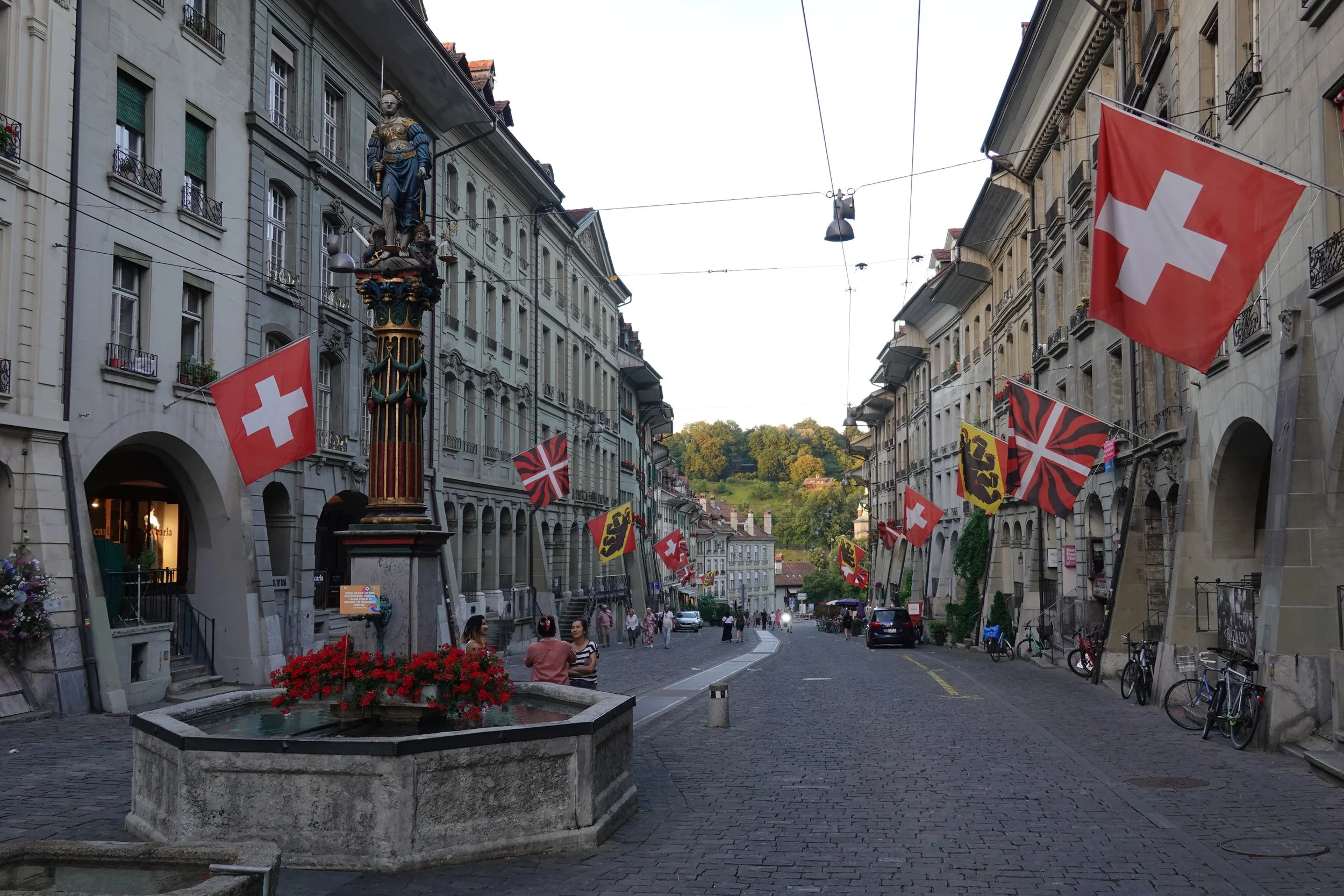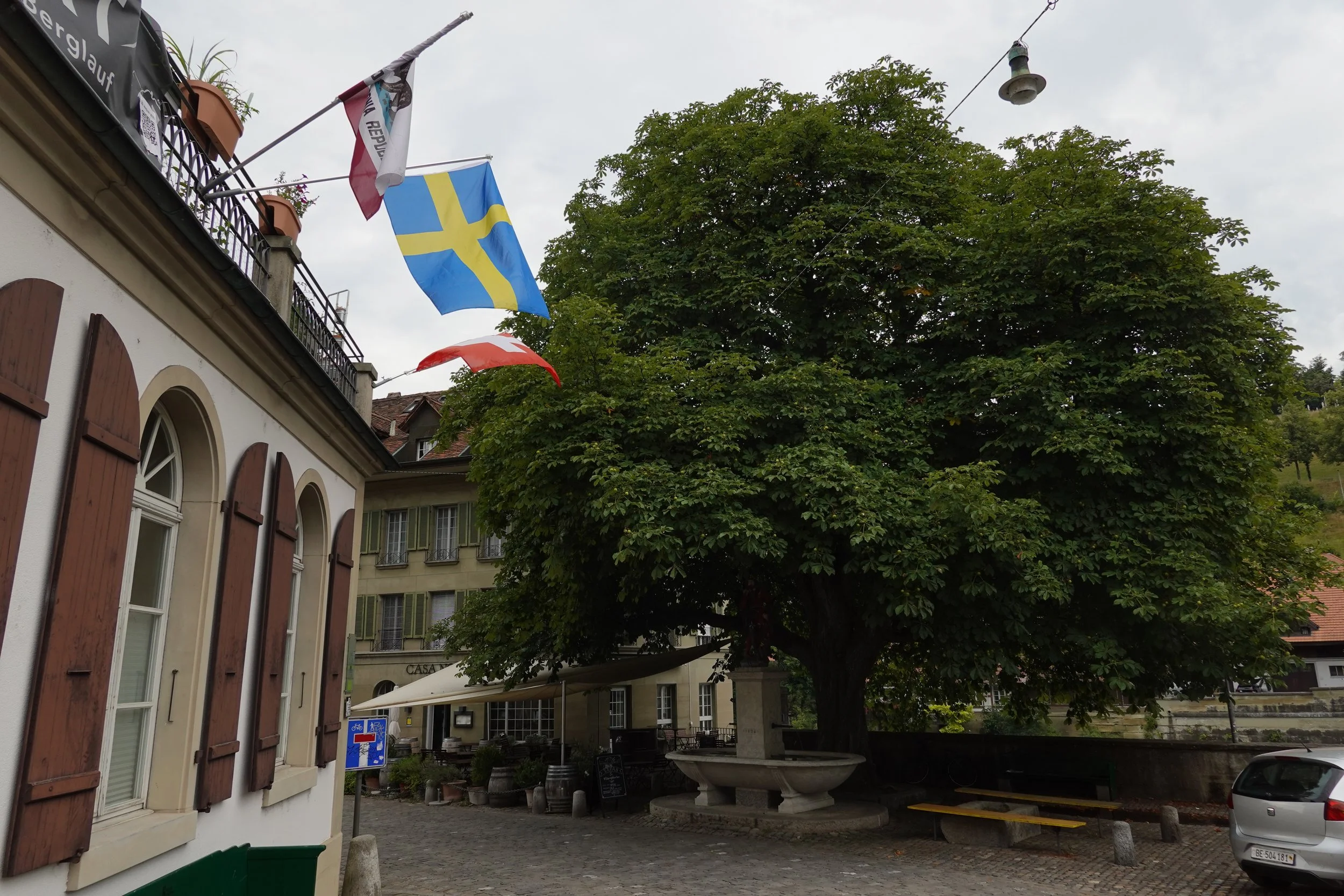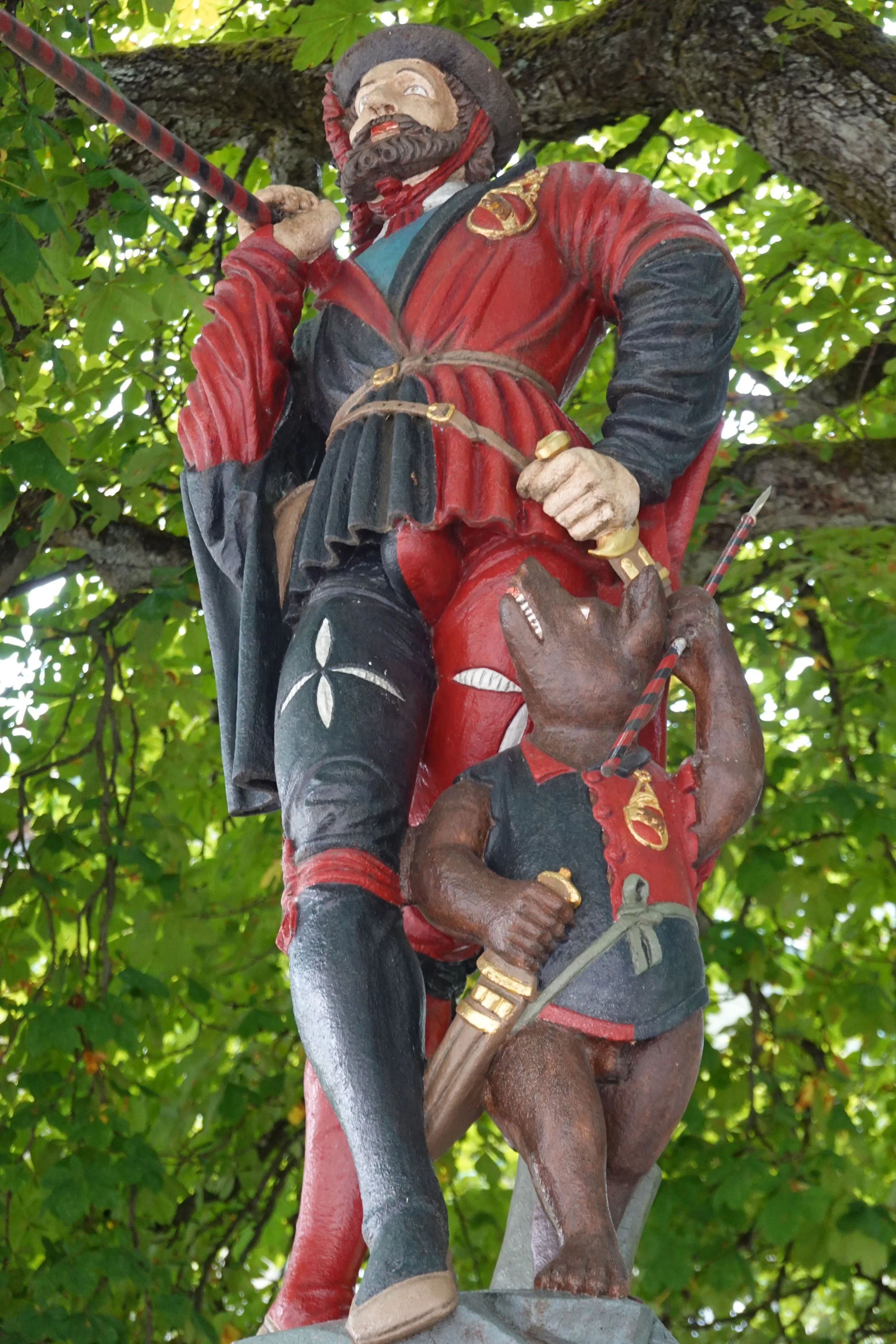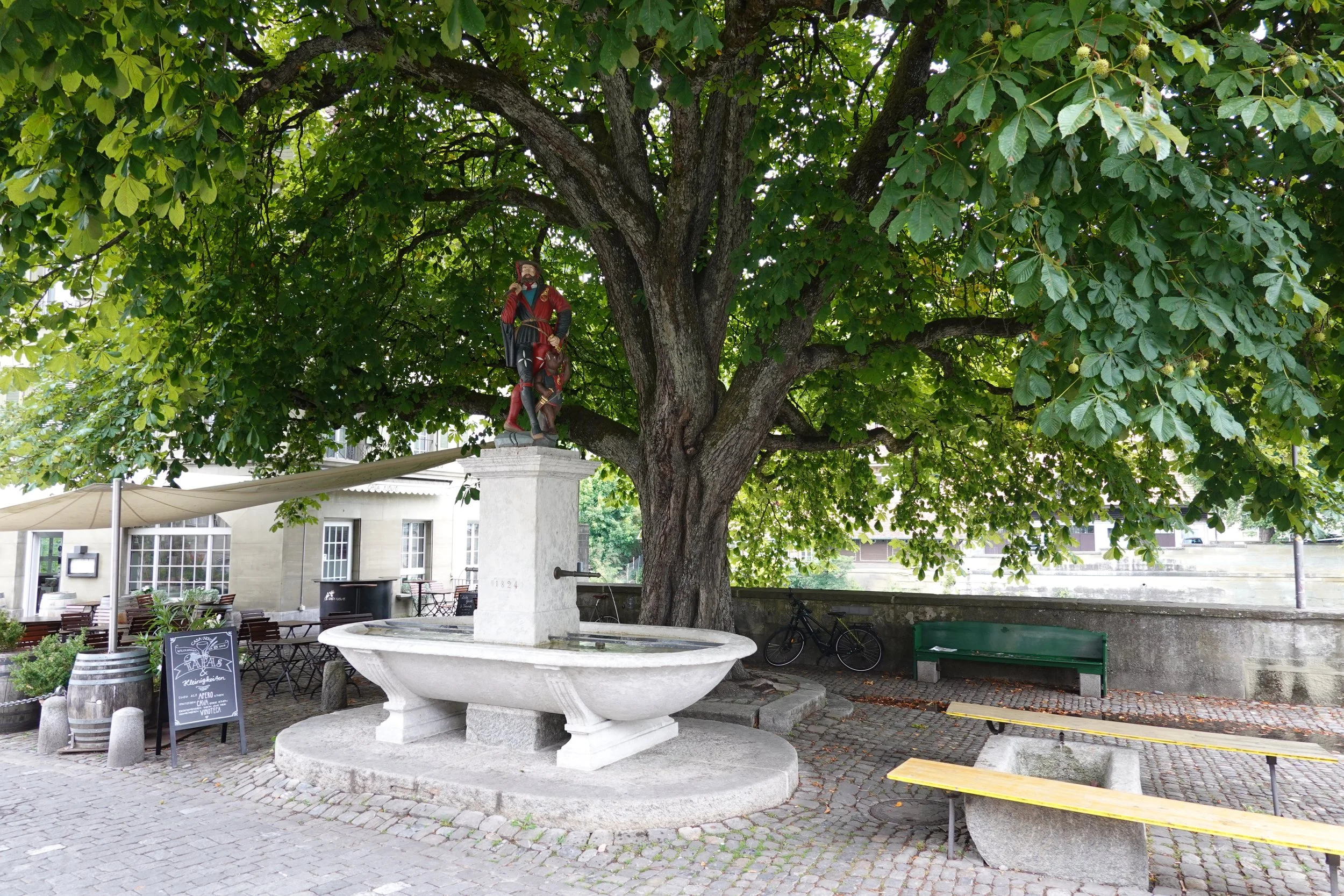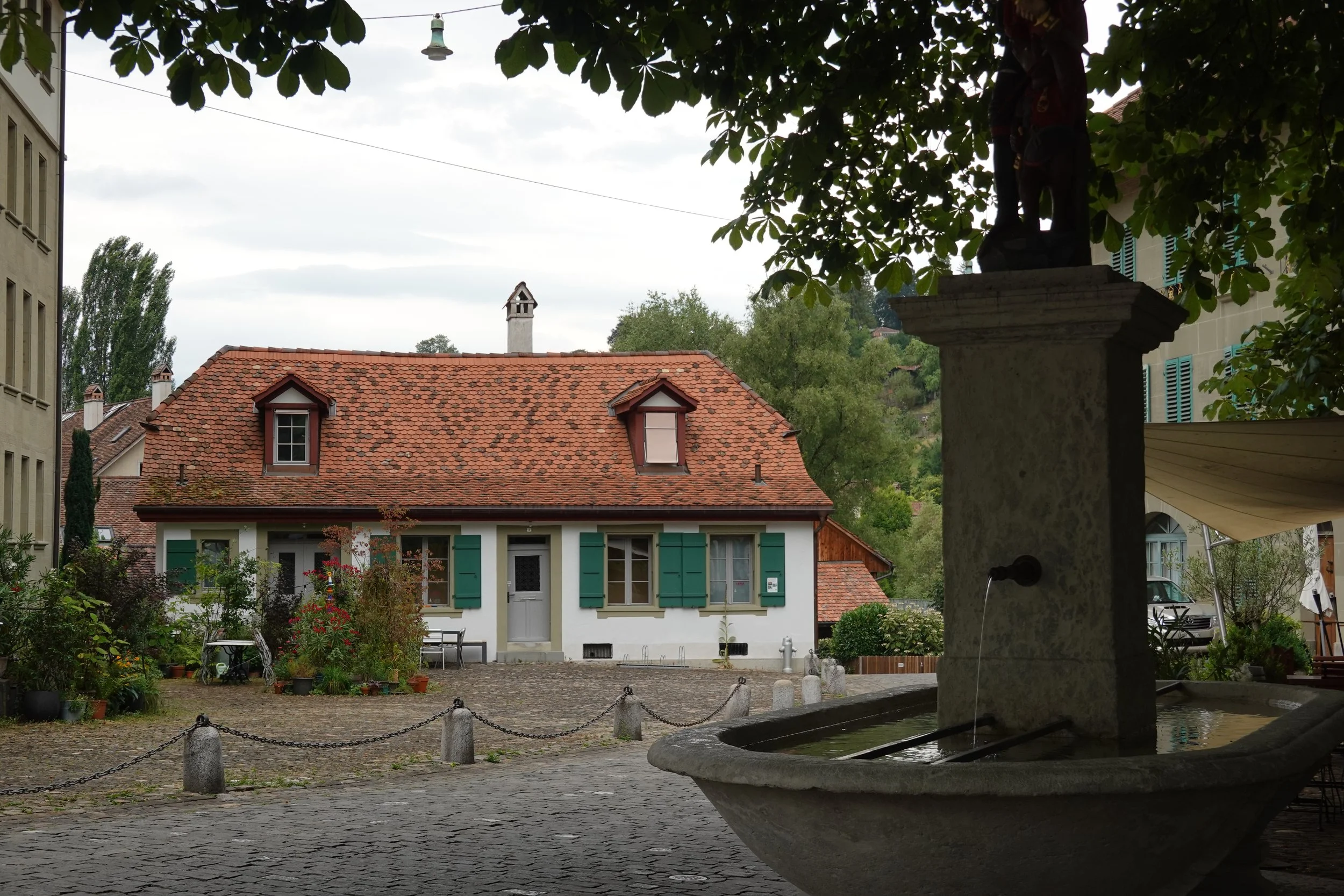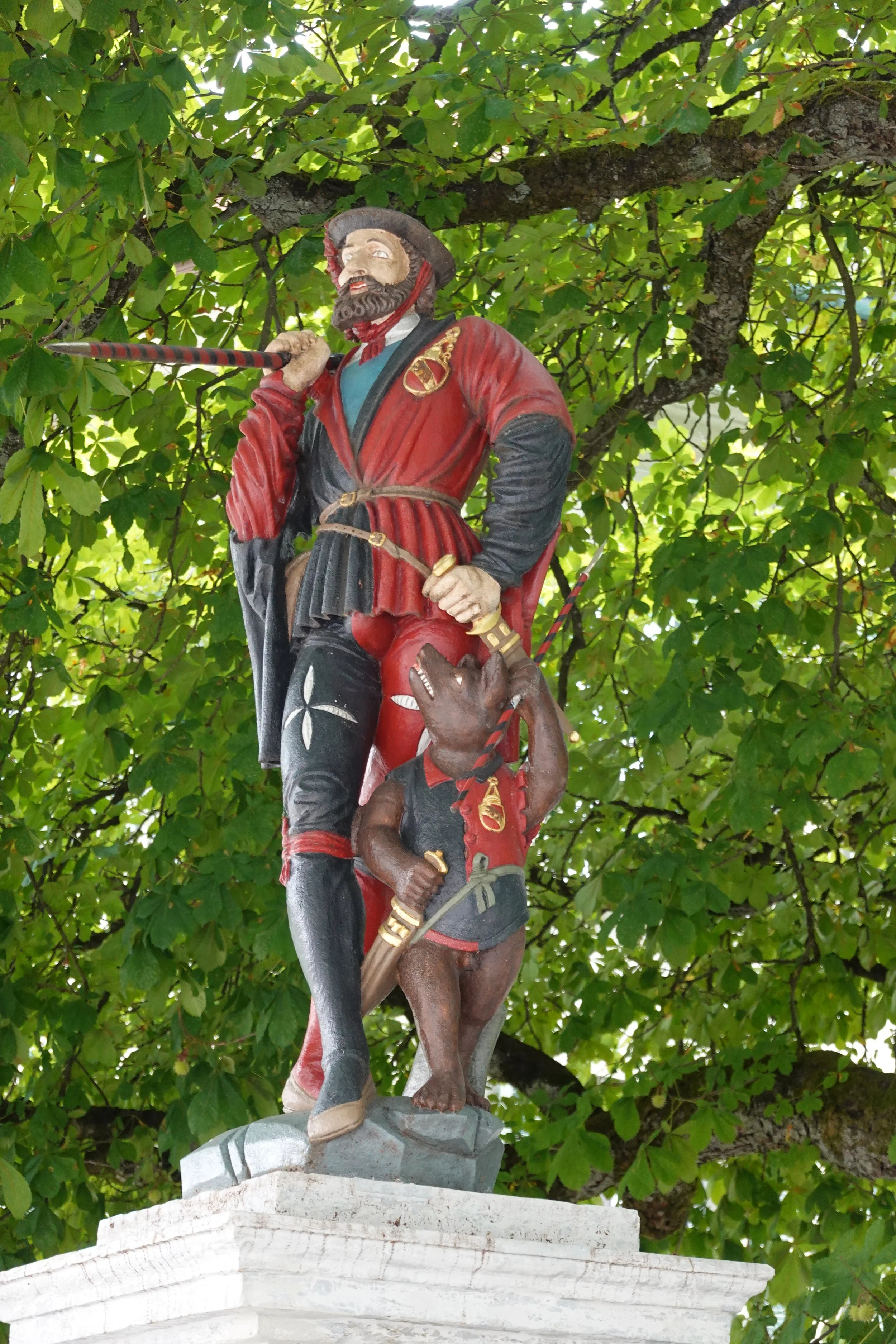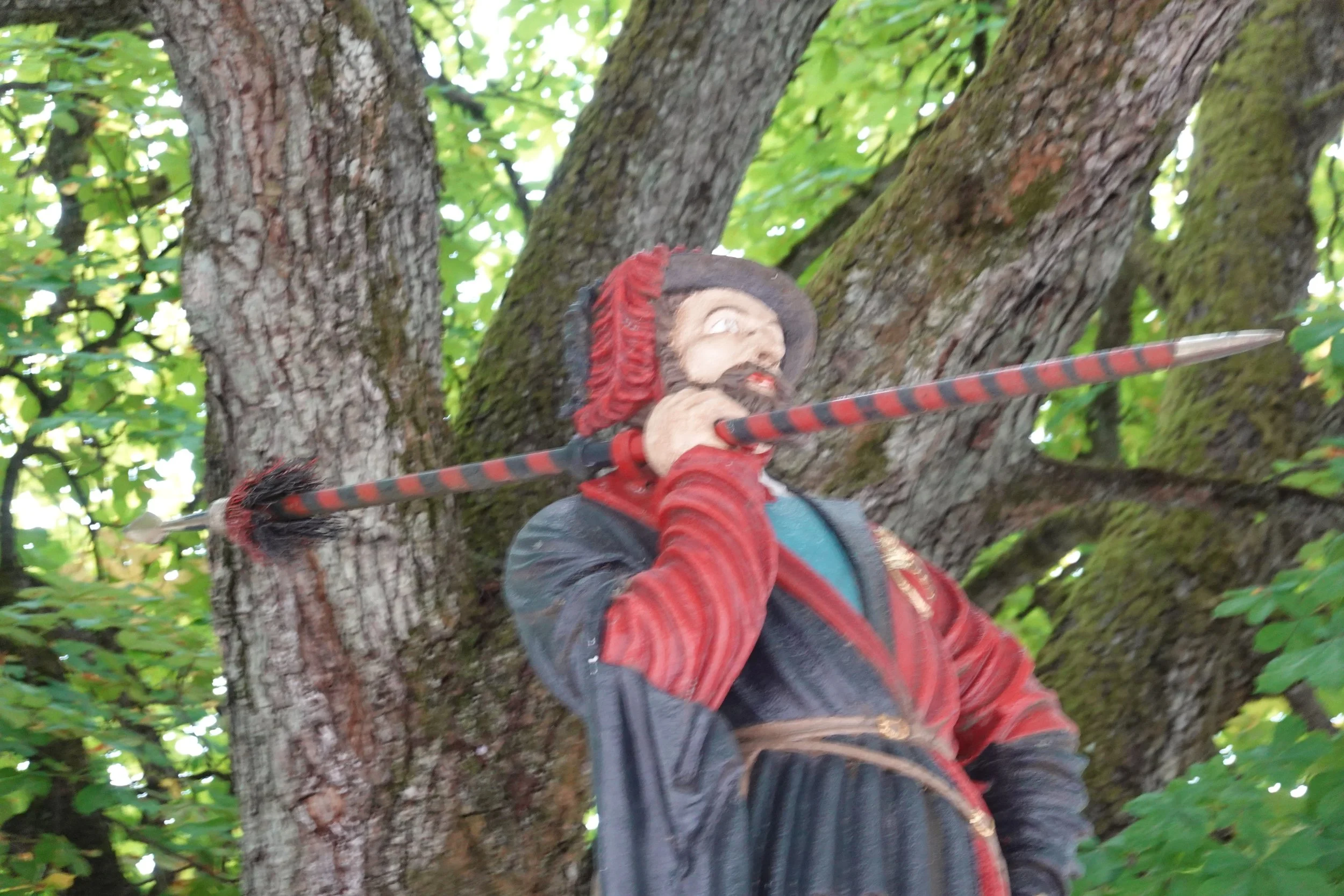Bern: A City of Founatins
Step into Bern’s Old Town and you’ll notice it’s not just full of history, it’s hydrated. The fountains of Bern’s Old Town looks like what happens when a group of drunk stonemasons, were let loose with chisels, the city’s budget and a thirst for water.
The result? Fountains. Over 100 of ‘em.
And not some dainty-ass, “throw a penny and make a wish” fountains, but Renaissance acid trips frozen in limestone. These 16th-century thirst traps were less about water and more about flexing moral superiority and medieval weirdness
Fountains, a way of Life
Long before running water meant a tap, Bernese folks were hauling their asses, (donkeys you pervert) to these fountains to fill big copper pots and buckets to wash their asses with. (no toilet paper)
Fountains were the OG gossip zones, full of passive-aggressive hausefraus and men comparing “sword” sizes and perhaps “trying each others out” under the guise of filling water.
By the 13th century, Bern’s main supply came from a creek that they used for drinking, dumping sewage, and fighting fires with glorious, swampy indifference. They had a few rustic pipes sticking out of the ground and developed a elementary underground system but around 1550, they ditched their sad little wooden fountains for glorious stone centerpieces, heroic, grotesque and unhinged statues that look like a Mardi Gras mushroom trip.
But the best part?
These things still work.
Crystal-clear, mountain-fresh Swiss water gushes out and fills your bottle straight from a 500-year-old public art piece.
I have them listed in order from the banhof to the bear cave. (Left —> right)
Jump to Fountain:
🎵 Pfeiferbrunnen
Bagpiper Fountain
⏳ Built c. 1545–1546
The bagpipe guy looks like he’s not playing music so much as seducing sound to cover up a bulging barrage of farts.
His cheeks are puffed like a man forcing out a week’s worth of barley.
His face is twisted in a half-orgasm, half “I just sharted” expression.
His outfit’s already ripped to hell and it’s not hard to imagine a geyser of gas blasting a new hole in those tights like a Renaissance whoopee cushion with legs.
🛡️ Ryfflibrunnen
Ryffli Fountain
⏳ Built c. 1545
Ryfflibrunnen is supposed to be a noble tribute to a valiant Bernese soldier, most likely a Johannes Ryffli.
Wearing a a silent panic expression as if he just realized chainmail isn’t leakproof.
Imagine the horror of trying to survive a bloody siege with explosive diarrhea and 40 pounds of steel strapped to your ass.
🐻Bärenplatzbrunnen
Bear plaza fountain
⏳ Built in 1941
“Bärenplatz” literally means “Bear Plaza,” it was once a livestock market, now it’s where you pay 6 francs for a thimble of espresso and listen to the onslaught of honking buses and trams as they scare the shit out of pedestrians.
don’t let the name fool you. There’s no bear here. Instead, what we’ve got is a chiseled, bare-assed beefcake of a man gripping a leash that’s chained to a dog zeroed in on his nethers like it’s sniffing out the a five-dollar-footlong.
🏥 Anna-Seiler-Brunnen
The Anna-Seiler-Brunnen honors one of Bern’s OG rich widows.
A miss, Anna Seiler who, in 1354, looked around at the plague corpses piling up outside her favorite bakery and the brutal medieval poverty scene and said,
“You know what? I’m gonna pay people to fix this shit.”
In her will (because heaven forbid she deal with it while she was still alive), she ordered her house turned into a hospital for the sick, the poor and anyone who got stabbed, poxed or jousted in the wrong place.
And they did.
Starting with 13 beds and a couple of caregivers armed with herbs, Hail Marys and that good-good: pure, uncut, medieval, medicine-cabinet-gold: heaven-on-earthers like codeine, laudanum and opium.
Fast-forward a few centuries, and that humble setup morphed into the Inselspital, now one of Europe’s oldest and most respected hospitals
So while the fountain may just show a polite lady standing there all serene and saintly, don’t be fooled—Anna Seiler didn’t just donate to charity, she launched a damn healthcare system in the middle of the Black Death.
So don’t be fooled, Anna didn’t lift a finger while she was alive.
She took the medieval easy route: die rich, drop a couple of “Ben Franklins” in the will, and let everyone else do the heavy lifting.
The result?
Swiss public healthcare.
⏳ Built c. 1757
Anna Seiler Fountain
🎯 Schützenbrunnen
Marksman Fountain
⏳ Built c. 1527–1543
The Schütze—Bern’s OG marksman—wasn’t some fantasy hero with a six-pack and a dramatic backstory. He was just a pissed-off local with a crossbow, a sharp eye, and a chip on his shoulder the size of the Aare. From the 1300s onward, these guys were the backbone of Bernese defense: part citizen, part soldier, part “come any closer and I’ll skewer your ass through the eyehole.”
Don’t let the statue’s chill vibe fool you. He’s not in the middle of a shot—he’s in that delicious second before the violence. That low, coiled calm that says, I could drop you... but I’m feeling polite today. It’s not a pose. It’s a message.
Crossbow tournaments back then weren’t just for applause and flower crowns. They were state-sponsored stress tests—half training drill, half testosterone opera, all aimed at keeping the city sharp and its enemies nervous. The Marksman was Bern’s subtle middle finger to anyone who thought they could sneak in and take something.
So yeah, he’s not firing. He doesn’t need to. The threat is enough. Controlled violence in tight pants: that’s the Bernese way
🏰 Kindlifresserbrunnen
Let’s not sugarcoat it: Bern proudly has a statue of a giant dude eating babies.
Like, full-on shoving one into his mouth, two in the sack and a few more dangling from his sack like terrified baguettes at a brunch from HELL.
Welcome to Bern, where civic pride smells like toddler marrow.
Now, why is this here?
Child Eater Fountain
⏳ Built c. 1545–1554
Historians have scratched their powdered heads for centuries, but the prevailing theory is that it’s a morality tale, a medieval PSA that says,
“Listen, Timmy, if you act up, the baby-devouring ogre is gonna snack on your precious little limbs.”
In the 16th century, Europe was all about visual horror as moral instruction.
you didn’t read gentle bedtime stories or use subtle symbolism.
Nor could you just post an instagram reel about sin.
No.
You carved demons into churches, painted hellfire onto ceilings and chiseled child-eating monsters in the middle of your civic squares.
The kids, shown butt-naked and mid-scream, weren’t just there for shock value (although... mission accomplished).
They symbolized innocence
A metaphor for how fast society’s purest bits can get devoured by vice, chaos or a seven-foot freak in a wizard hat if you didn’t keep your moral pants on.
The best part?
this thing wasn’t meant to be absurd, it was dead serious civic messaging, meant to haunt the little piss goblins into behaving—long before iPads, ADHD meds, or child psychologists were a thing.
So the next time someone tells you Swiss culture is all neutrality, punctual trains chocolate and polite silence,
remind them:
Bern has a 500-year-old statue of a man casually eating children, balls-deep in baby limbs... and they decorate it with flowers every spring.
🐻 Zähringerbrunnen
Zähringen Fountain
⏳ Built in 1535
The Zähringerbrunnen, finished in 1535, is Bern’s origin story poured into stone and sprinkled with a bit of medieval chest-thumping. It honors Berchtold V von Zähringen — the swaggering noble who, according to legend, rolled up to a bend in the river Aare in 1191, squinted at the landscape like a man picking out his next castle, and declared, “Yeah. Right here. Let’s build a city.”
Unlike the other fountains in town that feature child-eating ogres or biblical gym bros ripping lions in half, this one’s got a real historical figure standing tall: full armor, lion-faced helmet pulled low, sword ready-but-resting, like he’s just waiting for someone to step out of line so he can justify a noble beatdown. It’s Renaissance flexing, but tasteful. Less “bow before me” and more “I founded this place, and I’m not mad... just eternally judging you.”
But the real scene-stealer? The bear. Armored. Upright. Helmeted. Clutching a shield like he’s five seconds away from enlisting in the Swiss Guard. This isn’t just a fuzzy mascot — this bear is Bern in beast form: loyal, fierce, and absolutely ready to die for whatever flag they handed him at orientation.
Legend says Berchtold named the city after the first animal he and his hunting party stumbled upon — which turned out to be a bear. Either divine providence or dumb luck, but the bear stuck harder than a medieval STD: it’s on flags, beer steins, bank logos, and city drains. And here, in this fountain, it stands forever as Bern’s armored hype man.
Because nothing says “founding myth” like a knight, a bear, and a city that’s been walking the line between noble pride and feral chaos ever since.
🦁 Simsonbrunnen
Samson Fountain
⏳ Built c. 1527–1544
Bern historians will tell you Samson, featured here, “ripping” a lion’s jaw apart, was the Old Testament’s favorite rage machine. A man said in the Book of Judges, brought to earth through the pink gates of a barren woman and armed with nothing but absurd strength and a catastrophic weakness for women and revenge.
At his peak, he grabbed the jawbone of a donkey, yes, a literal ass skull, and used it to bludgeon 1,000 Philistines into oblivion and pulled down a pagan temple on himself with around 3,000 enemies in a final, suicidal flex.
So why did 16th-century Bern choose him?
Simple.
Post-Reformation Bern needed heroes who were holy, violent, and Catholic-free. Saints were out; Old Testament carnage was in.
Enter Samson.
The city immortalized him in stone around 1544, right after it muscled the Vaud region away from the House of Savoy, a powerful European royal dynasty full of legit royalty, dukes and counts with armies, castles and the kind of political clout that made Bern’s takeover a serious power move.
Simsonbrunnen was Bern’s way of saying: “Check mate”
🕎 Mosesbrunnen
Moses Fountain
⏳ Built c. 1544
Moses stands there with Homer Simpson energy, that slack-jawed, dumb-ass “duhhh, hey guys look at this” expression frozen in stone as he proudly points to the tablets like he just discovered fire.
The slabs are carved with Hebrew characters, almost definitely meant to be the Ten Commandments, because what better way to strut around like the original hall monitor than hauling divine legislation and snitching for God.
Plopped right next to the Bern Minster, he’s basically the poster child for moral side-eyes, reminding every medieval peasant that Big Yahweh is watching.
🛡️ Vennerbrunnen
Banneret Fountain
⏳ Built c. 1542–1543
Back in the day, every district in Bern had its own Venner, sort of like if each neighborhood had a personal watchdog in fancy tights and a superiority complex.
But the head Venner?
Basically Bern’s Batman, (if Batman wore chainmail).
This guy isn't just some medieval dude waving a flag around like a renaissance cheerleader.
This guy was the Swiss Army Knife of medieval municipal mayhem: part mayor, part militant, part nosy neighbor. except instead of a walkie-talkie he had a sword and prying eye.
Invading army?
He’d suit up and spank his fellow swordsman on the rump as they went into battle with a wink.
Fire in the marketplace? He’d piss on the ashes.
Political brawl at the cheese guild? You bet he’d show up a snag a wheel in the name of the Lord.
So next time you see this stone-faced overachiever glaring from his fountain perch, remember:
this guy was a walking contradiction of public service and casual violence
immortalized in stone because Bern loves a multitasker.
🏛️ Gerechtigkeitsbrunnen
Justice Fountain
⏳ Built c. 1543
Post-Reformation Bern had ditched Catholic saints and holy bling and suddenly needed a new way to yell, “Behave yourself!”
Enter Lady Justice.
Sword out and parked right in front of the old courthouse.
You literally had to walk past her judging ass on your way to confess you stole your neighbor’s goat.
And that blindfold?
Legal cliché 101.
Telling people that justice wasn’t about who you prayed to or who your daddy was, but rather what dumb thing you did to end up in court.
She’s not looking at you, because frankly, she doesn’t care who you are.
She’s here to bring the hammer down, one smug sinner at a time.
🏃 Läuferbrunnen
Messenger Fountain
⏳ Built c. 1545
Tucked up against the crusty old edge of Bern’s medieval walls—right where the city used to end and the wild, wolf-shit-scented trade routes began—stands the Läuferbrunnen. It's not just a fountain, it's a full-body cramp frozen in time. A man mid-stride, knees screaming, calves clenched, looking like he just realized he left his crossbow back in Lucerne.
This wiry bastard, the Läufer—or “runner”—was the original Swiss Express. No trains. No goats with saddlebags. Just one dude, usually half-starved, jogged out on dark alpine passes in rain, snow, or whatever hellscape the gods thought was funny that day. He carried battle news, royal decrees, dirty political secrets, and probably a love letter or two from some sweaty patrician with too much wine and not enough game. He was speed, duty, and desperation with a ponytail.
The Läufer wasn’t a hero. He was function incarnate. The human version of the ‘Send’ button. So next time you pass this fountain, don’t just snap a photo and move on—give the guy a nod. He ran so your ass could check emails and complain about your knees without hiking through six cantons in wooden shoes.
